- History Classics
- Your Profile
- Find History on Facebook (Opens in a new window)
- Find History on Twitter (Opens in a new window)
- Find History on YouTube (Opens in a new window)
- Find History on Instagram (Opens in a new window)
- Find History on TikTok (Opens in a new window)
- This Day In History
- History Podcasts
- History Vault

8 Ways the Original ‘Star Trek’ Made History
By: Sarah Pruitt
Updated: November 2, 2021 | Original: September 8, 2016

When "Star Trek" premiered on NBC in the fall of 1966, it promised "To boldly go where no man has gone before." More than half a century later, it has done just that. The original "Star Trek"—which lasted for only three seasons—birthed some 20 spinoff series and films; a universe of games, toys, comics and conventions; and influenced decades of science-fiction. Here are eight ways the show broke new ground.
The Center Seat: 55 Years of Star Trek premieres Friday, November 5 at 10/9c on The HISTORY ® Channel
1. A veteran of World War II, Gene Roddenberry created a show about fighting another world war—this time in space.

After piloting a B-17 bomber in the U.S. Army Air Corps during World War II , Roddenberry served in the Los Angeles Police Department before he began writing for TV. He created the short-lived series “The Lieutenant” before Desilu Studios (founded by Lucille Ball and Desi Arnaz) picked up “Star Trek” in 1966. In an era before man set foot on the moon, the show introduced us to a 23rd-century world where interplanetary travel was an established fact: Captain Kirk and the crew of the starship Enterprise (named for the real-life ship that turned the tide toward the Allies in the Battle of Midway) roamed the galaxy, clashing with alien enemies like the Klingons, Excalbians and Romulans.
2. The show’s multicultural, multiracial cast put it well ahead of its time.

In addition to the half-Vulcan Spock, the crew of the Enterprise in “Star Trek”’s debut season included Lt. Nyota Uhura (played by the African American actress Nichelle Nichols) and Lt. Hikaru Sulu (played by the Japanese American actor George Takei). In an era of mounting racial tensions, “Star Trek” presented a positive image of people of different races, genders and cultures (not to mention aliens and humans!) working together cooperatively—a somewhat utopian vision, perhaps, but a heartening one. Nichols later said that she was reportedly thinking of leaving the show after the first season, but was convinced to stay on by none other than Dr. Martin Luther King, Jr. , whom she met at a NAACP fundraiser. The civil rights leader, who admitted to being a devoted fan of the show, told Nichols that she was breaking new ground in the role of Uhura, and showing African Americans what was possible for them.
3. The original 'Star Trek' referred repeatedly to the ongoing, escalating conflict in Vietnam.

Though marketed as a classic adventure drama (Roddenberry based the character of Captain Kirk on Horatio Hornblower from C.S. Forester’s classic naval adventure series), “Star Trek” didn’t shy away from tackling moral and social issues such as war, racism and discrimination. The first season episode “Taste for Armageddon” was one of TV’s first allegories for the Vietnam War , an issue the show would return to most famously in the second season’s “A Private Little War.” In that episode, the Klingons are providing weapons to a primitive planet, and Capt. Kirk decides to do the same in order to preserve the “balance of power” on both sides. One of the most controversial plot lines of that season, the story was clearly analogous to the escalating nature of American involvement in Vietnam.
4. But it offered a positive vision for the future in the midst of Cold War tensions.

In the show’s second season, a new navigator named Pavel Andreievich Chekov showed up on the bridge of the starship Enterprise. As Roddenberry recounted in The Fifty-Year Mission , a two-volume oral history of “Star Trek” published in 2016, the character was added after the Russian newspaper Pravda pointed out that the show ignored the Soviet Union ’s pioneering contributions to space travel. But Walter Koenig, the actor who played Chekov, said the Pravda explanation was made up for publicity: The show’s producers wanted a character to appeal to a younger demographic, and just decided to make him Russian. Though a long-running theory held that the Klingons and the Federation represented the Soviet Union and the United States, two ideologically opposed superpowers, another interpretation argues that “Star Trek” functions as a critique of Cold War -era politics, by offering an optimistic vision of the future at a very uncertain moment in history.
5. It was the beneficiary of one of the most successful fan-organized letter-writing campaigns in TV history.

By late 1967, the original “Star Trek” series was struggling, and rumors flew that NBC was planning to cancel the series after only two seasons. Spurred into action, more than 100,000 fans—known as “Trekkers” or “Trekkies”—wrote letters in support of the show. In the largest of numerous protests on college campuses, 200 Caltech students marched to NBC’s Burbank, California studio wielding signs with slogans like “Draft Spock” and “Vulcan Power.” NBC eventually acknowledged the success of the fans’ campaign, announcing that the show would return for another season.
6. The show featured one of the first interracial kisses on TV.

After being “saved” by the fans, the third season of the original “Star Trek” largely bombed, but one particular moment stands out: In the episode “Plato’s Stepchildren,” Capt. Kirk kisses his communications officer, Lt. Uhura, in what is thought to be the first scripted interracial kiss on American television. Though NBC executives worried how the kiss would play on television in 1968 (especially in the South), they eventually decided to leave it in the episode, earning the show enduring fame for the barrier-breaking moment. (Though Kirk and Uhura’s liplock is often cited as the first interracial kiss on TV, a kiss between actors on the British soap opera “Emergency Ward 10” predated “Plato’s Stepchildren” by several years.)
7. It enjoyed record-breaking success in syndication post-cancellation.

Despite its cancellation after only three seasons (and 79 episodes), “Star Trek” gained new life through syndication, as the devotion of its growing fan base increased from the late 1960s and throughout the ‘70s. By 1986, nearly two decades after it entered syndication, A.C. Nielsen Co. listed “Star Trek: The Original Series” as the No. 1 syndicated show. That same year, Roddenberry launched a second TV series, “Star Trek: The Next Generation,” which was immediately syndicated and became a ratings hit. Meanwhile, “Star Trek: The Motion Picture” had grossed more than $80 million in 1979, leading to several more movies in the ‘80s and ‘90s, followed by a 21st-century “reboot” of the series starting in 2009. Trekkie enthusiasm fueled the success of comic books, cartoons, novels, action figures and other merchandise based on the series, as well as Star Trek-themed conventions attended by thousands at hotels and other venues around the world.
8. Thanks to 'Star Trek' fans, America’s first space shuttle orbiter was christened Enterprise.

In 1976, hundreds of thousands of Trekkies wrote impassioned letters to NASA arguing that the first space shuttle orbiter should be named after the starship Enterprise. Though he never mentioned the letter campaign, President Gerald R. Ford expressed his preference for the name “Enterprise,” with its hallowed Navy history, and the space administration’s officials ended up dropping their original choice, Constitution. Roddenberry and many original “Star Trek” cast members were on hand to greet the shuttle when it rolled out of the manufacturing facilities in Palmdale, California for its dedication ceremony in September 1976. Though Enterprise was used in a number of flight tests, it was never launched into space, and spent much of its life in storage.

Sign up for Inside History
Get HISTORY’s most fascinating stories delivered to your inbox three times a week.
By submitting your information, you agree to receive emails from HISTORY and A+E Networks. You can opt out at any time. You must be 16 years or older and a resident of the United States.
More details : Privacy Notice | Terms of Use | Contact Us
20 Enterprising Facts About Star Trek
By bryan reesman | sep 8, 2021, 4:00 pm edt.

NBC Television, Public Domain, Wikimedia Commons
On September 8, 1966, Gene Roddenberry's galaxy spanning Star Trek saga debuted on NBC and helped transform sci-fi television from tired stereotypes into a genre rich with multi-layered drama, ethnically diverse characters, and real world issues. While it wasn't a big hit at the time, Star Trek eventually developed a loyal following that continued through an animated series, the long-running film franchise, and other live-action television series from the late 1980s onward. The show sometimes hired iconic sci-fi writers including Richard Matheson, Robert Bloch, Theodore Sturgeon, and Harlan Ellison (who won a Hugo Award for his episode, " City On The Edge Of Forever "), while Isaac Asimov developed a friendship with Roddenberry.
To commemorate this momentous occasion, let's look back at the groundbreaking series, during which the crew of the Enterprise journeyed on far-flung peacekeeping and rescue missions, answered distress calls on distant planets, and faced confrontations with warmongering aliens. There has been plenty written about this iconic show, but there always seems to be something new to learn.
1. Captain Pike preceded Captain Kirk.
The unaired pilot “The Cage” (which finally debuted on home video in 1986) featured an almost entirely different cast and crew, with Mr. Spock being the lone holdover on the bridge when the classic team appeared in the first official episode. Jeffrey Hunter ( The Searchers ) starred as Captain Christopher Pike, who gets abducted by telepathic aliens for psychological experiments involving a human woman. The original pilot was actually pretty good, but the cast lacked the same warmth and diversity that would ultimately emerge. When the studio rejected the original pilot—allegedly for being too cerebral and lacking in action—creator Gene Roddenberry sought to make another, but Hunter chose to move on to other projects. In the end, it was good that NBC rejected the original pilot, because the show was revamped into something much stronger.
2. Captain Pike returned for two episodes and the Star Trek movie reboot.
Several episodes in, the producers of Star Trek created a two-part episode called “The Menagerie” that utilized much of the original pilot. Mr. Spock was taking a now battle-scarred and disfigured Captain Pike back to the planet Talos IV (which was off limits to Federation vessels) for unknown reasons, and he would not reveal why until he seized control of the Enterprise and faced a court-martial. It was a clever and cost-effective way to reuse the unaired material and craft a new storyline. In J.J. Abrams' 2009 movie reboot, writers Roberto Orci and Alex Kurtzman brought back Pike (played by Bruce Greenwood) as Kirk’s superior officer and mentor on his first mission in space. It was a nice nod to the original series.
3. Star Trek ’s original number one was a woman.
In the original pilot, Gene Roddenberry’s girlfriend and future wife, Majel Barrett, was Kirk’s first officer (who still had to deal with the Captain’s presumptions about women on the bridge). Test audiences allegedly did not like her character because they thought she was too pushy and tried to be like the men, but modern audiences would not think of any of those things. When Pike was kidnapped, she led a mission to the planet to rescue him and proved herself to be a capable leader, but this was about a year before the women's liberation movement began gestating in America. The Star Trek universe finally got its first female captain with Captain Kathryn Janeway in Star Trek: Voyager , which aired between 1995 and 2001.
4. Majel Barrett Roddenberry worked on every Star Trek series.
Majel Barrett Roddenberry returned in many episodes of the original series to play Nurse Christine Chapel, who had unrequited romantic feelings toward Mr. Spock. She played a more nurturing character, but did not have the command duties of her original role. Following that, Barrett Roddenberry—who has been called “The First Lady Of Star Trek ”—had roles in every Star Trek series, playing Nurse Chapel, Lt. M'Ress, and other characters on Star Trek: The Animated Series ; Lwaxana Troi and the voice of the Enterprise Computer on Star Trek: The Next Generation ; and the computer voices on Deep Space Nine , Voyager , and Enterprise . She also appeared as Dr. Chapel in Star Trek: The Motion Picture and as Commander Chapel in Star Trek IV: The Voyage Home , and she provided voice work to other films (including the 2009 reboot) and various video games. After her husband died in 1991, Barrett Roddenberry served as executive producer on two series he had created: Earth: Final Conflict (1997-1999) and Andromeda (2000-2005). She passed away in 2008, but not before recording—you guessed it—the Starfleet Computer voice for J.J. Abrams's 2009 movie reboot.
5. Kirk had a dark past before Star Trek.
Prior to venturing into space and encountering all sorts of intergalactic nemeses like the Romulans, Klingons, and the superhuman Khan, William Shatner appeared in a variety of dark film and television projects. In Roger Corman’s underrated film The Intruder , he played a racist agitator in a Southern town who pushes things too far. In Incubus , a film shot entirely in the Esperanto language , he played a good-hearted man with whom a succubus falls in love, angering her sister and setting about retribution. His appearance as a man terrified of a gremlin on the wing of a plane in an episode of The Twilight Zone is famous, but he also made a turn in possibly the best horror TV episode ever, “The Grim Reaper” on Thriller , as a man who warns his aunt that the previous owners of the portrait of the titular character, which she now owns, have died violently.
6. Star Trek ’s Spock has greenish skin, but it was originally meant to be red.
While Spock’s skin has a slight green tint to it, the original plan was to give him red skin. But back in the mid- to late 1960s, a majority of households still had black and white televisions, so his skin would appear very dark when viewed on their sets. In one early episode, however, Spock looked really green. Someone messed up the color palette that day. One wonders if the chance to see the shows in color during their subsequent syndicated runs helped lure new viewers and give excited longtime fans the chance to re-watch the episodes in a way they had never seen them before.
7. William Shatner and Leonard Nimoy both got tinnitus on the set of Star Trek .
After an explosion on the set of one of the Star Trek films, both stars developed tinnitus, a ringing or buzzing in the ears than is often permanent and can be debilitating for some sufferers. After seeking help all across the country, Shatner learned to deal with it through habituation by wearing a hearing device for a time that produced white noise to help him cope. He has helped others as well. "I’ve talked people down from suicide," Shatner told me in an interview for The Aquarian . "A famous musician got a hold of me cold. I didn’t know him. He knew I got it because I was the official spokesman for tinnitus at one period, and I talked him down and encouraged him to do habituation, you know, the white sound, because when I was asked when I first got it how it affected my life from 1 to 10, it was 9 1/2. Now I don’t hear it except when you and I are talking about it."
8. A lot of Star Trek technology became reality.
If one looks at the original series, much of the technology being used ultimately became real. The communicators are like modern cell phones, the earpieces worn by Uhura and Spock are basically Bluetooth devices, the Universal Translators are echoed by the use of modern voice recognition software, tricorders have become the LOCAD-PTS , a portable biological lab used by NASA, and the use of interactive video screens (telepresence) is akin to current video conferencing. While Enterprise crew members recorded audio on hard-cased cassette tapes, they looked like soon-to-be modern floppy discs, which are now outdated in our digital era.
9. There have been more than 125 Star Trek -related video games.
Since 1971, more than 125 video games based on or inspired by the Star Trek series have been created, beginning with a text game written in BASIC in 1971, a standup arcade game in 1972, and later early computer and gaming systems like the Commodore 64 and Atari 5200 through to modern PS3 and Xbox 360 consoles. Many of the titles are quite colorful, like The Kobayashi Alternative , Klingon Honor Guard , and Delta Vega: Meltdown on the Ice Planet . It would probably be hard to collect them all at this point—or to be able to play them, unless one owns all the various video game platforms required—but perhaps someone has.
10. Star Trek ’s Vulcan salute is actually a Hebrew blessing.
Leonard Nimoy did not create the Vulcan salute that means "Live Long and Prosper" out of thin air for the season two opener "Amok Time," which was the first time we got to see Spock among his people on Vulcan. It was actually borrowed from something he had witnessed as a child when he was attending a service at an Orthodox Jewish synagogue with his family.
"Five or six guys get up on the bimah, the stage, facing the congregation," Nimoy told the Yiddish Book Center in 2014. "They get their tallits over their heads, and they start this chanting—I think it's called duchening —and my father said to me, 'Don’t look.' So everyone’s got their eyes covered with their hands or they've got their tallit down over their faces ... And I hear this strange sound coming from them. They’re not singers, they were shouters. And dissonant. It was all discordant … it was chilling. I thought, 'Whoa, something major is happening here.' So I peeked. And I saw them with their hands stuck out from beneath the tallit like this [ does salute with both hands ] towards the congregation. Wow. Something really got hold of me. I had no idea what was going on, but the sound of it and the look of it was magical.”
The hand gesture represents the Hebrew letter Shin, which represents the word Shaddai , a name for God. It looks like a lot of people have been blessing each other without knowing it.
11. Star Trek ’s Kirk/Spock connection continued in real life.
The bond that Captain Kirk and Mr. Spock enjoyed throughout their long onscreen association was also echoed by William Shatner and Leonard Nimoy's off-camera relationship. It's interesting to note that while Spock seemed like the more isolated member of the crew who needed that human connection with Kirk, in real life Nimoy was an important person for his co-star. In a 2016 interview with The Aquarian , Shatner admitted that he never had had a close, intimate friendship with anyone before then. "I had that with Leonard, and that was the only time I had it," he confessed. "I envied it for the longest time, achieved it, then the book [ Leonard: My Fifty-Year Friendship with a Remarkable Man ] continues on. It’s a very interesting aspect of life, developing a friendship. Not the 'Let’s go get a beer' friendship, but deep, deep down, 'Here’s my problem, I need your help.'"
12. In a way, Star Trek was the original Buffy The Vampire Slayer .
Despite not really having many ass-kicking women on the original show, Star Trek was the predecessor to Buffy the Vampire Slayer , Angel , and like-minded shows that were not ratings toppers, but which hit a key demographic effectively every week. When Roddenberry's show was canceled after just three seasons, the advertising people at NBC allegedly complained to programming executives because, while the show was not highly rated, they were reaching the target audience they wanted. That statement is supported by the success that the series experienced in off-network syndication, especially since the show's three seasons (1966-1969) were one shy of what was generally required for daily syndication, and the emergence of the first Star Trek convention in January 1972. Today, a show like Star Trek would have likely lasted at least twice as long.
13. One of Bones's signature Star Trek lines was taken from a 1933 movie.
"I'm a doctor, not a bricklayer!" Bones was always making a variation on that gripe when asked to ascertain or do something outside of his medical expertise, and it is one of many Star Trek lines that has become a permanent part of pop culture lexicon. However, the idea originated with a 1933 film called The Kennel Murder Case , which starred William Powell and Mary Astor. In the film, the character of Dr. Doremus utters these quips: "I'm a doctor, not a magician." "I'm a doctor, not a detective." "I'm the city butcher, not a detective." Bones McCoy had many variations to offer throughout the Star Trek TV and film series, and he certainly made the gag his own.
14. Star Trek has a connection to Stanley Kubrick.
Before he appeared as an astronaut on the Jupiter mission sequence of Stanley Kubrick’s classic sci-fi film 2001: A Space Odyssey , Gary Lockwood appeared in the episode " Where No Man Has Gone Before ," which was the third episode of season one. His character attained godlike powers that made him drunk with power and posed a grave threat not just to the Enterprise , but to the galaxy itself.
15. Star Trek strived for ethnic and gender diversity, but the women still had to look sexy.

While Gene Roddenberry strived to push boundaries as much as he could, women were still sexed up for the show. Consider that Lieutenant Uhura, Yeoman Rand, Nurse Chapel, Dr. Helen Noel, and other female members of the Enterprise crew all wore mini-dresses. Further, close-ups of the female crewmembers were given a slightly softer focus to make them look dreamier, which was a common Hollywood trick at that time. While some of the female characters were strong, others—like Lt. Marla McGivers in the "Space Seed" episode—were rather frail when it came to men. Things got better for women in later Star Trek series, but then they came about in more enlightened times.
16. Many of the effects in the original Star Trek series were upgraded for HD broadcast and release in 2006.
When Star Trek: The Original Series was being prepared for its initial HD broadcast (and subsequent HD-DVD release) for the fall of 2006, Paramount decided to take a chance and upgrade all of the sequences involving the Enterprise flying and any background shots of space or environmental matte paintings. While some fans (and Leonard Nimoy , at least at first) thought this was heresy, visual effects producer Michael Okuda—who had been involved with the franchise since Star Trek V: The Final Frontier —made sure that the new CGI sequences and backgrounds were integrated smoothly with the old footage.
17. Mark Lenard was a Romulan, a Klingon, and a Vulcan on Star Trek .
Actor Mark Lenard had a dramatic visage that lent itself well to space opera, and he was the first actor in the franchise’s history to have played members of three different alien races. In the season one episode "Balance Of Terror," he played the Captain of an ultimately doomed Romulan vessel that has invaded Federation territory. In the opening to Star Trek: The Motion Picture , he plays a Klingon commander on a doomed ship caught in the path of the mysterious cloud that is wiping out anything in its path. But his biggest role in the franchise was portraying Spock’s father, Sarek, in the second season episode "Journey To Babel," the Animated Series episode "Yesteryear," and in the third, fourth, and sixth Star Trek films.
18. Malcolm McDowell received death threats after killing Captain Kirk onscreen.
McDowell played the charmingly misanthropic droog Alex DeLarge in Stanley Kubrick’s A Clockwork Orange , but he was on the receiving end of Star Trek fans’ wrath when his character, Dr. Tolian Soran, killed Captain Kirk in Star Trek: Generations— the first film born from the Star Trek: The Next Generation series that bridged the two series onscreen. In 2010, McDowell admitted that he was shocked at the vitriol of devout Trekkies—and that he actually received death threats.
"I didn’t take it seriously," McDowell told me . "The studio took it seriously. I suppose they had to because they didn’t want a lawsuit. They assigned two detectives to come with me to New York to do the press. It was a complete waste of time and quite funny. I kept telling the guys to go home, and they were going to stay outside my room the whole night at the Carlyle Hotel. I went for a walk, and they came with me. I literally came out of the Carlyle at 10 o’clock at night. I looked this way and that way, and there wasn’t one person on the street. Not one. I went, 'Wow, this is some death threat.' I said, 'I feel embarrassed that nobody’s tried to kill me, for Christ’s sake! I feel like I’m letting the detectives down.'"
19. Star Trek ’s episodes are not in chronological order.
If one lists the stardates for each episode, it is soon apparent that the series is not told in order—not that it was intended that way, since the episodes of the original series were not always broadcast in production order, leaving some fans to scratch their heads. Roddenberry improvised an explanation that worked at the time. "I came up with the statement that 'this time system adjusts for shifts in relative time which occur due to the vessel's speed and space warp capability. It has little relationship to Earth's time as we know it. One hour aboard the U.S.S. Enterprise at different times may equal as little as three Earth hours. The star dates specified in the log entry must be computed against the speed of the vessel, the space warp, and its position within our galaxy, in order to give a meaningful reading,'" he told The Making Of Star Trek author Stephen E. Whitfield. "Therefore stardate would be one thing at one point in the galaxy and something else again at another point in the galaxy. I'm not quite sure what I meant by that explanation, but a lot of people have indicated it makes sense. If so, I've been lucky again, and I'd just as soon forget the whole thing before I'm asked any further questions about it."
20. William Shatner pissed off Star Trek fans when he hosted Saturday Night Live .
While the thespian with the famously quirky cadence has embraced his Star Trek legacy, he has not let it define his life since he has become known for other roles in other shows as well, most notably T.J. Hooker and Boston Legal . But back in the 1980s, when the movie franchise was a hit and conventions kept growing, the befuddled star decided to make a statement about the ardent fandom that he had not yet understood by doing a skit when he hosted Saturday Night Live on December 20, 1986.
In the sketch (which you can watch above), Shatner played himself attending a convention of newly renamed "Trekkers" and, once he started getting ultra nerdy questions, he literally told the crowd to get a life. "You're turned an enjoyable little job that I did as a lark for a few years into a colossal waste of time," he griped. "I mean, how old are you people? What have you done with yourselves?" Some fans did not appreciate the joke. In 1999, Shatner penned a book called Get A Life! , which examined the cult of Star Trek fandom, and was turned into a documentary in 2011. It seems like Kirk decided to appreciate his followers after all.
A version of this story ran in 2018; it has been updated for 2021.
12 Surprising Facts About Star Trek: The Original Series
Here's some lesser-known behind-the-scenes trivia about the show that spawned the iconic space-opera franchise.
Created by Gene Roddenberry, Star Trek is one of the most popular science-fiction franchises of all time with its 13 films, eight live-action TV shows, and three animated series. It all started with The Original Series , which aired from 1966 to 1969 and starred William Shatner as Captain James T. Kirk, Leonard Nimoy as Spock, Nichelle Nichols as Nyota Uhura, DeForest Kelley as Leonard McCoy, and James Doohan as Scott. TOS , as it is commonly abbreviated, was nominated for 13 Emmy Awards and won two Hugo Awards for Best Dramatic Presentation.
Longtime fans pride themselves in knowing various fun tidbits regarding that show, from franchise veteran and Roddenberry’s significant other, Majel Barrett, being the voice behind all on-ship computer interfaces, to Nichols and Shatner making history by sharing one of the first interracial kisses on television.
The following behind-the-scenes facts, on the other hand, are less common knowledge and might surprise even dedicated Trekkies.
12 Practical Jokes Ran Amok
In conventions and individual memoirs, the cast mentioned that behind-the-scenes pranks during production of the TOS series and first movie were legion. Roddenberry, for one, had no problem using the actors to embarrass other people. He once asked Barrett, who was still his girlfriend at the time, to make a pass at casting assistant John Black in her underwear before “catching” them together.
And in order to intimidate an annoying suits sales agent who had come to the studio, Roddenberry had the seven-foot-tall Ted Cassidy, who played Lurch in the original Addams Family series and the android Ruk in TOS ’ episode What Are Little Girls Made Of? , undergo a scary green makeup session and receive the agent in his stead. The joke fell through, though, as the man simply tailored his presentation to “big and tall” sizes; Roddenberry had to cave in and buy a few plaid pants.
Main cast members were no strangers to tricking each other, either. Shatner would secretly steal Kelley’s bagels from the toaster, prompting him to doubt his mental faculties out loud. He would also hide Nimoy’s bike, going as far as keeping it in his own trailer, guarded by his Doberman. Nimoy was no saint, either, as he once put the jar of body makeup in the fridge so that when it was time to use it on Shatner, it would feel unbearably cold on his skin.
11 Lucille Ball Not Only Saved the Show, but Also Swept the Studio
Lucille Ball, the comedy queen of the '50s and '60s and the co-creator of Desilu Productions, firmly believed in the show, even after The Cage , the pilot that featured Captain Pike instead of Kirk, tanked. She financed a second pilot for NBC, Where No Man Has Gone Before , which starred Shatner, and spontaneously helped the crew sweep the set floor so that filming would wrap on time.
Lucy and Desi Review: Lucille Ball and Desi Arnaz in Their Own Words
10 on-set animal scares.
The set of The Cage witnessed a pigeon infiltration, while that of Where No Man Has Gone Before was attacked by a swarm of bees; Shatner was stung in the eyelid, and Sally Kellermann, who played Elizabeth Dehner, was also targeted.
As for the Shore Leave episode, the Bengal tiger that was brought in broke loose on set, petrifying the cast and crew, and prompting Shatner to confess, “The ignorant machismo that had be pulsing so heartily through my veins was replaced by sheer abject terror. I stood there trying not to look too horrified.”
15 Movies That Had Unusual Behind-the-Scenes Incidents
9 long-lasting tinnitus effect following explosion scenes.
Explosions are bound to happen when you’re exploring unchartered planets and coming across hostile aliens like the Gorn . Sometimes, the sound is so loud that it can have long-term physiological effects on the crew and cast. Nimoy, Shatner, and Kelley’s ears suffered tinnitus for months after filming episodes like The Apple and Arena .
8 How Majel Barrett Went from Playing Number One to Nurse Chapel
As previously mentioned, Barrett was still Roddenberry’s girlfriend during TOS . She portrayed the brunette Number One in the failed pilot, but NBC didn’t like her character or performance, and he absolutely wanted her to be on the show. So, she dyed her hair blonde was cast as Nurse Chapel in the episode The Naked Time , a role she would portray in the franchise until 1986.
Barrett and Roddenberry were officially married on December 29, 1969.
7 Trekkies Would Ask Nimoy’s Dad for Spock Haircuts
Nimoy’s father, Max, was born in Ukraine and married Bostonian Dora Spinner in 1925. He was a skilled barber, and young fans would rush into his shop to get the iconic Vulcan Spock haircut, seemingly unaware of the connection between the two men. Max happily obliged for many years, and his small business soared. He passed away in 1987.
6 Nichelle Nichols Stayed Because of Martin Luther King, Jr.
Nichols made history for portraying a woman of color on TV who wasn’t just a background character, but a respected communications officer; she inspired generations of future actresses and artists, like Whoopi Goldberg. She did, however, experience racist remarks from a few studio employees while filming the first season and was about to quit TV for Broadway when Martin Luther King, Jr., a fervent Trekkie himself, convinced her to stay. Per StarTrek.com, King said to her, “This is the future. [Roddenberry] has established us as we should be seen. We are marching. And this is the first step. When we see you, we see ourselves, and we see ourselves as intelligent and beautiful and proud.”
5 Nimoy Answered His Fan Mail as Spock
Following the “accidental” publishing of his home address, Nimoy would famously receive a lot of fan mail, notably from distraught teenagers and young adults asking for personal advice, which he would then gracefully answer in person as Spock. His own family would pitch in recommendations as well.
4 The Theme Song Had Lyrics and a Disco Version
The Theme from Star Trek was an instrumental composed by Alexander Courage, but in order to collect royalties, Roddenberry wrote lyrics so cheesy that they were never intended for use:
Beyond the rim of the starlight, my love is wandering in star flight I know he’ll find in star-clustered reaches love Strange love a star woman teaches
Fortunately, Nichols was an accomplished singer and released a disco version with better lyrics in the album Out of This World :
Another day will dawn in the future When you will journey through time The stars listen; hear them pleading They know, dear earthlings, what you’re needing
3 Nimoy Came Up with Both the Vulcan Salute and Nerve Pinch
The Vulcan salute was apparently modeled after an old Jewish blessing, and Nimoy was the one who suggested it for the show. The actor also improvised the iconic Vulcan nerve pinch that would trigger temporary loss of consciousness. In his interview on CBC’s The Day, he said to the director upon reading a scene involving Spock knocking someone down with his phaser, “This is archaic. This is really Western, you know, to pull a gun and hit a guy on the head from behind. This man is an alien. We can say anything we want; we can make the audience believe anything we want about an alien. Let's use our imaginations. The man could have a very special knowledge of the human anatomy that hasn’t been discovered yet, or he may have some special power that only Vulcans have.”
The producers noticed the pinch in the rushes and liked it so much that they asked Nimoy to incorporate it into future scenes.
2 Shatner Was Physically Unable to Do the Vulcan Salute
One cast member who wasn’t on board with performing the classic Vulcan salute was Shatner, as he was physically incapable of spreading his fingers apart in that specific manner. As a result, the actor avoided doing it altogether, and fishing lines were used to hold two of his fingers together when it was absolutely necessary for his character to perform the salute in Star Trek III: The Search
23 Coolest Alien Characters in the Star Trek Franchise
1 the historic interracial kiss was supposed to be with spock.
In TOS ’ season-three episode, Plato’s Stepchildren , which aired on November 22, 1968, viewers were shocked to witness one of the first passionate interracial kisses on television. Though Uhura and Kirk were never romantically involved on the show, they were forced into a kiss and a tight embrace by the Platonians, a sadistic and immortal humanoid alien race with telekinetic abilities. It wasn’t the first display of interracial passion on the show, though, as Kirk had previously kissed Lt. Marlena Moreau (portrayed by part-Filipina actress Barbara Luna) and Mirror-Sulu (played by Japanese-American actor George Takei) had kissed Uhura’s neck in the season-two episode Mirror Mirror .
Regardless, Kirk and Uhura’s kiss almost never happened, as the original script apparently featured Spock in his stead. Shatner walked in on Nichols and Nimoy rehearsing and decided to pull rank, because he knew that scene would have life-changing repercussions in the entertainment industry.
As for Uhura and Spock, they wouldn’t get together until J.J. Abrams’ 2009 Star Trek film.
- Search Please fill out this field.
- Manage Your Subscription
- Give a Gift Subscription
- Newsletters
- Sweepstakes
- Entertainment
19 Things You Never Knew About 'Star Trek: The Original Series'
The original Star Trek turns 50 in 2016 – let's celebrate with some obscure facts
Star Trek: The Original Series aired 50 years ago, Thursday. (Actually, that’s a bit of a cheat: The series originally aired Sept. 6, 1966 … in Canada, so you know, it doesn’t count.)
The show never achieved high ratings during its original run of three seasons, but as it went into syndication throughout the 1970s, it became the cult classic it is today, with 13 feature films and five additional television series following. In honor of its 50th anniversary, we’re rounding up some facts you might not have known about the series that boldly went where no other show had gone before.
1. Some of the ship’s equipment was a little too honest
View post on imgur.com
//s.imgur.com/min/embed.js Labels reading “GNDN” on the Enterprise ‘s hallway tubing stood for “goes nowhere, does nothing.”
2. It brought the Old West to space
Star Trek creator Gene Roddenberry threw a number of influences into his initial pitch for Star Trek . He’d gotten his start in television writing shows about the Old West, and deliberately characterized Star Trek as “a Wagon Train concept” show.
3. But also brought the high seas to space
However, a conscious character model for Captain James Tiberius Kirk was Horatio Hornblower , the protagonist of C.S. Forrester’s novels of the same name.
4. Captain Kirk wasn’t even in the show’s pilot
The show’s pilot, “The Cage,” didn’t feature Kirk, but rather a Captain Pike. Spock, however, was featured. NBC actually turned down the first pilot of the show, but commissioned a second, which introduced Kirk, Scotty and Sulu.
5. The character of Uhura broke racial barriers on television
Star Trek aired right in the thick of the civil rights movement, and Nichelle Nichols’ character, Lieutenant Nyota Uhura, was one of the first black women with a prominent role in a televised series. “There were parts of the South that wouldn’t show Star Trek because this was an African-American woman in a powerful position,” Nichols told the Huffington Post in 2012 , “and she wasn’t a maid or tap dancer.” Though she said she didn’t face discrimination on set, other parts of the studio weren’t as kind – she wasn’t allowed to enter the studio through the same gate as the white actors on the show.
6. Lucille Ball held the fate of the show in her hands at one point
Star Trek was financed by Desilu Productions , the company co-owned by Desi Arnaz and Lucille Ball (get it, Desi-Lu?). But the company had jumped in over its head, going from producing just the half-hour Lucy Show to financing chunks of the hour-long Star Trek and Mission Impossible . They nearly axed the former, until Ball was convinced the show could be a success.
7. The show was an early example of the power of a fan campaign
Low ratings during the show’s first season threatened Star Trek , though NBC received 29,000 letters of support from fans during the first season. When rumors of cancellation started spreading during the second season, Roddenberry enlisted the help of Bjo and John Trimble, two enthusiastic sci-fi fans, to start a letter-writing campaign. Various other writers joined in, and between December 1967 and March 1968, NBC received more than 1 million pieces of mail related to the program . One of them came from then-New York State Governor Nelson Rockefeller.
8. The show also set records in syndication
First of all, Star Trek broke convention because most shows require at least four seasons to be syndicated. By 1986, almost 20 years after it was cancelled, the original run of Star Trek episodes were making Paramount $750,000 per airing.
9. Roddenberry wrote a set of lyrics to show’s theme solely for the royalties
Roddenberry pressured the theme’s composer, Alexander Courage (via a “handshake deal”), to give him the option to write lyrics to the show’s theme. Roddenberry exercised the option, and though the lyrics were never recorded, released or used for the show, his “contribution” entitled him to 50 percent of the royalties from Courage’s work. Courage called him on it, and Roddenberry supposedly replied , “Hey, I have to get some money somewhere.”
10. Nichelle Nichols recorded a disco version of the theme
The album Out of This World , includes cuts like “Star Rock” and “Rock the World.”
11. And she wasn’t the only member of the cast with musical aspirations
I am legally obligated to include this video, from 1967, in literally anything I write about Star Trek . I have a handshake agreement with Gene Roddenberry.
12. The town of Riverside, Iowa, has a ‘future birthplace’ dedicated to Kirk Riverside councilman Steve Miller (no relation to the musician) read in Gene Roddenberry’s book Making of Star Trek that Kirk was born in a small town in Iowa. In 1985, at a town council meeting, he proposed that Riverside be declared the “Future Birthplace of James T. Kirk.” In 2009, that fact was made canon by J.J. Abrams’ reboot of the film. Coincidentally, Kirk’s birthday, March 22, is also William Shatner’s date of birth.
13. People used to write into Nimoy-as-Spock with questions
Teenagers quizzed the logical Vulcan about LSD and the war in Vietnam , while one girl, herself biracial, asked Spock for advice on how to deal with the prejudices she was facing, he being a “half-breed” himself. “[Spock] said to himself: ‘Not everyone will like me,’ ” Nimoy answered her in a fan magazine . “But there will be those who will accept me just for who I am.”
14. A man created a $25-million scam named after McCoy
Howard Leventhal plead guilty to a swath of fraud charges in 2013 after bilking investors out of $25 million he wanted for his “McCoy Home Health Tablet,” which could “instantaneously and effectively” deliver patient data to doctors. In other words, it was basically the series’ “Tricorder,” an all-purpose futuristic device Dr. McCoy would use to diagnose all kinds of space maladies.
15. Sulu never had a first name
Being that the premise of Star Trek is that the world is in harmony – thus why man is looking to the stars – Roddenberry had this notion of Sulu representing the entirety of Asia . He didn’t want a last name tied to a specific Asian nation, so he saw the Sulu Sea, which he thought had a nice vague sound. Sulu’s first name, Hikaru , wasn’t even canon until Star Trek VI , though it was introduced in 1981 in a Star Trek novel called The Entropy Effect . (Incidentally, the same book that gives Uhura her first name.)
16. The show holds a number of Guinness Records
Including “most widely spoken fictional language” (Klingon) and “most expensive kidney stone” ($25,000, William Shatner’s.)
17. Chekov was based on member of the Monkees … maybe
There’s a persistent urban legend that states Roddenberry created the character of Ensign Chekov after an editorial in a Russian newspaper criticized the lack of Russians aboard the Enterprise – after all, Yuri Gregarin was the first man in space. Star Trek , however, was not broadcast in the U.S.S.R., so the veracity of such an editorial is suspect. Rather, Roddenberry was looking for a “young, irreverent, English-accent ‘Beatle’-type to try on the show,” per a 1966 memo. “Like the smallish fellow who looks to be a hit on The Monkees ,” he added. Apparently, though, Roddenberry was somewhat embarrassed by the lack of a Russian on the Enterprise and did write a letter to the editor of Pravda informing them of the addition of Chekov to the cast. Anyway, Snopes is confused, so we guess we are as well .
18. Some of the show’s costumes inspired a theory about televised nudity
The show’s costume designer, William Ware Theiss, designed such improbably gravity-defying outfits for the various women on the show that the Theiss Titillation Theory , which states, “The sexiness of an outfit is directly proportional to the possibility that a vital piece of it might fall off,” is named after him.
19. Leonard Nimoy’s father owned a barbershop And, perhaps apocryphally , young men would come in during the height of the show’s popularity and ask for “a Spock,” having no idea they were getting it from the character’s real-life dad.
Related Articles
- Entertainment
- 5 Things You Probably Didn’t Know About the Original <i>Star Trek</i>
5 Things You Probably Didn’t Know About the Original Star Trek
W ithout a doubt, one of the most popular and influential television shows from the 1960s is the original Star Trek series, created by Gene Roddenberry. It had William Shatner as Captain James Kirk, Leonard Nimoy as Mr. Spock and Nichelle Nichols as Lieutenant Uhura—and even Dr. Martin Luther King Jr. was a fan . But after only three seasons it was canceled. Since then, however, it has only gotten more popular, leading to a wealth of movie and TV iterations.
“We had not the slightest idea what we were creating,” reflects William Shatner , “We were always fighting to stay on the air one more season, one more week.”
By now, 50 years later, Star Trek has seemingly been picked apart and analyzed from every angle , and the most intense fans surely know everything there is to know about the show, and particularly its beginnings. But there are still many facts about the show that the average person probably doesn’t know. Here are five of them.
More Must-Reads from TIME
- The New Face of Doctor Who
- Putin’s Enemies Are Struggling to Unite
- Women Say They Were Pressured Into Long-Term Birth Control
- Scientists Are Finding Out Just How Toxic Your Stuff Is
- Boredom Makes Us Human
- John Mulaney Has What Late Night Needs
- The 100 Most Influential People of 2024
- Want Weekly Recs on What to Watch, Read, and More? Sign Up for Worth Your Time
Contact us at [email protected]
- Original Series Trivia
- Store-Bought Items Used as Props
- Secrets from the Wardrobe Dept.
- The Greatest Star Trek Insults
- Fun Facts About the New Film Series
- Accidents with the Transporter
- Exasperated Picard
- Interesting Characters
- The Best Series and Movies, Ranked
- The Best ‘Star Trek’ Villains Who Give Starflee...
- Celebrating Spock and Bones McCoy
- Every 'Star Trek' Captain, Ranked By True Trekkies
- Episodes That Get You Hooked
- Times Scotty Saved the Day
- 'Make It So' - Picard
16 Surprising Behind-The-Scenes Facts About The Original Star Trek
Even fluent Klingon speakers don't know everything about Star Trek: The Original Series. You might know the title sequence narration by heart but did you know that the theme song has official lyrics? Or that the words “Beam me up, Scotty” are never actually said on the show?
These history of Star Trek: The Original Series is riddled with myths and misunderstandings. But the show has a rich history including a small, but significant role in the Civil Rights movement, and struggle to make it onto the air, and a defining role in building the foundation for modern fandom.
Even if The Original Series isn’t your favorite Star Trek , or even if sci-fi isn't your thing, there’s no denying that Star Trek was and remains one of the most important and groundbreaking shows in television history. Its cast, crew, and creator were committed to boldy going where no one had gone before. By doing so, they have left a lasting impact on the galaxy.
So grab some synthale or a cup of tea, Earl Grey, hot, and check out these Star Trek facts.
It Wasn’t The First Show To Feature An Interracial Kiss – But It Was Still Important
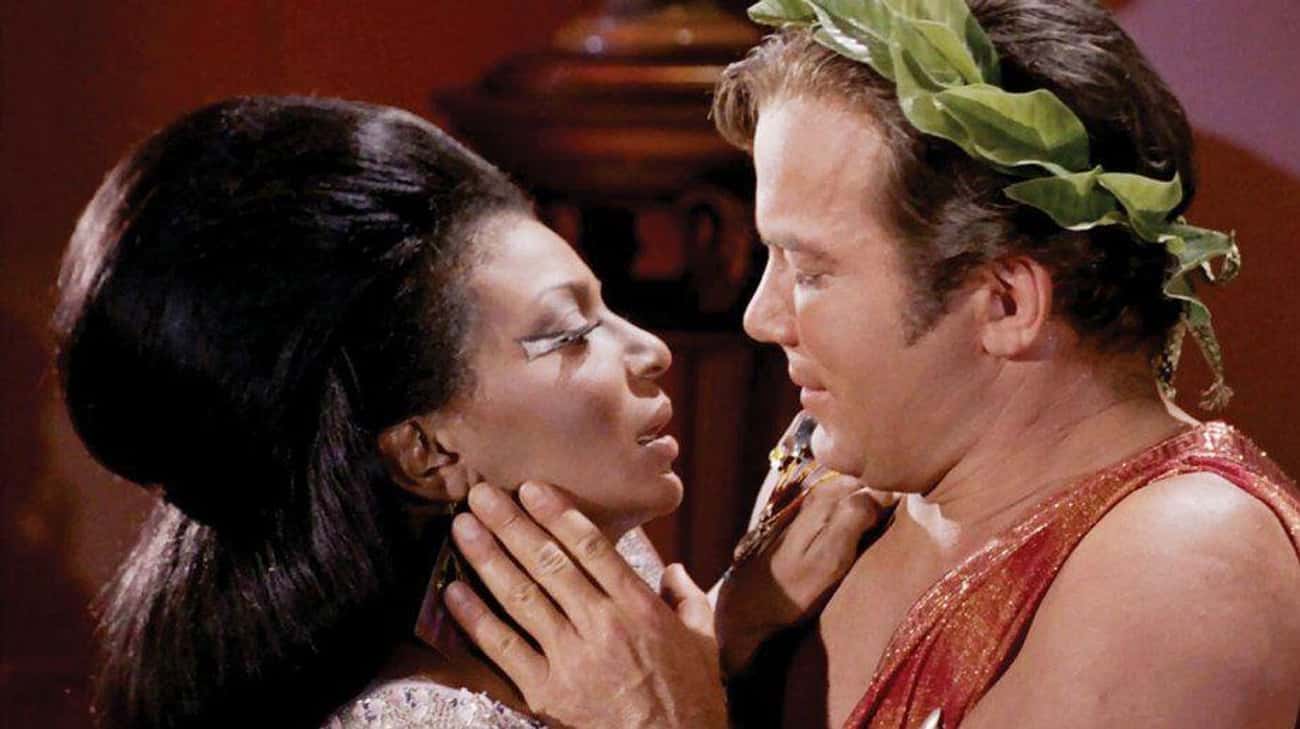
Although Star Trek is often erroneously credited as the first series to feature an interracial kiss on television, Captain Kirk was actually beat to the punch (kiss?) by British series Hot Summer Night . It should also be noted that the kiss between Kirk and Uhura was not exactly consenual; the crew members were telekinetically forced to kiss one another by an alien race called the Platonians.
That said, the moment is an important part of television history and one that almost didn’t happen. The network wanted the crew to film two versions of the scene – one with a kiss and one without. According to the cast, Nichelle Nichols and William Shatner deliberately flubbed the takes without the kiss so that the network would have to use the ones with the kiss. Very smooth, Captain.
As recounted in These are the Voyages: Season Three , producer Fred Freiberger recalled:
“The network at that time was very nervous; they thought we'd lose the whole Southern audience, and all of that stuff. They said, ‘Why can’t it be Nimoy who kisses her instead of Shatner?’ I said, ‘For the very reason you want it to be – because he’s a Vulcan and it’s going to be acceptable to everybody that the black girl is kissed by a Vulcan. I want it to be Shatner; it’s got to be him.’ ...It was really a very big thing, and I wanted Star Trek to do that.”
Nichols recalled:
So now I'm pissed on a whole other level, and to a whole new degree…. Somehow, I guess, they found it more acceptable for a Vulcan to kiss me, for this alien to kiss this black woman, than for two humans with different coloring to do the same thing. It was ridiculous, absolutely ridiculous…
The Original "Number One" Was A Woman

In the original pilot, “The Cage,” the first officer was a woman – an unnamed Number One played by Majel Barrett, who later married Star Trek creator Gene Roddenberry. Apparently, test audiences did not like the character and viewers complained that the character was too “pushy” and “annoying.”
Although Barrett didn't stay on as the first officer, she did secure a role in the series as Nurse Chapel. She also supplied the voice for most of the onboard computers throughout the series.
Martin Luther King Jr. Convinced Uhura To Stay On The Show
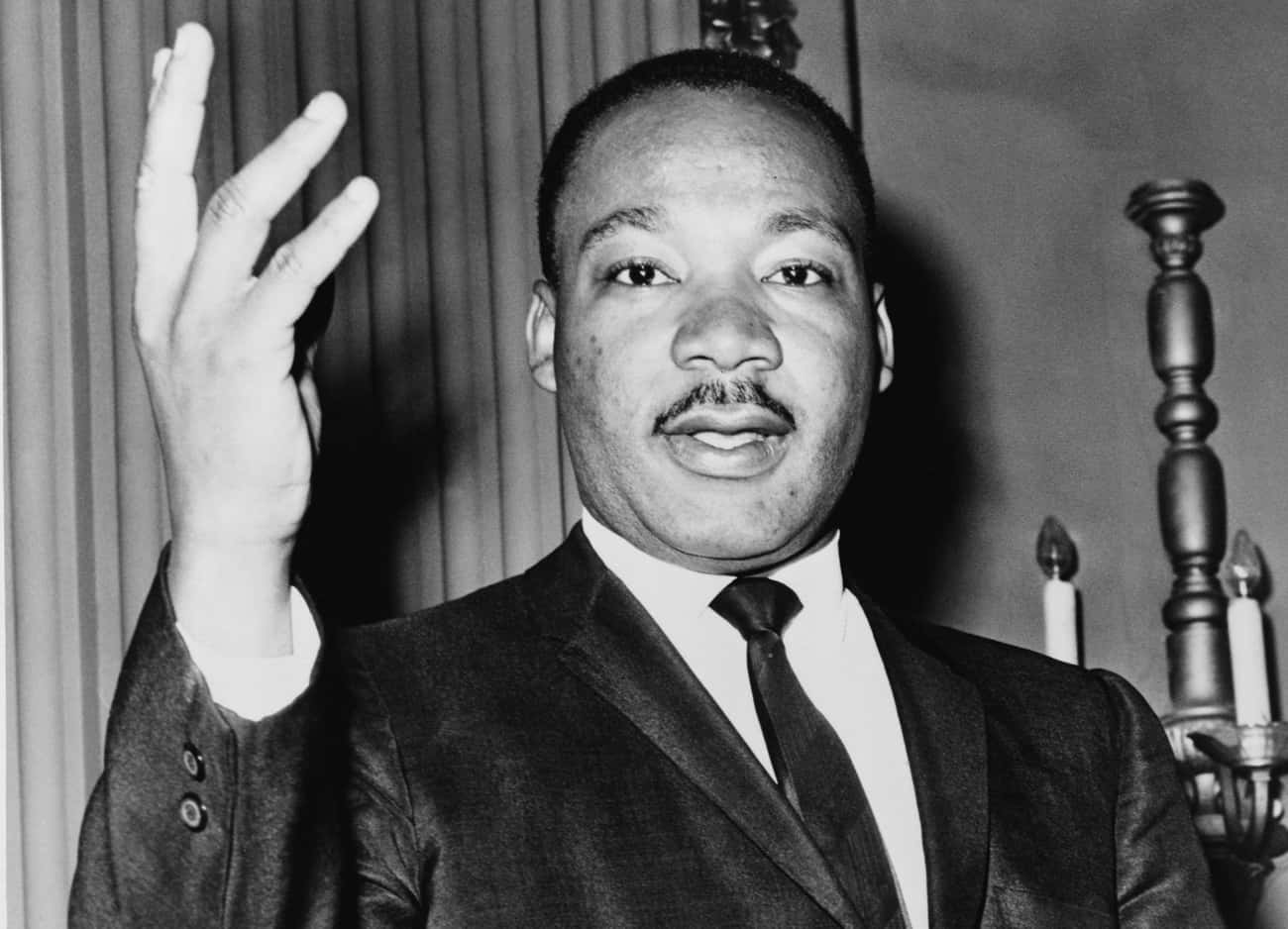
Although Nichols did not face discrimination on set, the actress did endure a great deal of it in other parts of the studio. Nichols wasn’t allowed to enter the studio through the same gate as the rest of the cast and crew. Not only that, but some of the studio guards would allegedly harass her, telling her that the show had replaced her with a “blue-eyed blonde.” After dealing with this treatment for a year, Nichols told Roddenberry that she wanted to leave the show.
Fortunately, shortly after talking to Roddenberry, Nichols ran into a man who would change her mind: Martin Luther King Jr. THe civil rights leader, a big Trekkie, approached Nichols at an NAACP fundraiser and gave the communications officer some words of encouragement. Nichols recounts the conversation: “He said I had the first non-stereotypical role, I had a role with honor, dignity and intelligence. He said, 'You simply cannot abdicate, this is an important role. This is why we are marching. We never thought we'd see this on TV.’”
Years later, Astronaut Mae Jemison, the first African-American woman in space, would cite Uhura as inspiring her to pursue a career at NASA – a clear and concrete example of why representation matters.
The Vulcan Salute Is Actually A Jewish Blessing
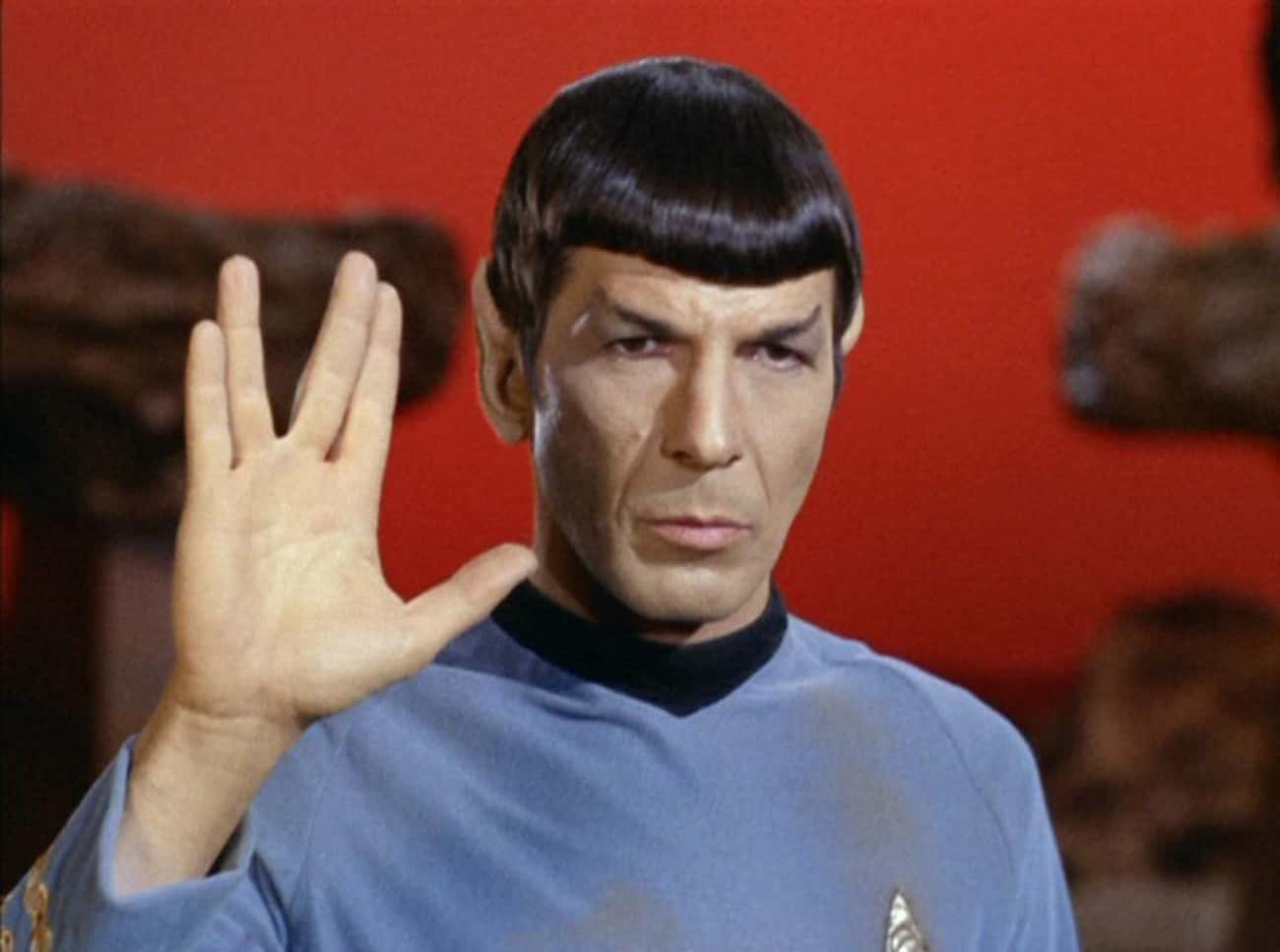
One of the many things Nimoy contributed to the show was the “live long and prosper” symbol. Although many people believe it to be a variation of the peace sign, it’s really a variation of a gesture made during a Jewish ritual.
Being Jewish himself, Nimoy witnessed the gesture when he was younger and chose to use it as a Vulcan greeting. He has said of the salute: "People don't realize they're blessing each other with this. It's great.” No, you're great, Mr. Nimoy.
The Theme Song Has Lyrics
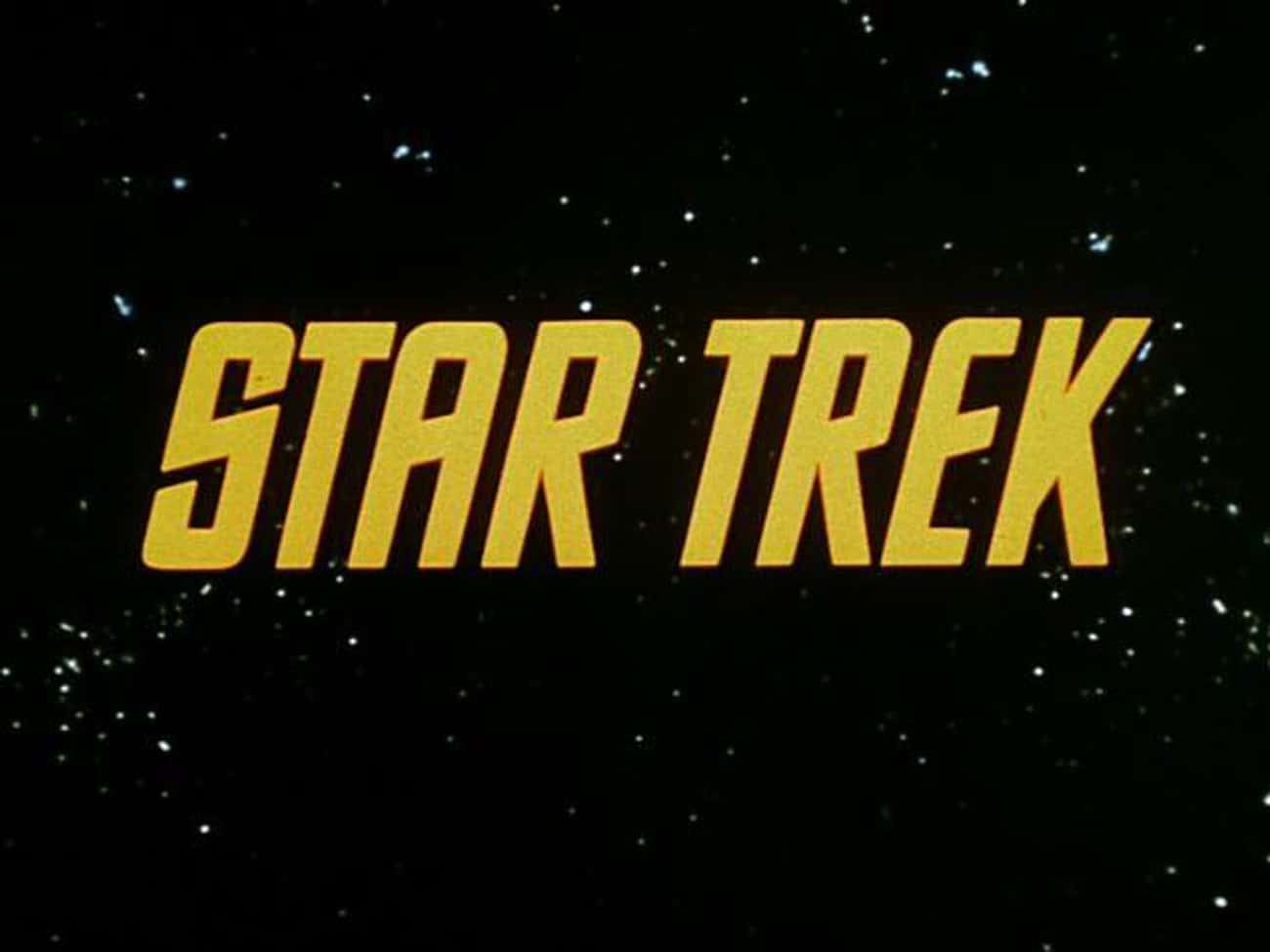
Every time a theme song is played on air or through a streaming service, the composer of the song is paid royalties. Roddenberry decided he wanted a 50% piece of that delicious royalties pie. He wrote lyrics to accompany Alexander Courage’s song, solely for the payout, saying “Hey, I have to get some money somewhere. I'm sure not going to get it out of the profits of Star Trek ."
The lyrics were so ridiculously bad (intentionally so) that they never were used. Here’s a snippet to feed the poet within: “My love is wand'ring in star-flight / I know / He'll find in star-clustered reaches / Love, / Strange love a star woman teaches.” Hey, no one ever said he was a lyricist.
The Costumes Were Made In A Sweatshop

Star Trek was filmed on an incredibly low budget – $193,000 per episode, or about $1.3 million in today’s currency. To put that into perspective, a modern one-hour drama can cost roughly $3 million per episode.
To make ends meet, the studio had a non-union sweatshop create all the costumes for the show and then had them secretly smuggled onto the set. Guess that replicator didn't work for real, huh?
Its Fandom Popularized Fanfiction

In the 1960s, back before sites like Archive of Our Own and fanfiction.net existed, fans circulated their fanfiction by hand or through popular Star Trek fanzines such as Spockanalia . Some of the most popular fanfiction went right to the sex, featuring Spock experiencing pon farr, a Vulcan mating ritual.
One of the popular romantic pairings in these fanfics was (and still is) Kirk/Spock. Equally interesting is the fact that the term “Mary Sue” was coined by Trekkies. They used it to describe a “too perfect” female character in a fan fiction called “Trekkie’s Tale.”
Nobody Ever Says "Beam Me Up, Scotty"

Although it’s one of the most popular catchphrases from the show, no one on the show ever says the words “Beam me up, Scotty” in The Original Series . Like the phrase “Elementary, my dear Watson,” or "Luke, I am you father," it’s one of those signature phrases that never actually appeared in the source material.
Lucille Ball Helped Get ‘Star Trek’ On The Air

NBC executives rejected the first Star Trek pilot on grounds that the show was “too cerebral.” Luckily, Lucille Ball, I Love Lucy star and head of Desilu productions, took a liking to the show and used her influence to encourage NBC to make another pilot.
The second pilot, which featured an entirely new crew (with the exception of Leonard Nimoy), secured a time slot, and went on to air for three seasons. One more reason to love Lucy.
Leonard Nimoy Fought For Equal Pay For The Cast
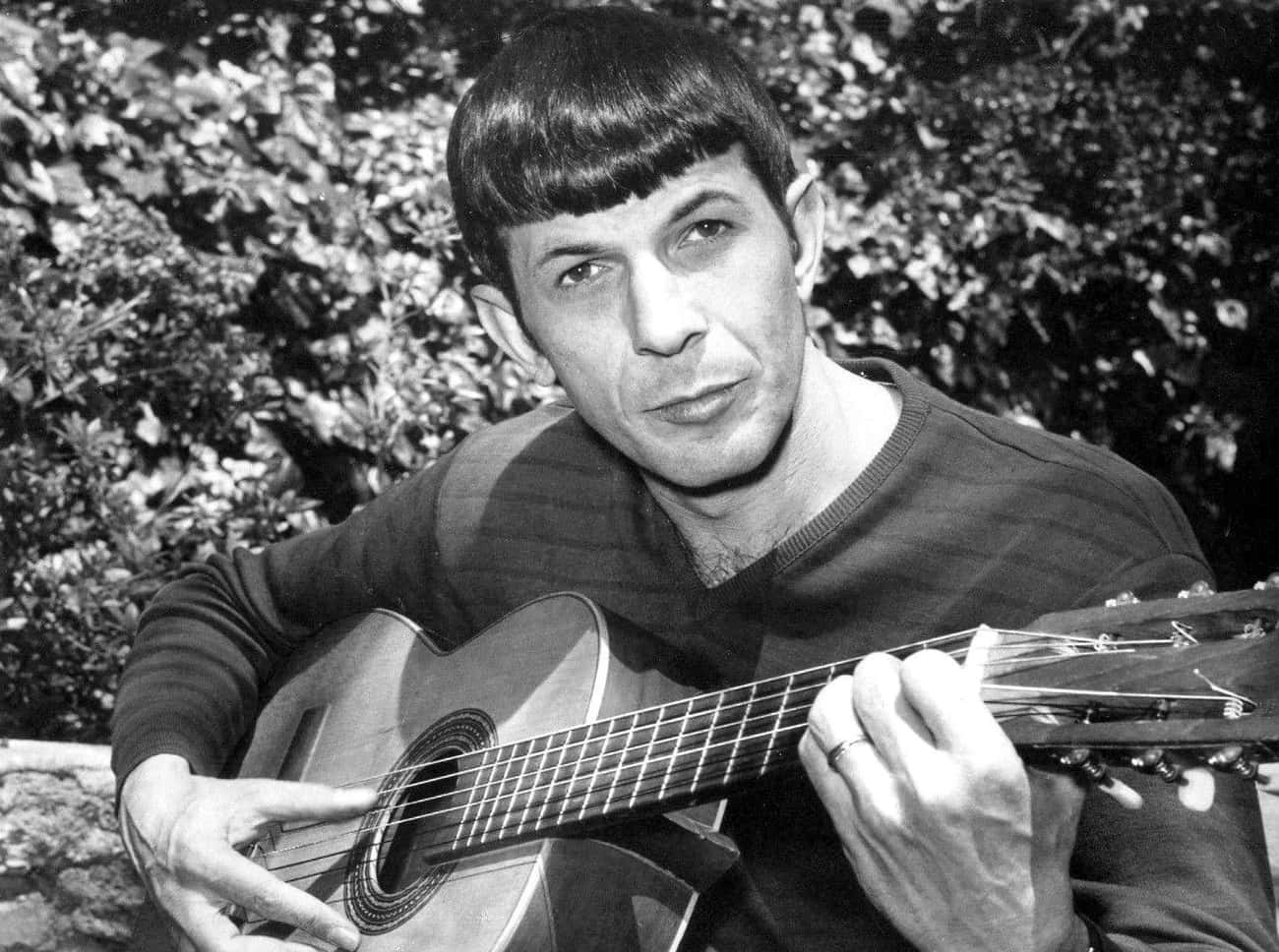
There is a reason Roddenberry called Leonard Nimoy the conscience of Star Trek . According to co-star Walter Koenig (the original Pavel Chekov), when Nimoy learned that Nichelle Nichols was not being paid as much as George Takei and Koenig, he spoke to the higher-ups and had Nichols’s pay adjusted to match that of her co-stars.
Nimoy also stepped in when Nichols and Takei weren’t brought on to voice their characters in the Star Trek animated series while the rest of the primary cast was. Nimoy refused to voice Spock until the two actors were hired, saying, “ Star Trek is about diversity, and the two people who represent diversity most are Nichelle and George, and if they can’t be a part of this project, then you don’t want me.”
The Episodes Aren’t In Chronological Order
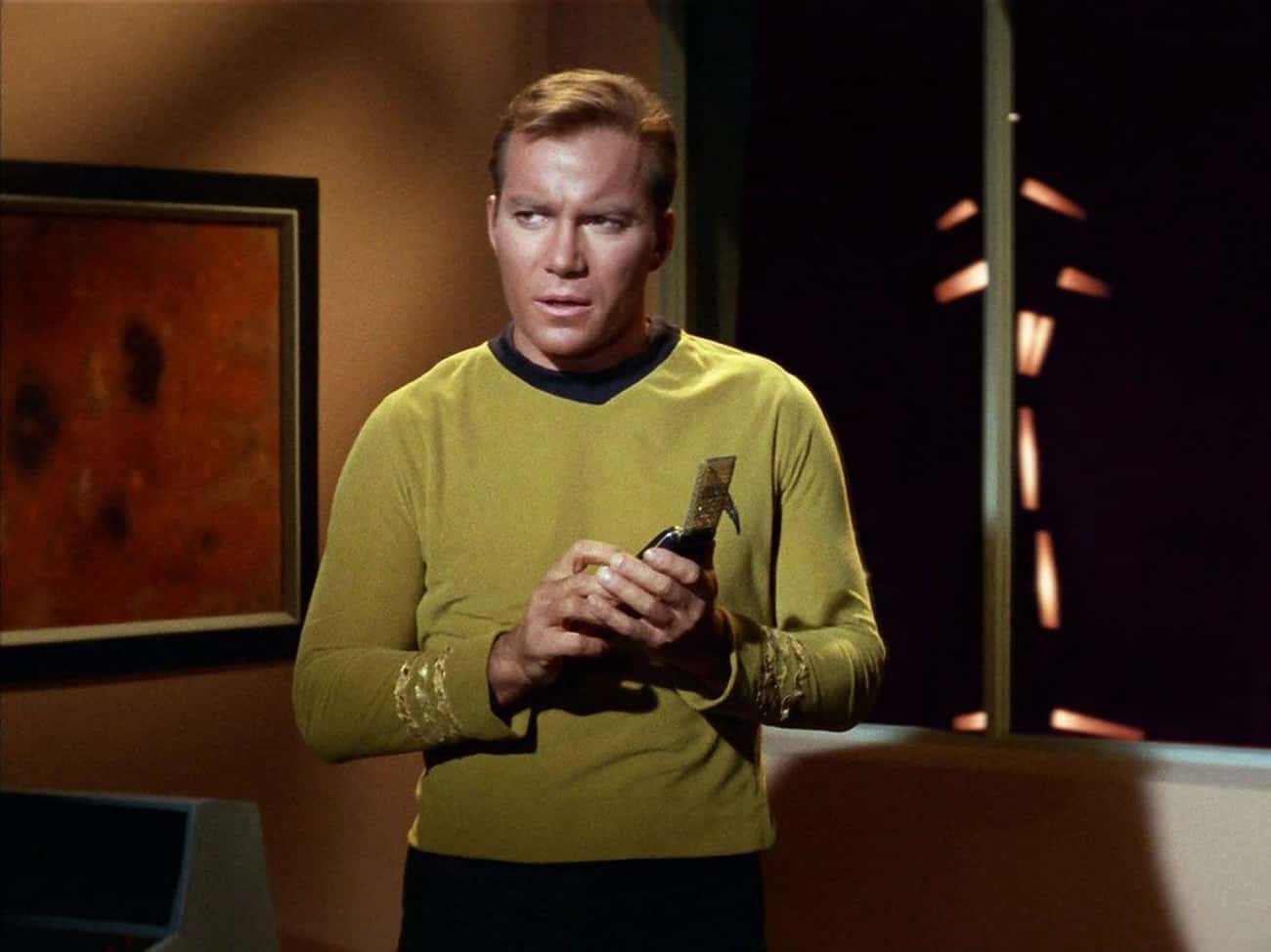
If you pay close attention to the stardates at the beginning of each episode, you’ll notice that the dates jump back and forward in time rather drastically. For example, the events of the first episode take place on stardate 1312.4. The next episode takes place on startdate 1512.2, and the one after that takes place 1329.1.
This continuity error is partly caused by the fact that the episodes were not aired in the same order they were produced. Also, the method for calculating a stardate was basically arbitrary. Here’s how the show’s bible told its writers to determine the stardate for an episode: “Pick any combination of four numbers plus a percentage point [ed. note: tenths digit], use it as your story's stardate.”
The Famous Interracial Kiss Was Supposed To Be Between Spock And Uhura
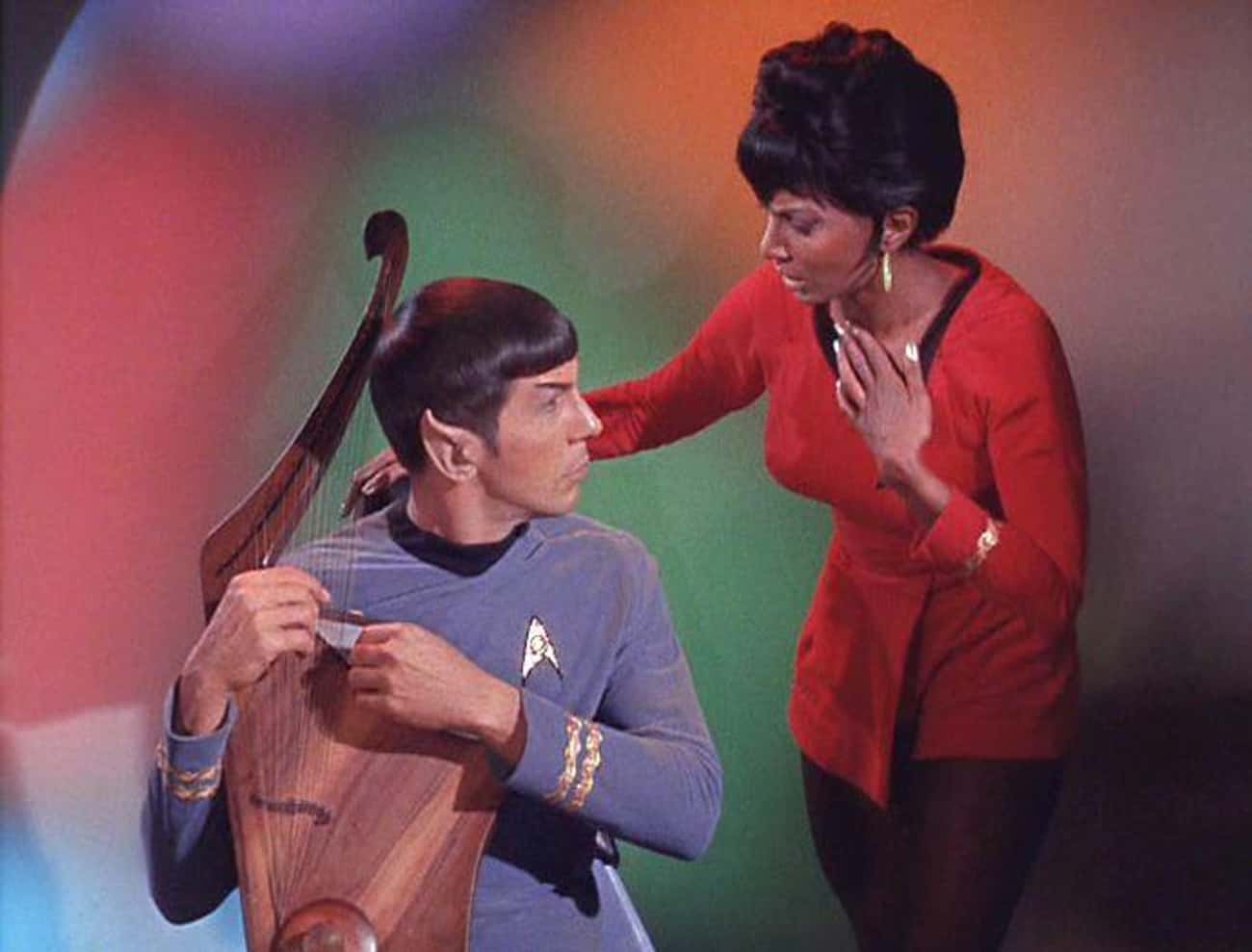
According to Nichelle Nichols, the interracial kiss in the episode “Plato’s Stepchildren” was originally supposed to occur between Spock and Uhura. Apparently after reading the script, Shatner said, “No you will not! If anyone's going to be part of the first interracial kiss in television history, it's going to be me!” The rest is television history.
The Enterprise Almost Flew Upside Down
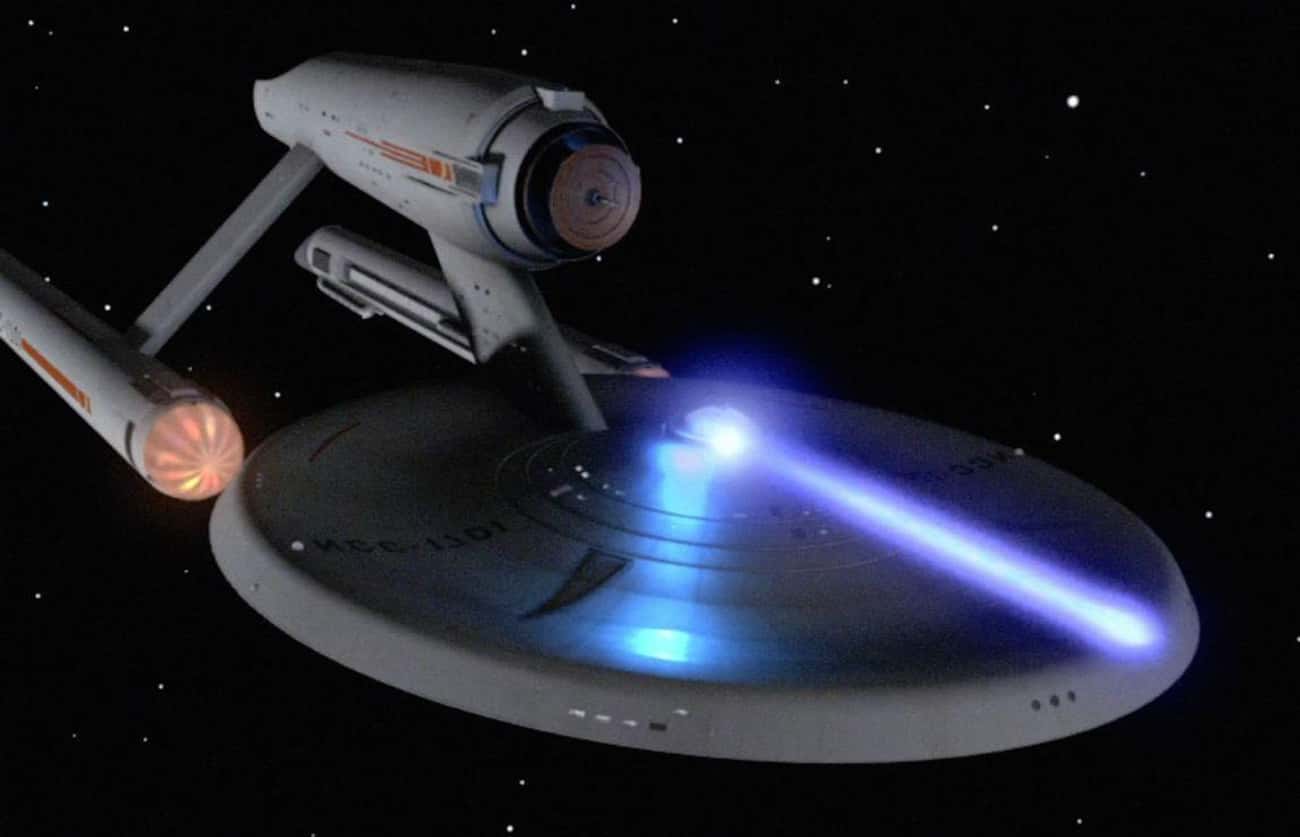
In the wide open exapnse of space, there is no up or down, but that might not be true in fictionalized TV space. According to Matt Jefferies, the man who designed the Enterprise , Roddenberry saw an early model of the ship and wanted the saucer and nacelles to be the bottom of the ship, the opposite of the way it was presented in the series. Ultimately, it was decided that this would be too disorienting for audiences.
There’s No Chest Hair In Space

According to the book These Are the Voyages , Roddenberry believed that men of the future would have “little or no chest hair,” which is why Shatner had his chest shaved whenever he appeared topless on the show. Given Shatner's rugged nature, clearing the captain was a time consuming affair.
Although Roddenberry believed men would have little chest hair in the future, that prediction didn’t extend to male aliens, as Spock can be seen sporting a healthy coat of Vulcan hair.
Leonard Nimoy Improvised The Vulcan Nerve Pinch
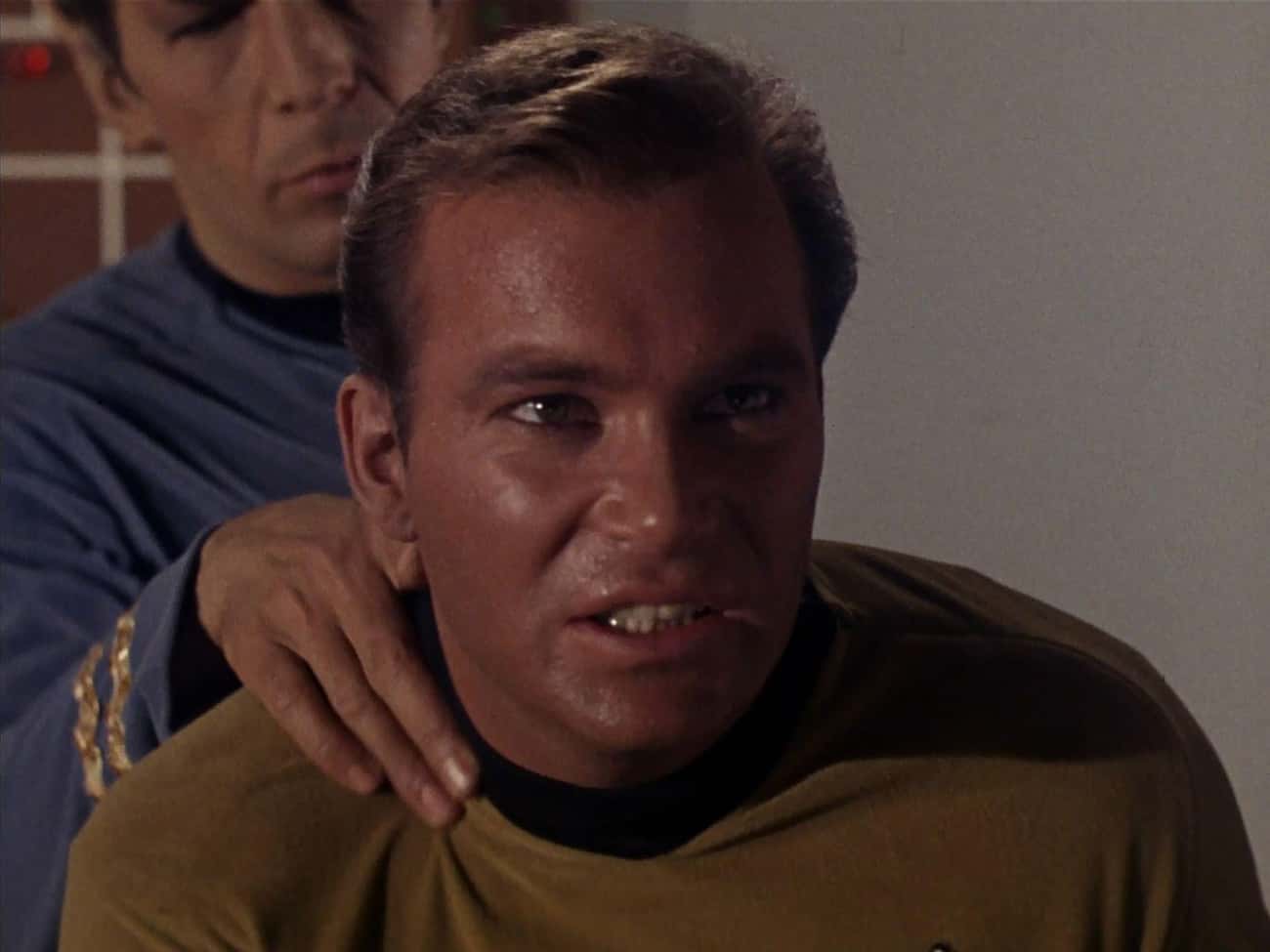
Not only did Nimoy come up with the Vulcan salute, but he also improvised the Vulcan nerve pinch. In the episode “The Enemy Within,” the script called for Spock to knockout Captain Kirk with a punch to the face. Nimoy thought that type of violence was too undignified for Spock, saying, “It seemed more appropriate for the Old West than the 23rd century."
When it came time to film the scene, Nimoy shared his idea about the nerve pinch to Shatner who caught on immediately. He credited part of the pinch’s success to Shatner’s “talent for fainting on cue."
Spock Was Originally Meant To Have Red Skin

In addition to the pointed ears, Spock was also supposed to have red skin. While the makeup looked okay in person, the colors didn’t test well on the camera. Most families owned black and white television sets at the time, and in that format, it appeared like Nimoy was wearing blackface, which would have sent a message incongruent with the series' message of diversity. The show’s makeup artist eventually settled on a greenish-yellow makeup that gave the Vulcan a slightly different and unusual tint.
- Entertainment
- Star Trek Universe
- Watchworthy
Live long, and prosper.
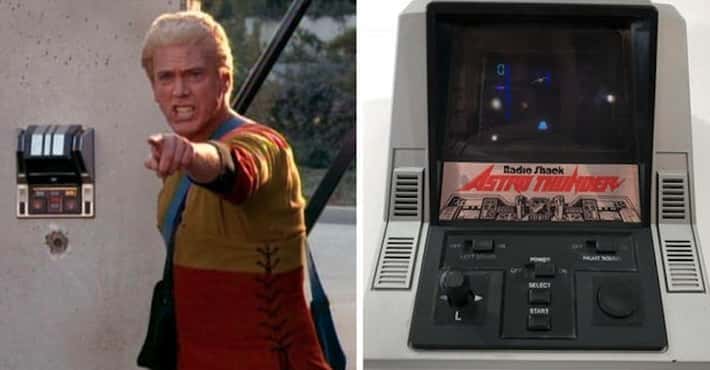
- The Inventory
More Weird Facts You Probably Didn't Know About The Original Star Trek
50 years ago, one of science fiction's greatest series was in development. The original Star Trek series was born out of desperation as much as inspiration, and a recent book called These Are The Voyages reveals tons of insane behind-the-scenes details. You think you know Star Trek? Here are tons of details you probably didn't know.
Related Content
These Are The Voyages is a passion project which author Mark Cushman started working on in the 1980s, with the cooperation of Gene Roddenberry and other creators of the show. And Cushman and co-author Susan Osborn have done an astounding job of pulling together tons and tons of previously unknown info, as well as a startling "warts and all" approach to the creation of the series. There are volumes of These Are The Voyages covering the first and second seasons of the show, and we read the first volume.
The main thing that comes across in reading this book is just how much conflict there was going on during the making of the original Trek — and not just between Gene Roddenberry, NBC and Desilu, but also among the show's producers. You get the impression that Roddenberry and original showrunner John D.F. Black (who provides a foreword) were constantly at each other's throats. Roddenberry would solicit scripts from science fiction legends like Richard Matheson and Harlan Ellison, and then rewrite them completely — and sometimes it would be pretty obvious that Roddenberry had been drinking heavily before taking a scalpel to the work of these famous writers. Meanwhile, Roddenberry was constantly trying to include more explicit sexuality in Trek , and this was a constant battle.
But at the same time, it's clear that a lot of the early episodes were lacking in drama and pacing until either the studio or Roddenberry decided to punch them up. A lot of the early script drafts seem to have been missing elements that add a lot more urgency or interest to the story — for example "The Enemy Within" didn't have the crewmembers stranded on the frozen planet, an addition that Matheson hated.
The other thing that comes across in reading this book is that a lot of the people who worked on Star Trek were doing really experimental, somewhat avant garde work for television of the time. Everything from the lighting (which was more cinematic and less "flat" than other TV shows at the time) to the editing and direction (which used some camera setups that made it harder for the networks to do cuts, and sometimes used filmic artistic techniques to cut from shot to shot, like the bloody handprint in "Enemy Within) was more like a movie setup, and less like the TV factory model.
Small wonder that the show was constantly going over budget, and the filming was often running an hour or more late and taking up extra days. And some episodes were requiring four or five months of post-production.
These Are The Voyages goes through, episode by episode, and shows you the whole process from first draft to filming — and you get to see just how much this show was being made by the skin of everyone's teeth, and how incredible it is that the show actually survived out of its first year.
We already told you some facts you never knew about TOS , but here's another huge helping of surprising facts.
Gene Roddenberry was a speechwriter for the LAPD. You might have known Roddenberry was a beat cop before he got into television (by submitting stories to Dragnet ), but did you know he wrote highly philosophical, lofty speeches for L.A. Chief of Police William H. Parker? Parker was in the process of "modernizing" the LAPD at the time, giving it more paramilitary organization and equipment, which arguably led to some of the police department's most controversial moments in later years — and Roddenberry was the one who helped sell this to the public. "It was only when he forgot he was a philosopher and began to think he was God that he got into trouble," Roddenberry later said of his old boss. "I have gotten into trouble the same way."
You should love Lucy. When Desilu was deciding to make Star Trek, studio owner Lucille Ball was unclear on the concept — she thought it was going to be a show about USO performers who would go and visit troops who were stationed in foreign countries. You know, stars going on a trek. She was often heard referring to it as "that South Seas show." Once the pilot was ordered, Herb Solow finally told Ball the truth about the show she was making — and she was speechless. But when the Desilu board of directors tried to pull the plug on Trek before filming, Ball was the one who decided to keep it alive — because she was convinced the show would make money, in the end. Later, rumor has it when they were filming "Where No Man Has Gone Before" and the camera tracks were getting gummed up with the weird dust they were using for the planet's surface, Lucille Ball personally went out with a broom, in front of the stunned crew, and swept the tracks clean herself.
"If it were not for Lucy, there would be no Star Trek today," one exec is quoted in the book as saying.
Commander Koenig could have been Spock. Martin Landau, who later starred in Space: 1999 , was offered the role of the Vulcan science officer on the Enterprise. But he turned the role down, because "I felt the emotional range of the character was too limiting." Also offered the role of Spock: DeForest Kelley, whom the studio had already vetoed for the role of the ship's doctor. (Kelley turned down Spock, and eventually the studio relented on letting him be the doctor, after the first two pilots were filmed.)
Roddenberry wanted the Enterprise to fly upside down. Of course, there's no "up" and "down" in space, but the Enterprise is usually shown with its saucer section and nacelles upwards. But the model they originally made was top-heavy, so it swung upside down on its cord so the saucer and nacelles were down. Roddenberry liked it better that way, leading to tons of arguments. Roddenberry had told the designers the Enterprise should have "no flames, no fins, no rockets." So they studied Flash Gordon and Buck Rogers to see what not to do.
Pigeons and wasps attacked both pilots. The filming of the "The Cage" was interrupted by pigeons nesting in the rafters of the studio. The pigeons had a particular aversion to the voice of Jeffrey Hunter (Captain Pike) and would coo loudly whenever Hunter spoke. They tried to shoo the pigeons out, but they just flew into the hot lights and other equipment. Finally, they had to be lured out with breadcrumbs. In "Where No Man Has Gone Before," a wasps nest was disturbed by the filming, and the wasps kept flying down and stinging William Shatner on the eyelid and elsewhere — so he actually has a huge puffy sting on his eye during some scenes of that episode.
Gene Roddenberry was told to choose between Spock and Number One. He would only get to keep one of the two controversial main characters from "The Cage" for the ongoing series — and he was already having an affair with Majel Barrett, who played Number One. But Roddenberry still chose Spock over Number One, because he thought the character had more potential, and he gave Spock Number One's lack of emotion. Roddenberry later cast Barrett as Nurse Christine Chapel, and hoped that putting a blonde wig on her would make the studio not recognize her. (Nobody was fooled.) Barrett hated the role of Chapel, who was "Namdy Pamdy." (sic.)
Roddenberry believed there was no chest hair in the future. And that's why Shatner had to be shaved by a studio barber when he was appearing topless (or mostly naked, as in "What Are Little Girls Made Of?"). Roddenberry believed in his ideal future, men would have "little or no body hair." Shatner really did not want to be topless in the episode "Charley X," because he hadn't been working out and was self-conscious about his torso... but he was overruled.
Yeoman Rand had some deleted scenes. Including one where Kirk goes back to his quarters and finds she's laying out his clothes for him on his bed — this was cut because it was maybe a little too intimate for the Captain and his Yeoman. There were constant fights with the studio over how much of a relationship Kirk and Rand should seem to have — and the Captain's attempted rape of Rand in "Enemy Within" was a huge point of contention. Also, Yeoman Rand's famous beehive was made of two different wigs stuck together, and it kept coming off during the "attempted rape" scene because Shatner was a little too energetic. He also left her with bruises for weeks.
Dorothy Fontana had to fight for respect as one of the show's writers. She started out as a secretary, but was writing for the series remarkably early — and her input seems to have been crucial in the first season. She was the first person who ever heard Roddenberry's pitch for Trek , in fact. But the network exec, Stan Robinson, thought it was okay to call her up and lecture her about her script, as if she was still just the secretary. So she went to Roddenberry and said that she thought maybe it wasn't appropriate for Robinson to give her notes over the phone when he didn't do that to any of the other writers. Roddenberry called Robinson and bitched him out, saying "You don't mess with my writers." Later, Fontana received loads of fan mail addressed to "Mr. Fontana," because she wrote under the pen name D.C. Fontana.
Leonard Nimoy improvised the Vulcan nerve pinch. You probably already knew that Nimoy came up with the "Live Long and Prosper" hand symbol by borrowing from a thing his Rabbi had done at the synagogue. But Nimoy also invented the famous neck pinch — he had a moment in "Enemy Within" when he was supposed to clobber the feral Captain Kirk. And Nimoy didn't like the idea of Spock using violence unnecessarily. So he pitched the notion of the nerve pinch, and Shatner agreed to try it out. And because Shatner was so good at stage-fainting, the director liked it. The production team didn't even know about it until they saw the dailies the next day.
One episode's plot twist came about due to legal problems. Robert Bloch's script for "What Are Little Girls Made Of?" didn't just borrow heavily from H.P. Lovecraft — it also contained startling similarities to three stories he had sold to the magazine Fantastic Adventures in the 1940s and 1950s. Plus an episode of the TV show Voyage to the Bottom of the Sea . The whole concept of a mad scientist stealing the secrets of android creation from some extinct aliens was problematic for legal reasons. So the production team decided to add the twist that Roger Korby himself was also an android — to make the story different enough so they wouldn't get sued.
Everybody hated the name of the Klingons. But there was no time to change it, and Gene Roddenberry was out sick from a rare disease he'd gotten from working with gemstones. Writer/producer Gene Coon wrote "Errand of Mercy" in a hurry, and others, like D.C. Fontana, protested the idea of aliens who sound like they're "clinging" was just silly. Fontana asked Coon, "Where do they come from? What's the name of their planet?" Coon responded: "Kling."
Gene Roddenberry got half the royalties for the Star Trek theme. Because of a contract clause that said if he wrote lyrics for a tune (even if they weren't used) he would get a split of royalties. So even though Roddenberry's incredibly silly and somewhat unsingable lyrics for the Trek theme were never heard on screen, he got a 50/50 split with composer Alexander Courage — something Courage was pretty upset by.
This is just the tip of the iceberg, as far as fascinating secrets from Star Trek's early years goes. For hundreds of pages' more information, you should check out These Are The Voyages Volumes 1 and 2.
Images via Phase 2 , TrekinScifi , TrekCore and Bird of the Galaxy .

30 Facts About 'Star Trek' That Even The Biggest Fans May Not Know
Posted: May 16, 2024 | Last updated: May 16, 2024
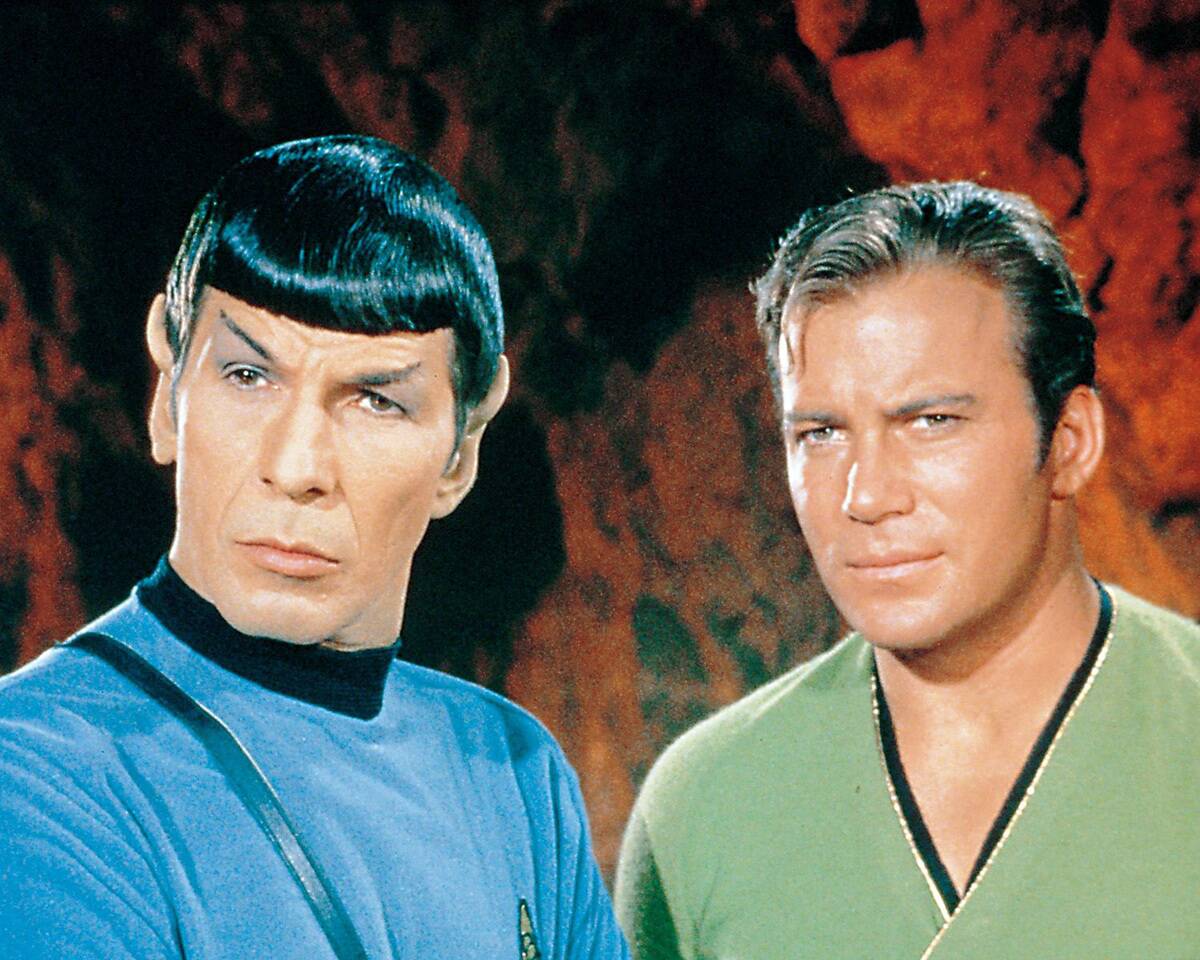
Space, the final frontier. For over three decades, Star Trek has captivated audiences with its bold exploration of the unknown.
From the charismatic Captain Kirk, played by William Shatner, to the logical Spock, portrayed by Leonard Nimoy, the original series ran from 1966 to 1969, sparking a devoted following of 'Trekkies' who gather at conventions to celebrate their beloved franchise. Keep reading to learn some little-known facts about the beloved franchise.
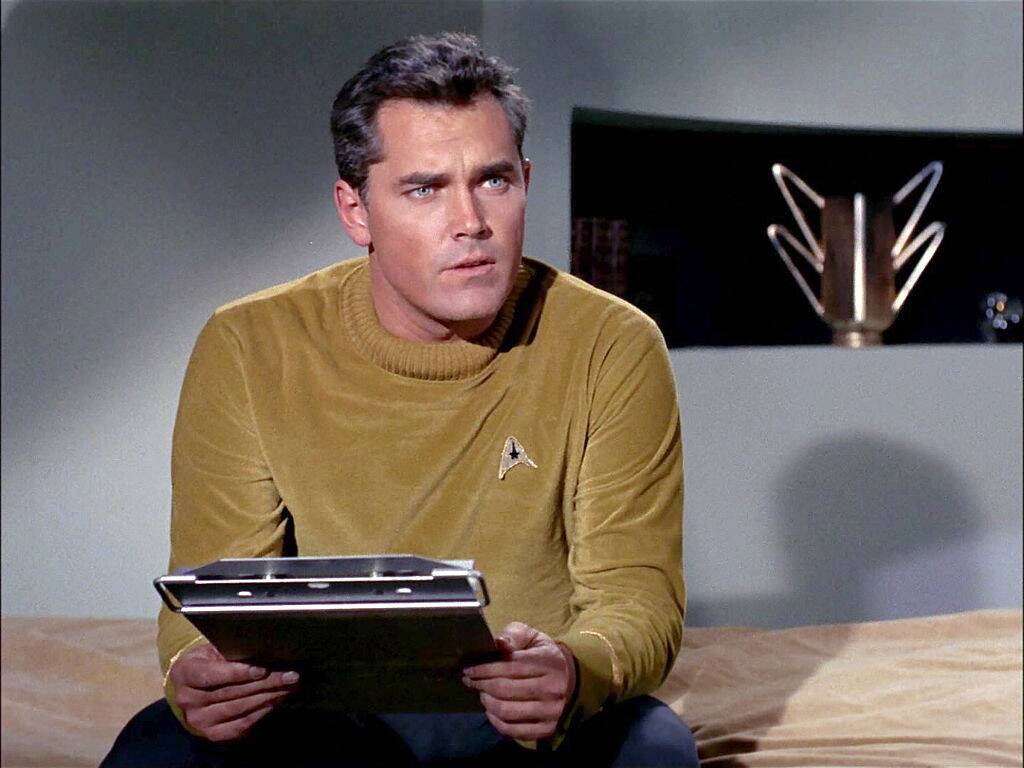
Star Trek Had A Captain Before Kirk
The original pilot for Star Trek , featuring Captain Christopher Pike, was rejected by NBC.
Leonard Nimoy's portrayal of Spock was the only character retained for the second pilot, which introduced Captain Kirk, with William Shatner as the lead role. Jeffrey Hunter played the role of Pike in the initial pilot but did not continue with the series.
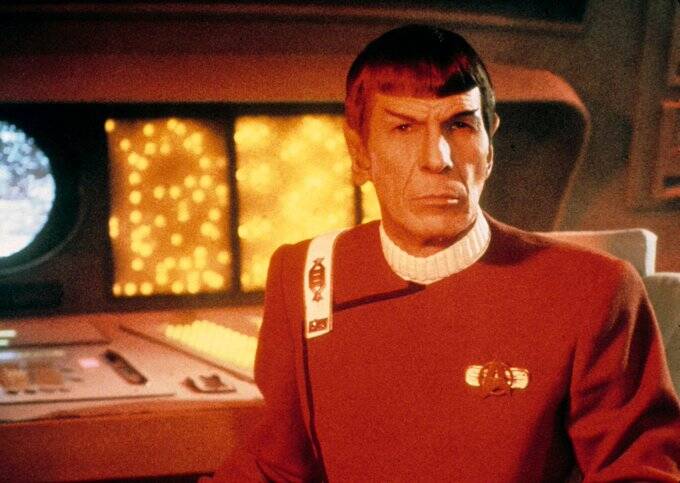
Spock Almost Had Red Skin
Gene Roddenberry, the creator of Star Trek , envisioned Spock as a Martian with red skin.
However, due to the lack of color TVs at the show's inception and the hassle of applying red makeup to Leonard Nimoy's skin in every episode, this idea was deemed more trouble than it was worth.

The Fanbase Didn't Arrive Until After The Show Ended
While Star Trek aired its first episode in 1966, the fanbase and Trekkies people know today didn't really show up until after the series ended in 1969.
In fact, it wasn't until the 1970s and the television reruns of the show that people began to become interested in the adventures of Spock, Captain Kurt, and the rest of the crew on the USS Enterprise .

Martin Luther King Jr. Was A Trekky And Convinced Nichols To Stay
Nichelle Nichols, who played Lt. Uhura on Star Trek, rescinded her decision to depart after season one. A persuasive conversation with Martin Luther King Jr., a Trekky himself, swayed her.
King Jr.'s belief in the significance of her character's representation inspired Nichols to continue in the portrayal of her ground-breaking role.

The First Space Shuttle Was Inspired By Star Trek
The first US Space Shuttle Enterprise was named after the fictional starship from Star Trek and its widespread popularity, the USS Enterprise . The show's passionate fan base, which included NASA engineers, inspired the agency to choose the name.
Enterprise symbolized the spirit of exploration and innovation, capturing the imagination of both science fiction enthusiasts and space professionals.
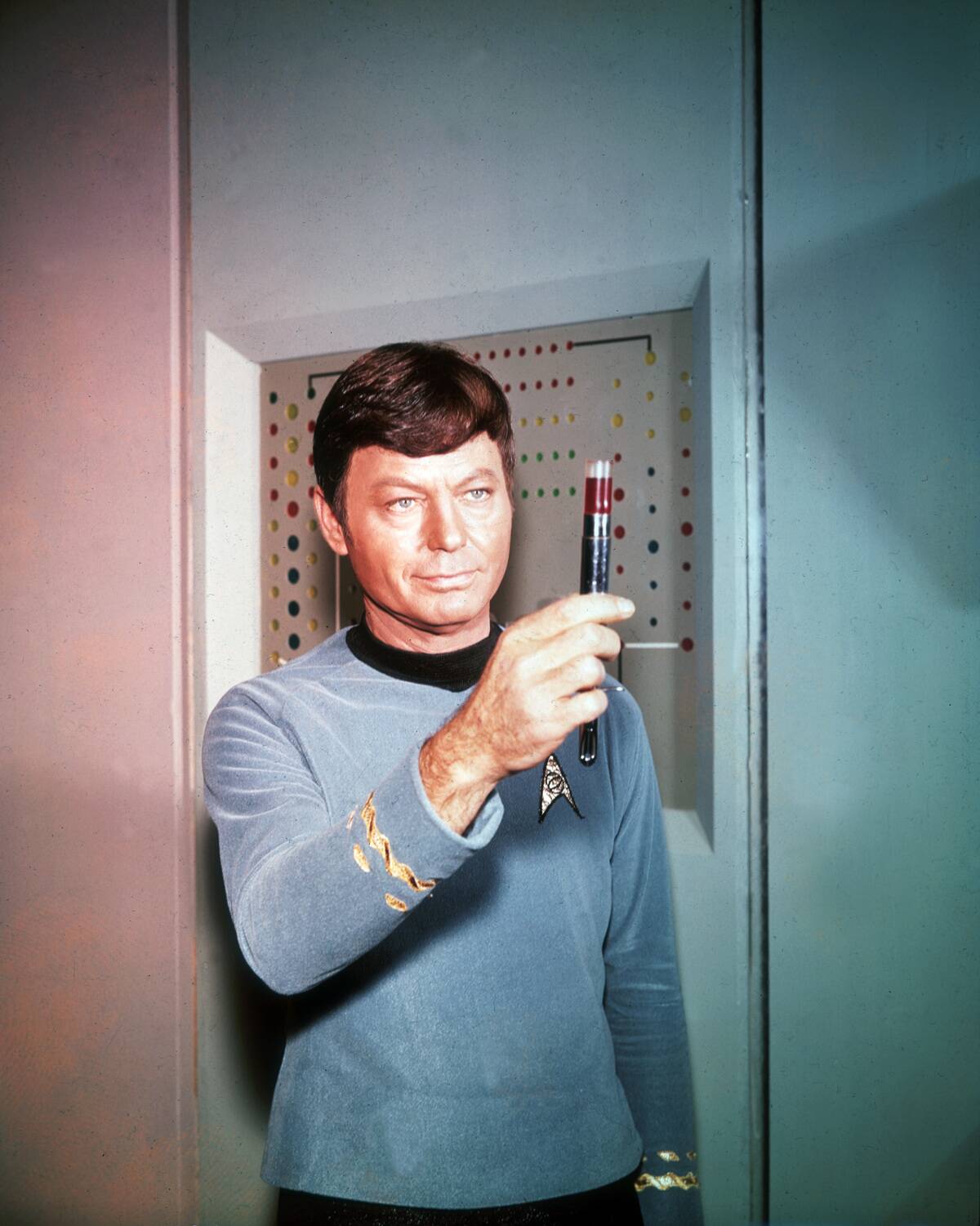
Bones' Line "I'm a doctor, not a..." Was From A 1933 Movie
The line "I'm a doctor, not a..." originates from the 1933 film The Kennel Murder Case . It was later popularized in the Star Trek series and became a recurring catchphrase uttered by Dr. Leonard "Bones" McCoy, who would say the line when he was frustrated about being asked to do more than he could.
The line was often completed with different endings, emphasizing the doctor's dedication to his medical profession.
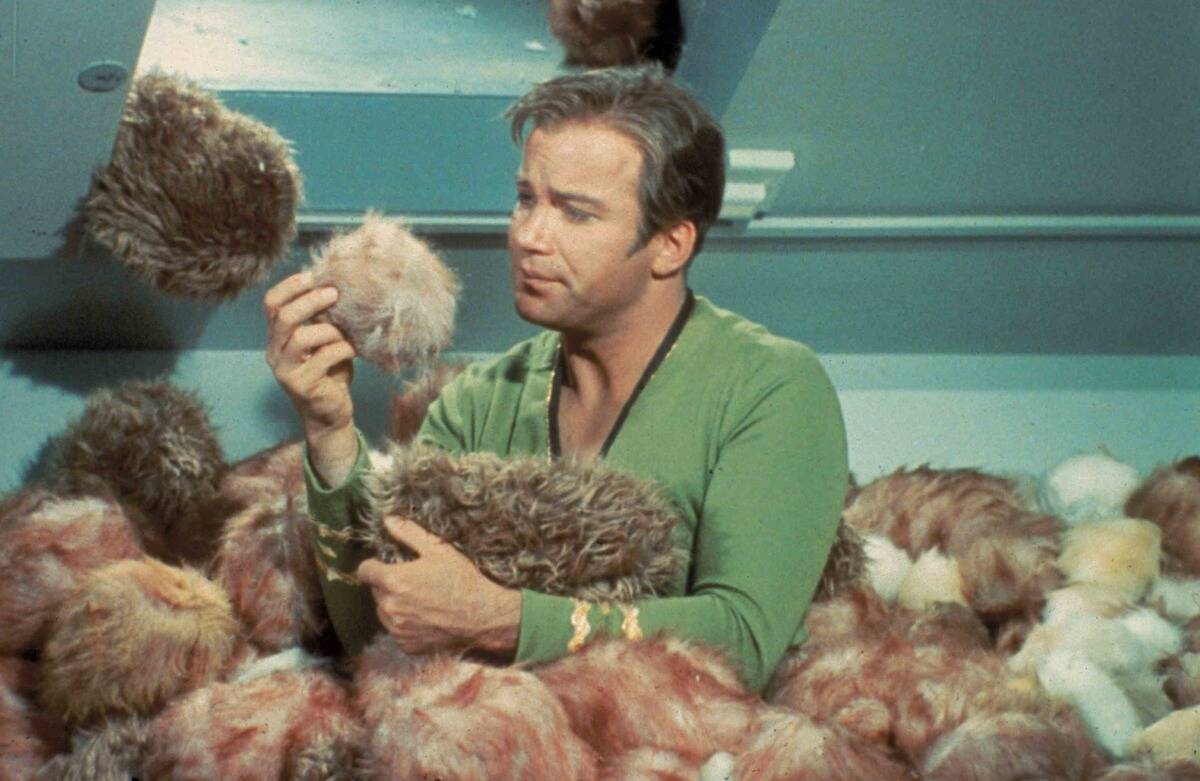
Trekkies Can Get A $500 Scholarship For College
Starfleet, an international fan group, offers a $500 scholarship to Star Trek enthusiasts pursuing higher education.
Their generous initiative supports students in their academic journey while celebrating their passion for the beloved sci-fi franchise. Starfleet's commitment to nurturing the next generation reflects the values of unity and exploration championed in Star Trek .
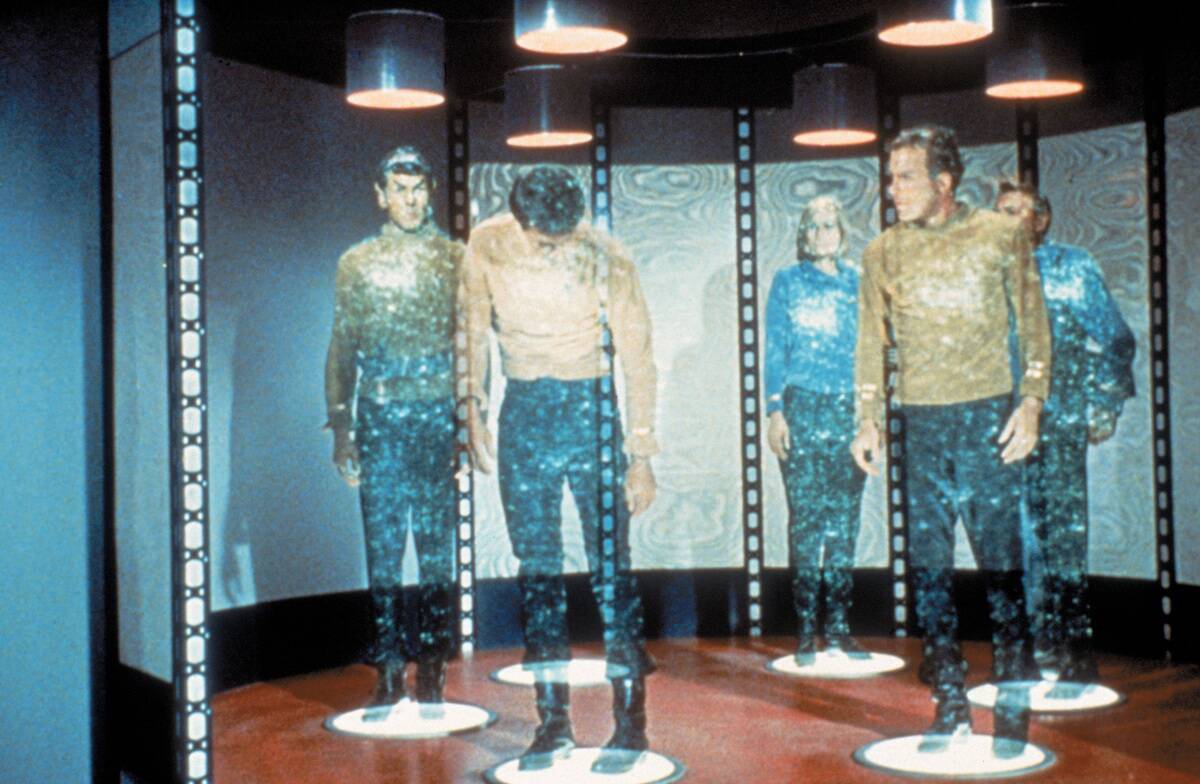
Teleporting Was Cheaper To Film Than Spaceships Landing
In the original Star Trek series, the ingenious use of teleportation during filming proved to be a cost-effective solution to showcase the futuristic technology of spaceships.
With a limited budget, the production team creatively employed teleportation to depict crew members effortlessly moving between locations, giving the illusion of seamless transportation across the galaxy.
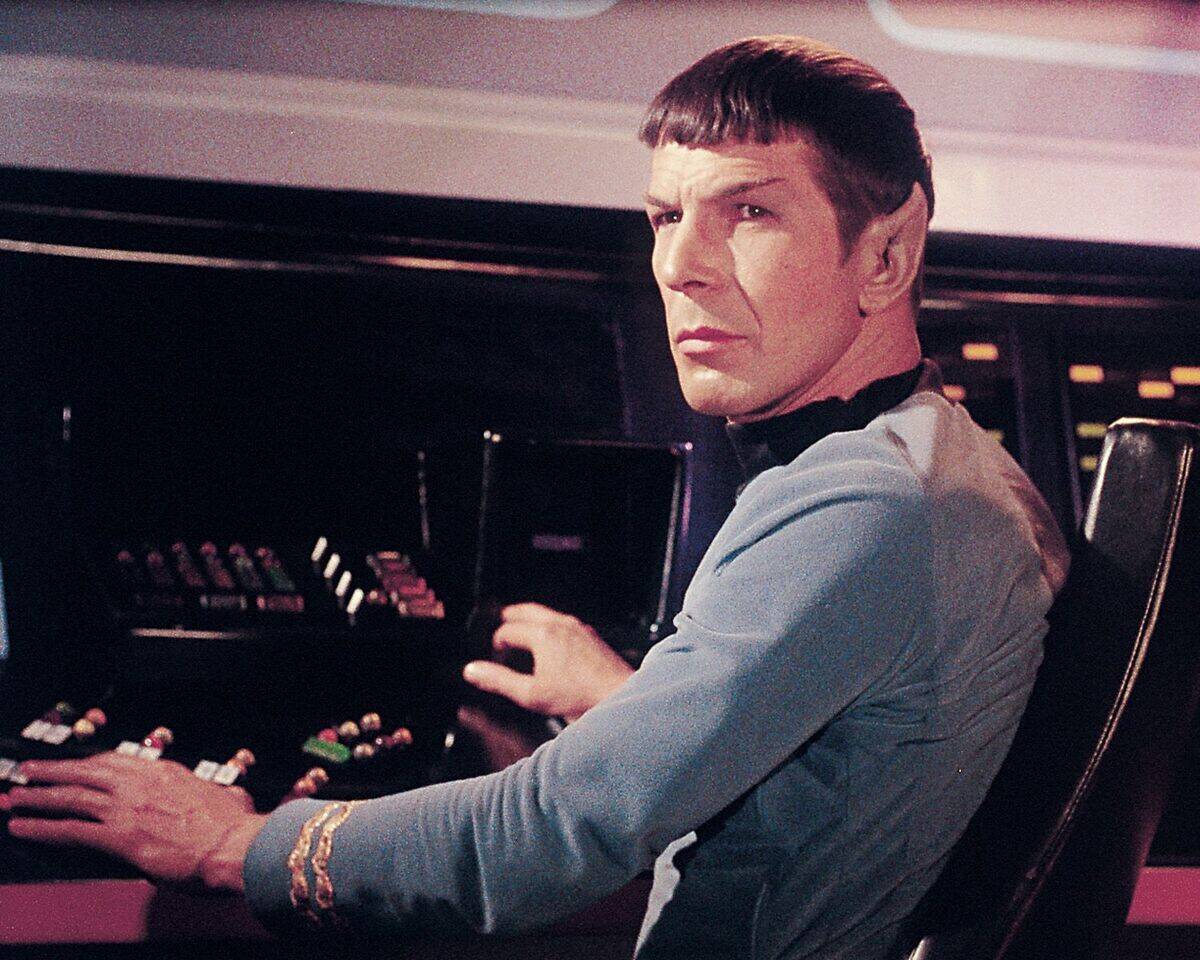
Spock Was Not Originally Star Trek's "Number One"
The producers of Star Trek opted to progress with Spock instead of Number One after the pilot. They admired Spock's distinctive ears and eyebrows, which lent a more devilish appearance to the series.
Although it was not easy, their choice eventually set the stage for Spock's enduring presence and the show's subsequent success.
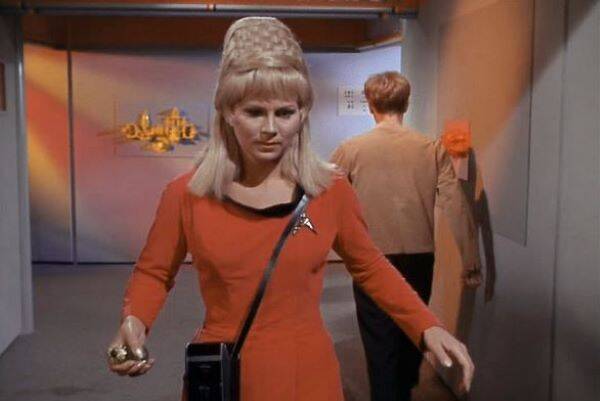
Wardrobe: Miniskirts And Green Shirts
Originally, NBC had wanted the female cast members of Star Trek to don miniskirts, believing it would enhance the show's appeal.
The network's suggestion was ultimately abandoned. Interestingly, the gold shirts the male characters wore were green, but due to the television's color rendering, they appeared gold to the viewers.
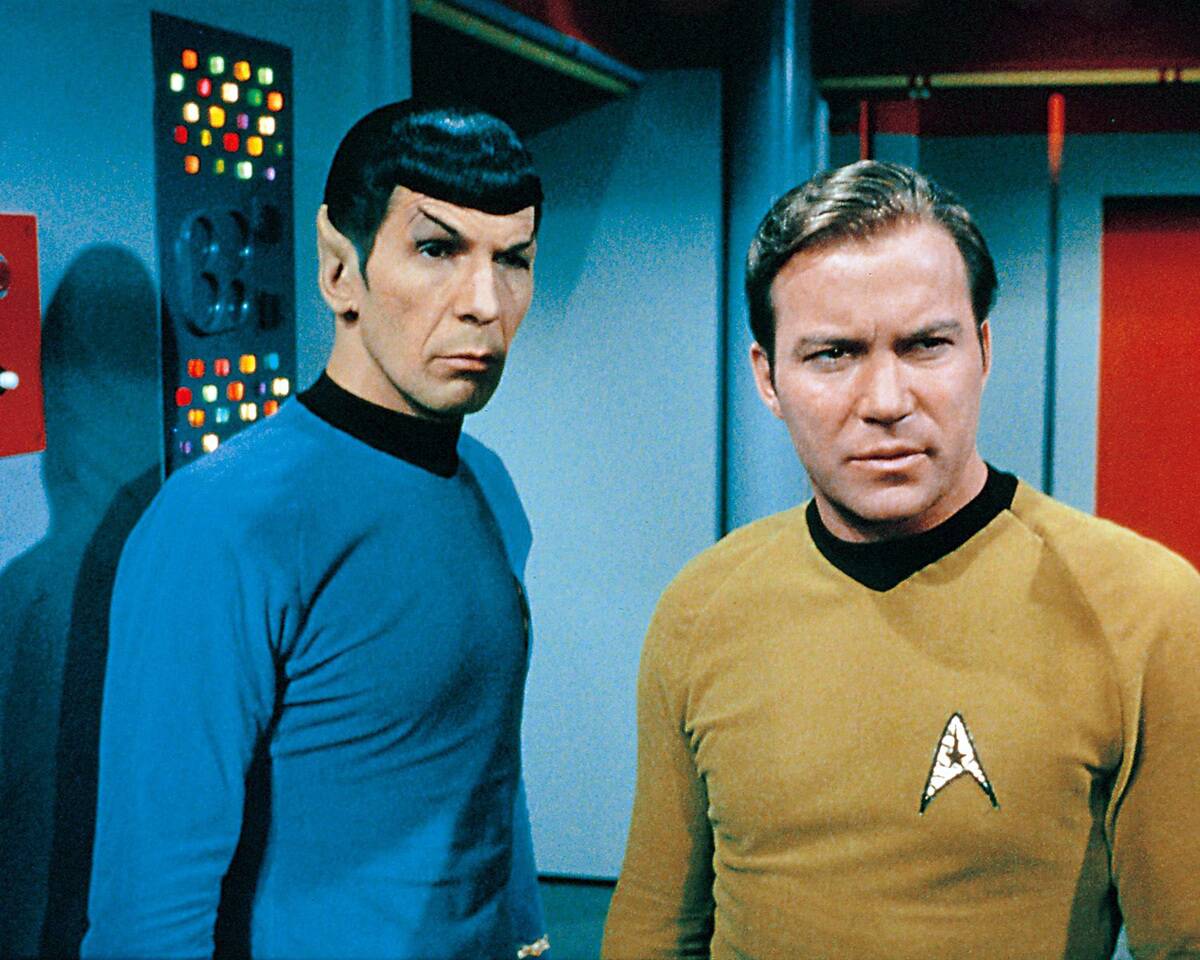

Shatner Became Petty With Nimoy
Off camera, William Shatner reportedly clashed with co-star Leonard Nimoy. Shatner's concern stemmed from not wanting other characters to appear more intelligent than Captain Kirk, leading him to steal Nimoy's lines occasionally.
This alleged rivalry behind the scenes added tension to their on-screen dynamic.
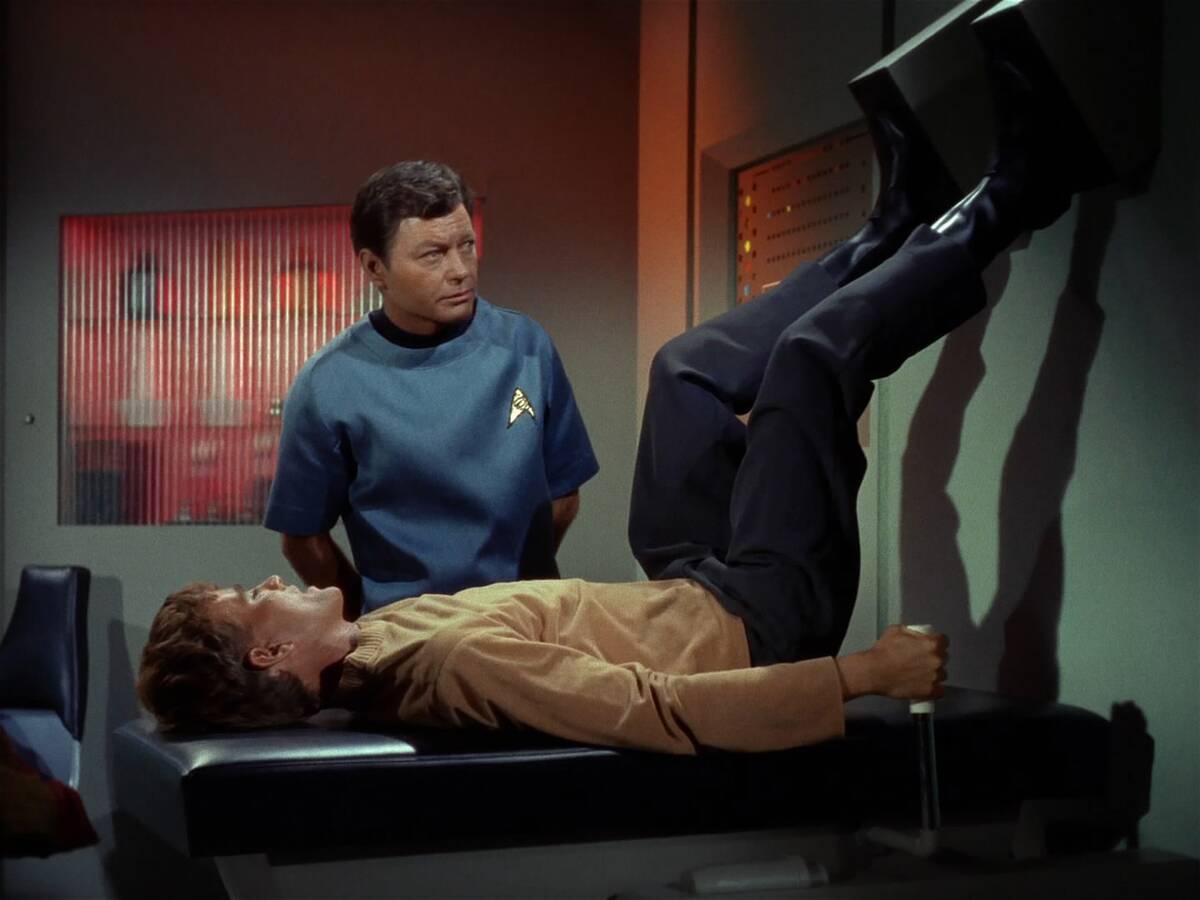
Inside Jokes Were Built Into The Set
Star Trek's original series set harbored delightful inside jokes cherished by the cast. Among them, the tubes on the ship flaunted inscriptions like "GNDN" with random numbers, teasingly translating to "Goes Nowhere, Does Nothing."
This witty jest added a touch of amusement to the futuristic surroundings they inhabited and was included in future iterations of the series.
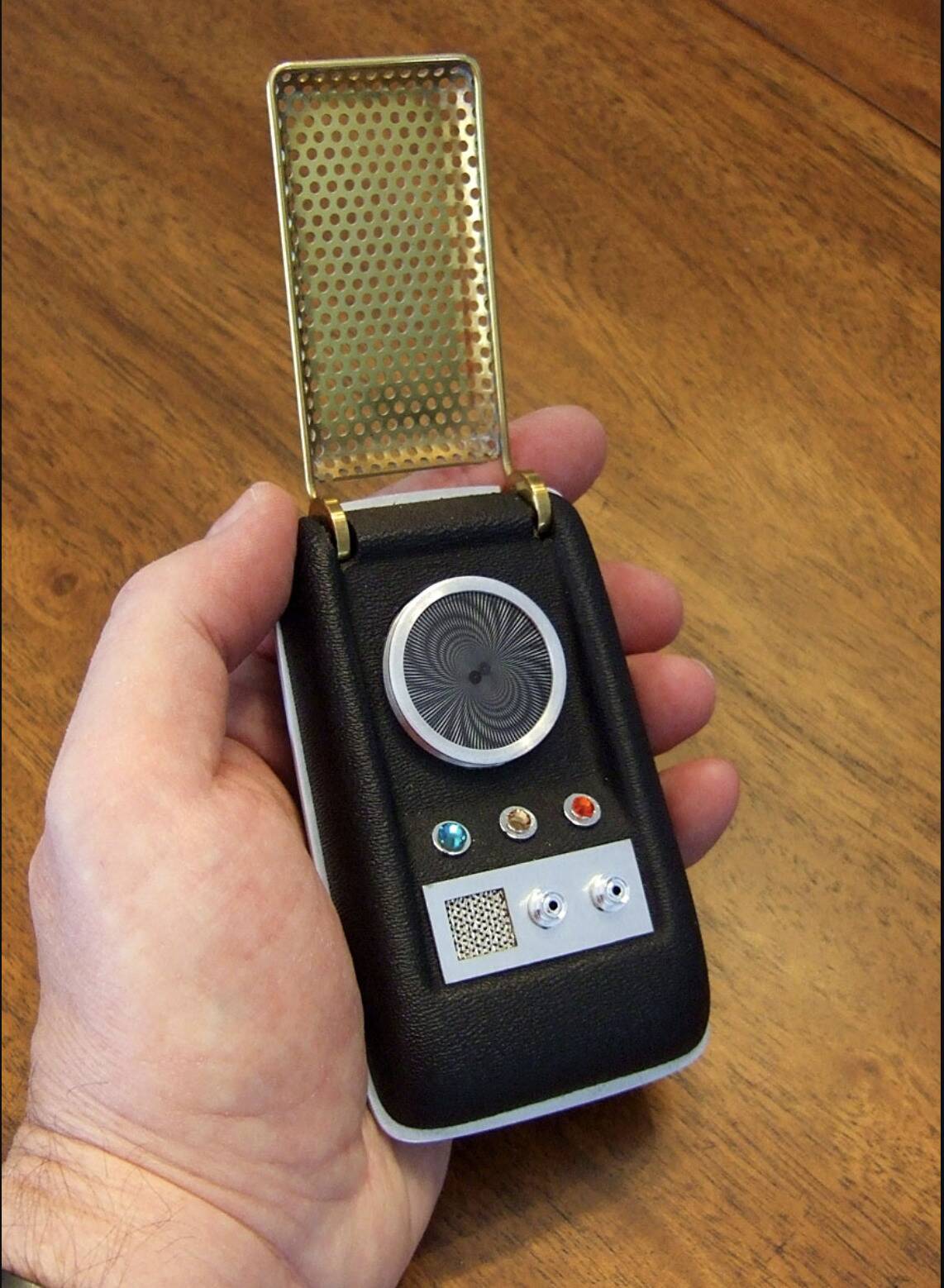
Communicators On Star Trek Influenced The Flip Phone
The iconic communicators featured on Star Trek served as a source of inspiration for the design and technology behind flip cell phones.
The first flip phone, the Motorola StarTAC, was introduced in 1996 by Motorola in the United States. Its sleek, compact form factor and ability to flip open and close echoed the futuristic communication devices seen in the beloved science fiction series.
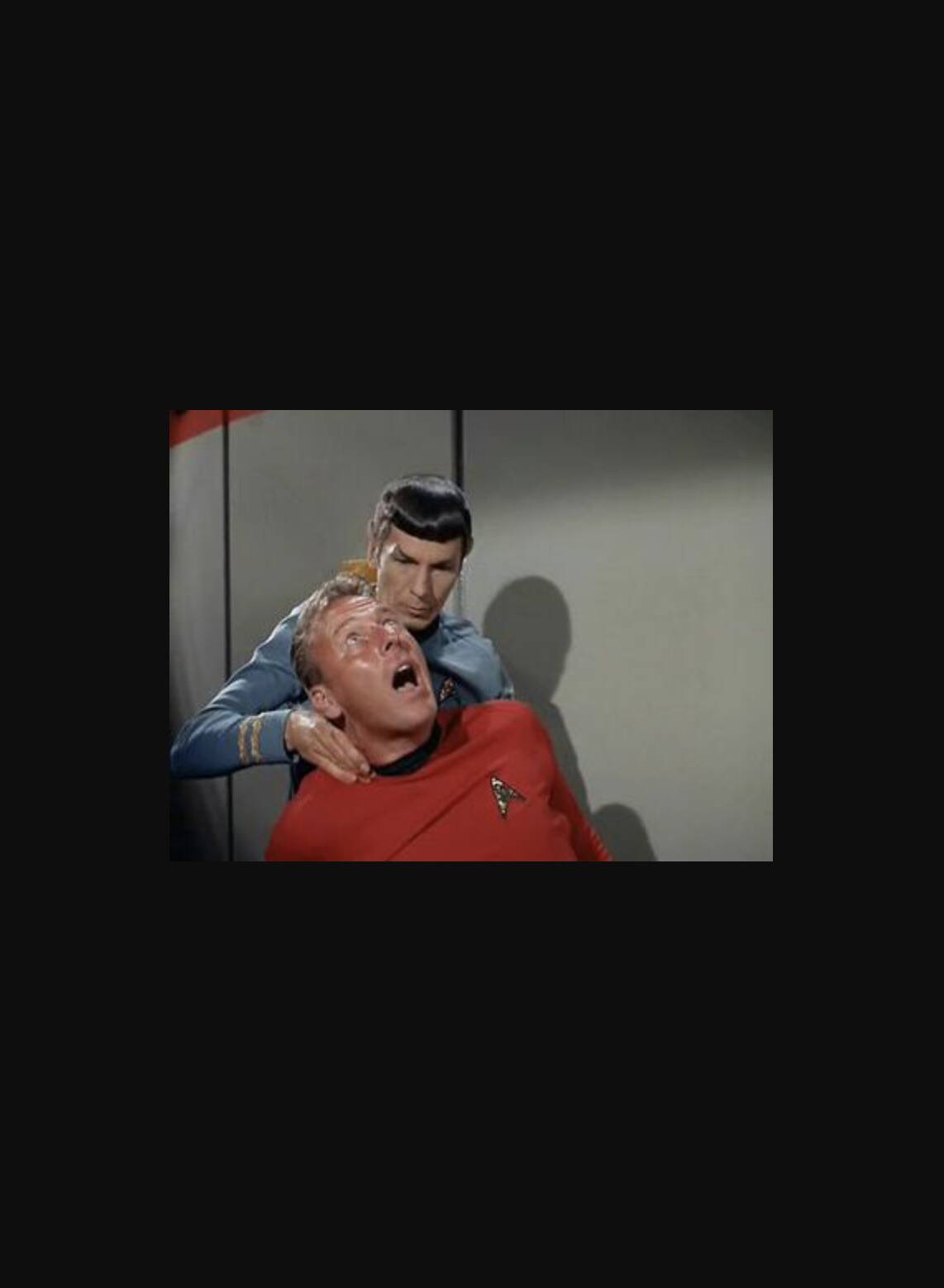
Nimoy Invented The Vulcan Nerve Pinch
Leonard Nimoy was a method actor before his role as Spock in the TV series. Nimoy is credited with inventing the Vulcan grip. This maneuver, performed by joining the fingers in a specific pattern and applying pressure to the neck, swiftly immobilized opponents.
Affectionately dubbed the "Vulcan nerve pinch," it became a trademark move synonymous with Spock's logical and formidable nature.
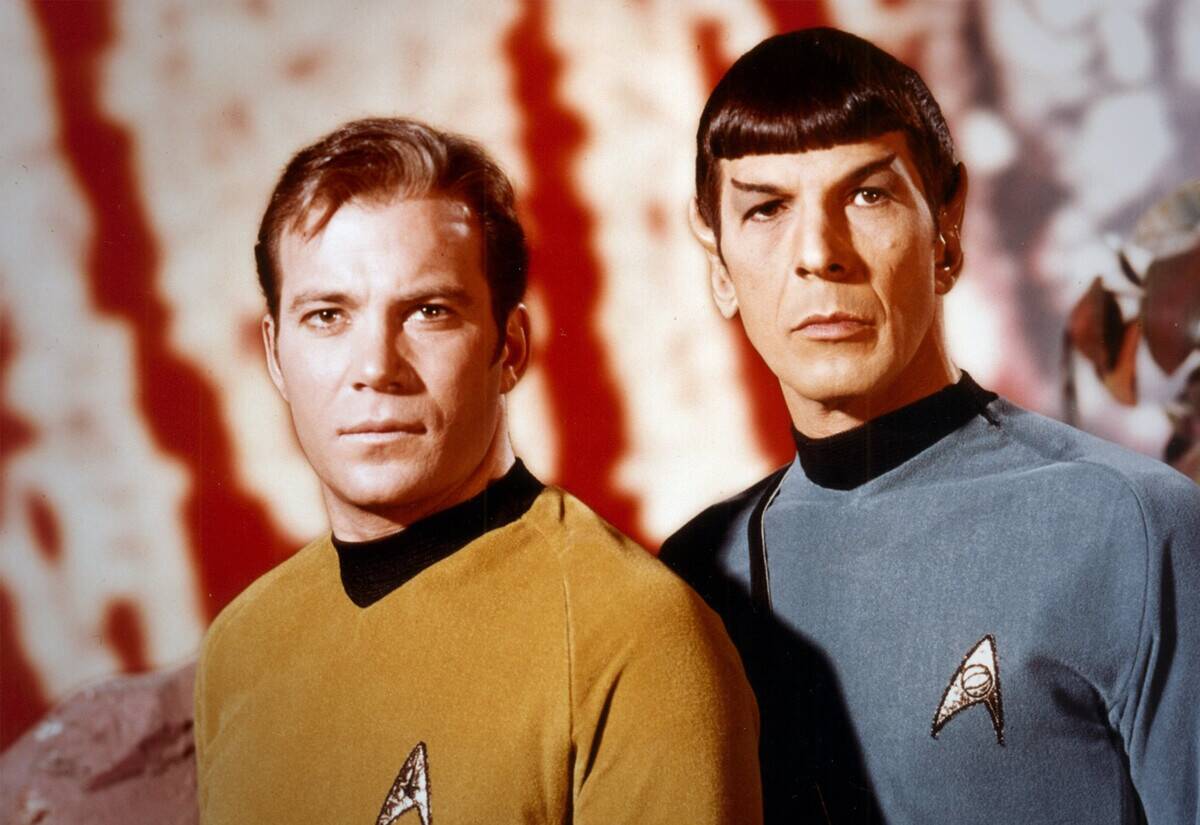
Shatner And Nimoy Were Rivals Turned Friends
Actors Shatner and Nimoy, once competitive, formed a unique bond while performing together on screen. They frequently collaborated at Star Trek conventions, delighting fans in character. However, Shatner privately voiced his unease over Spock's popularity overshadowing Kirk.
Despite this, their enduring friendship triumphed, showcasing the depth of their connection beyond on-screen rivalry.
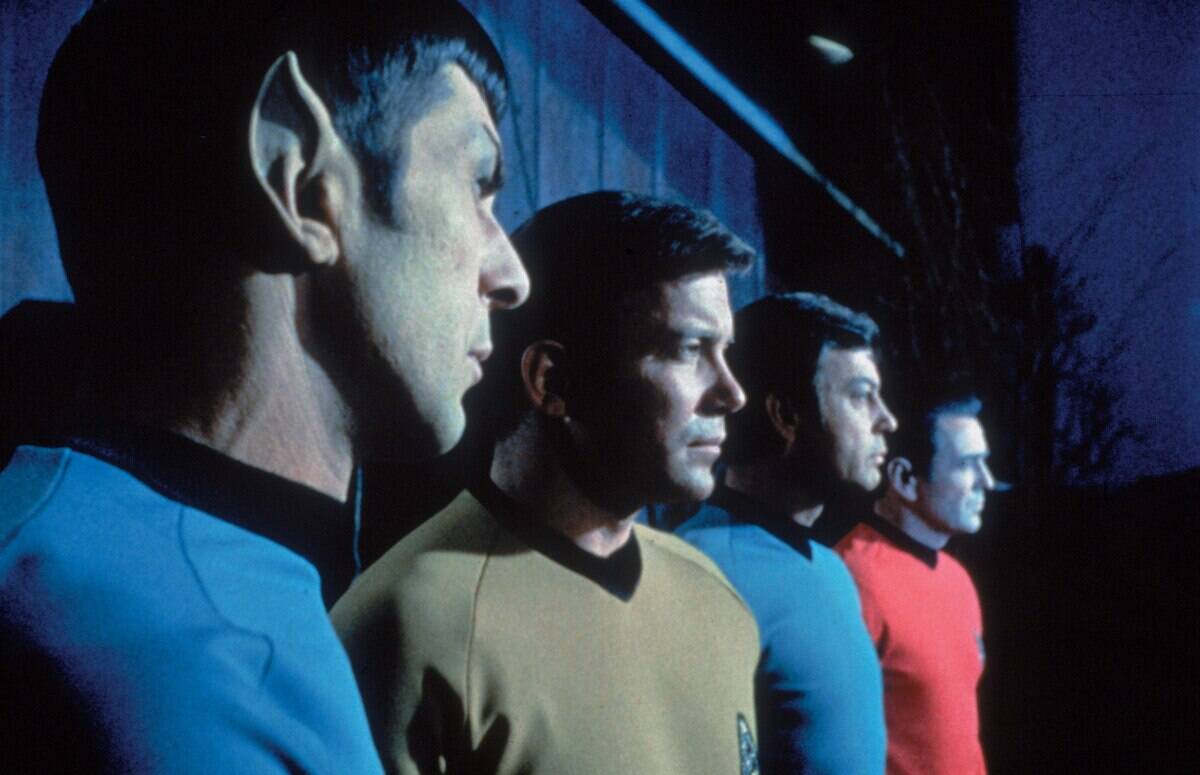
Paramount Tried To Deep-Space Star Trek
After producing the original Star Trek series, Lucille Ball and Desi Arnaz's production company sold it to Paramount. The company then attempted to sell it to Roddenberry, the show's creator, who couldn't afford it, compelling them to retain ownership.
Massive financial losses and a scarcity of syndication-worthy shows prompted their desire to sell the rights.

Kirk Never Asked Scotty To Beam Him Up
The iconic phrase "Beam me up, Scotty" is widely associated with Star Trek , but interestingly, it's never actually spoken in the show. The character referred to as "Scotty" is Montgomery Scott, the skilled chief engineer of the USS Enterprise, played by James Doohan.
The phrase has become a popular cultural reference nonetheless and has been used in subsequent Star Trek films.

Shatner's Superiority Complex Was Built Into The Script
William Shatner's commanding presence on set was accompanied by special considerations that ensured his prominence. With a guaranteed abundance of lines, his dialogue took precedence even when others were cut.
The hierarchy Shatner roamed the set with extended to the credits, granting him a higher placement, which added a palpable tension among the cast.
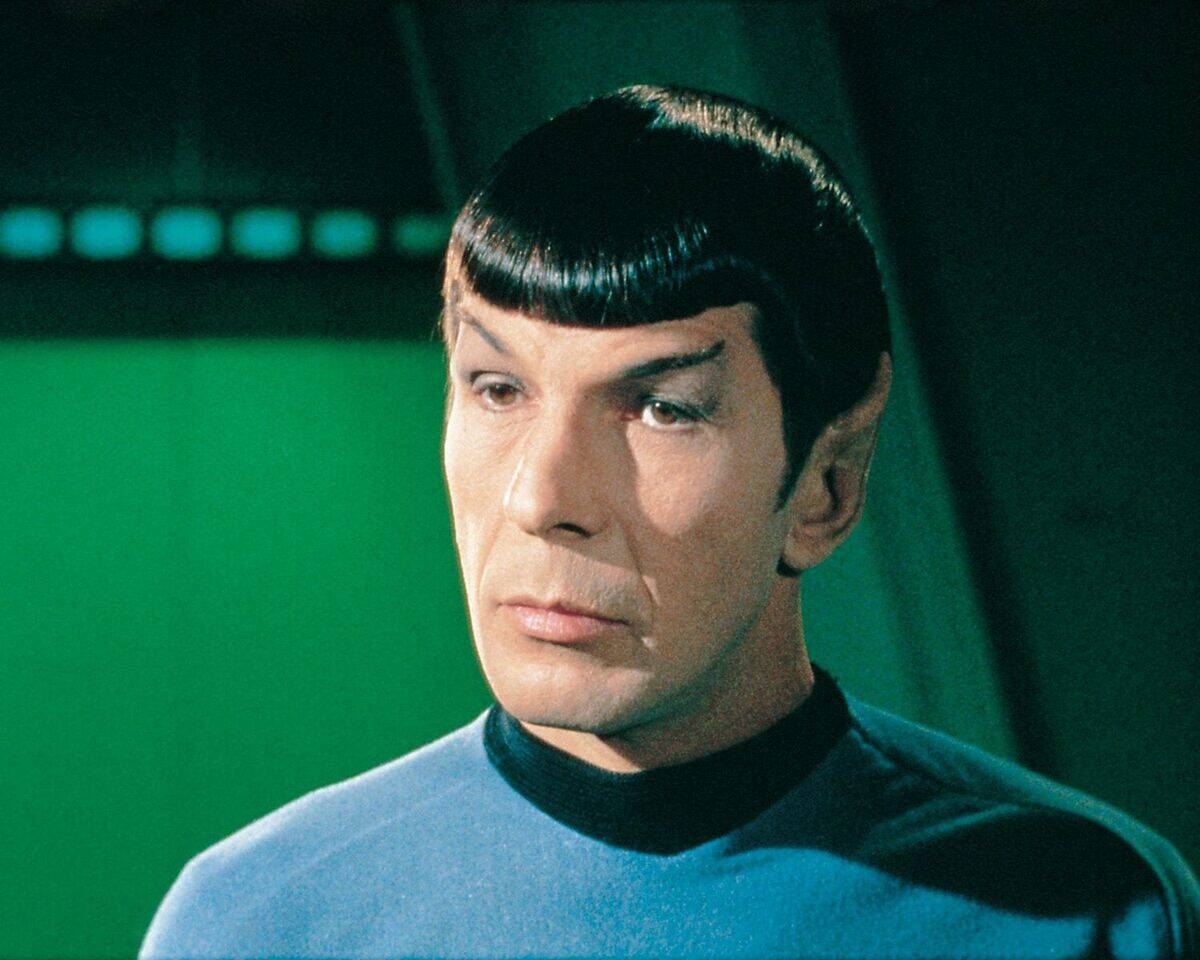
Nimoy's Dad Offered "Spock Haircuts"
The immense popularity of the show Star Trek transcended the screen, reaching Leonard Nimoy's own father, a barber.
In his bustling barber shop, he delighted customers, often fans of the series, by offering them the opportunity to sport a haircut reminiscent of the iconic Spock. It was a testament to the show's lasting cultural impact.
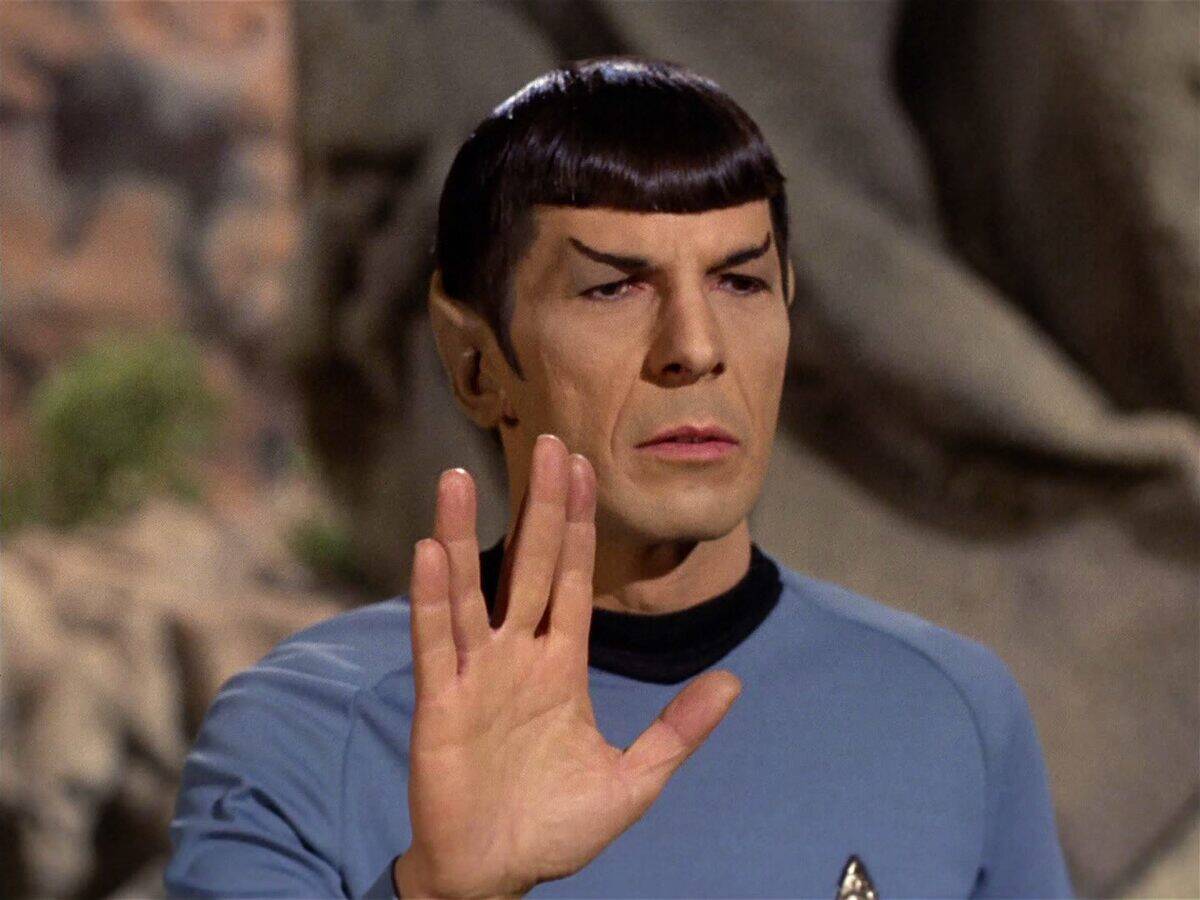
Nimoy Created The Spock Salute
The origin of Spock's iconic salute can be traced to Leonard Nimoy's creative inspiration. Drawing from his Jewish heritage, Nimoy crafted the distinctive gesture by adapting the hand sign used in a sacred Hebrew blessing.
The open hand, with fingers separated in a "V" shape, became synonymous with Vulcan culture and a beloved symbol for Star Trek fans worldwide.
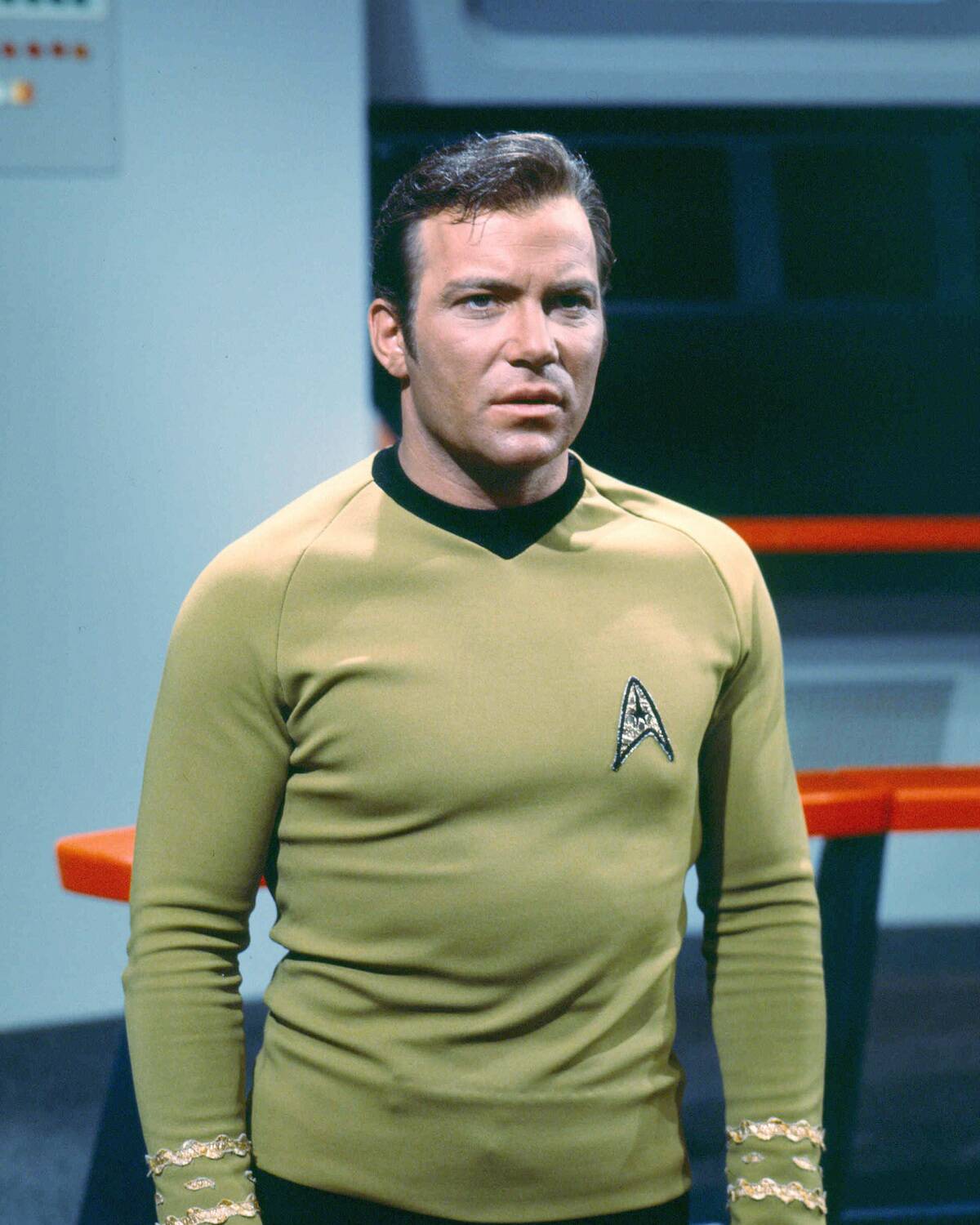
Shatner Could Not Do The Vulkan Salute
William Shatner, despite his fame as a versatile actor, faced a physical challenge when it came to executing the iconic Spock salute. He couldn't do it.
Stagehands resorted to clever tricks, using fishing lines to carefully tie his fingers apart, ensuring the desired hand gesture. This ingenious solution enabled Shatner to flawlessly showcase the Vulcan salute.
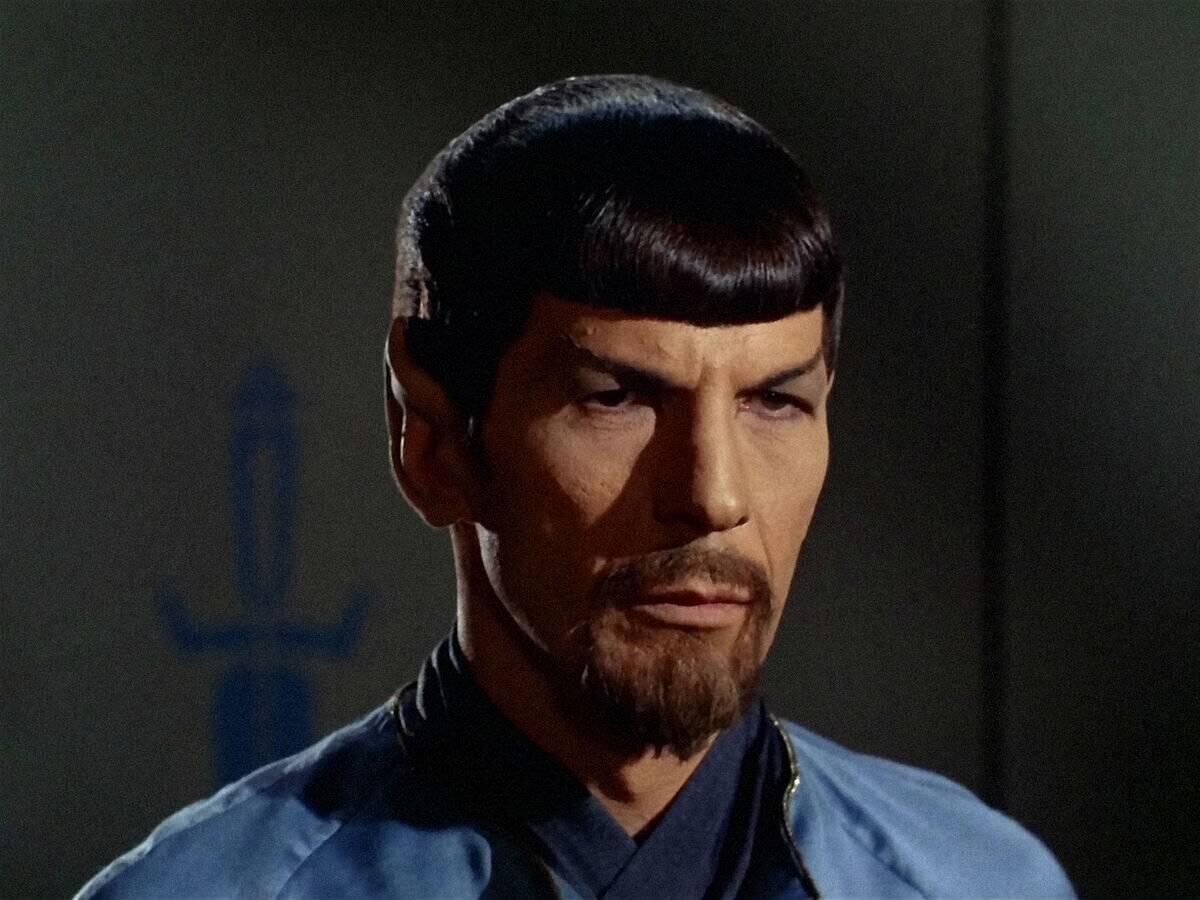
Nimoy Thought He Was Spock
Leonard Nimoy, the brilliant mind behind the creation of Spock, received a modest payment of $2,000 per episode for his iconic portrayal. Despite the show's immense success, he yearned for greater financial recognition.
Dealing with newfound fame was a daunting challenge for the talented actor. Nimoy preferred to stay in character even when not on screen. Shatner accused Nimoy of being Spock more than his natural self.
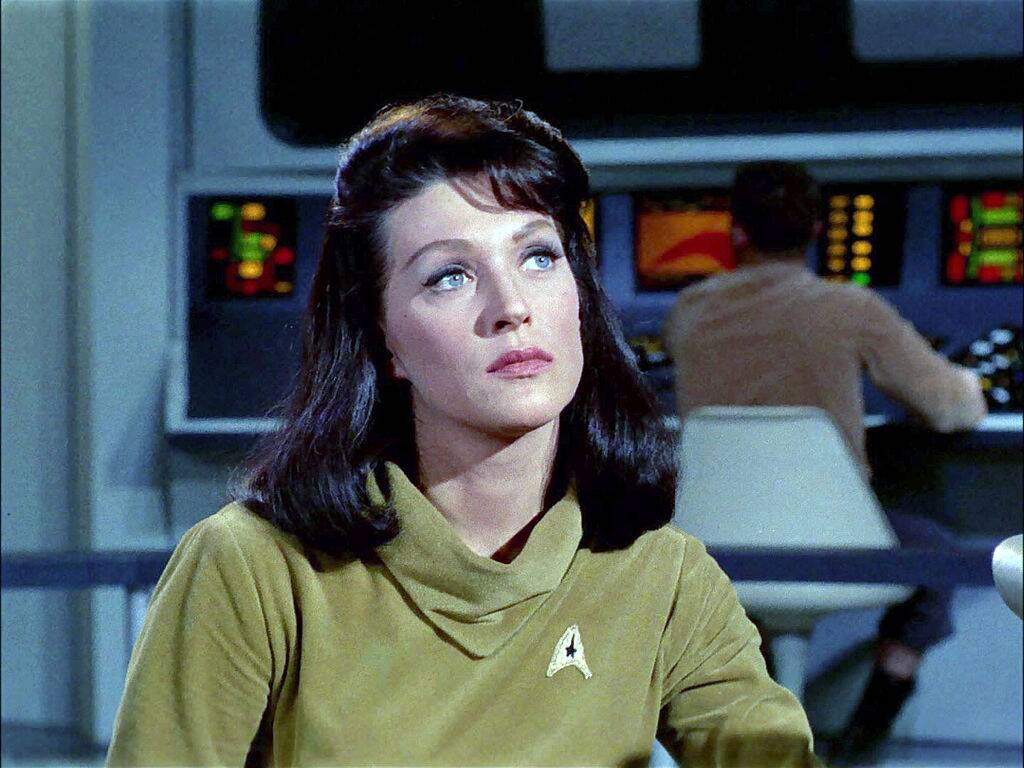
Spock Was Initially Supposed To Be Female
Initially intended to be female, Spock's character changed significantly before the show's executives decided to make the logical Vulcan a male.
This alteration unknowingly would shape the beloved character we now know and remember fondly, portrayed by Leonard Nimoy, who brought intelligence, stoicism, and a unique perspective to the Star Trek universe.
Nimoy And Shatner Suffered Tinnitus From Explosions
Leonard Nimoy and William Shatner have battled with persistent Tinnitus, a condition characterized by ringing in the ears, stemming from the explosive effects on set. The duo was standing too close to an explosion one day during filming, which caused their affliction.
Shatner resorted to utilizing a white noise-emitting device as a means to alleviate the issue.
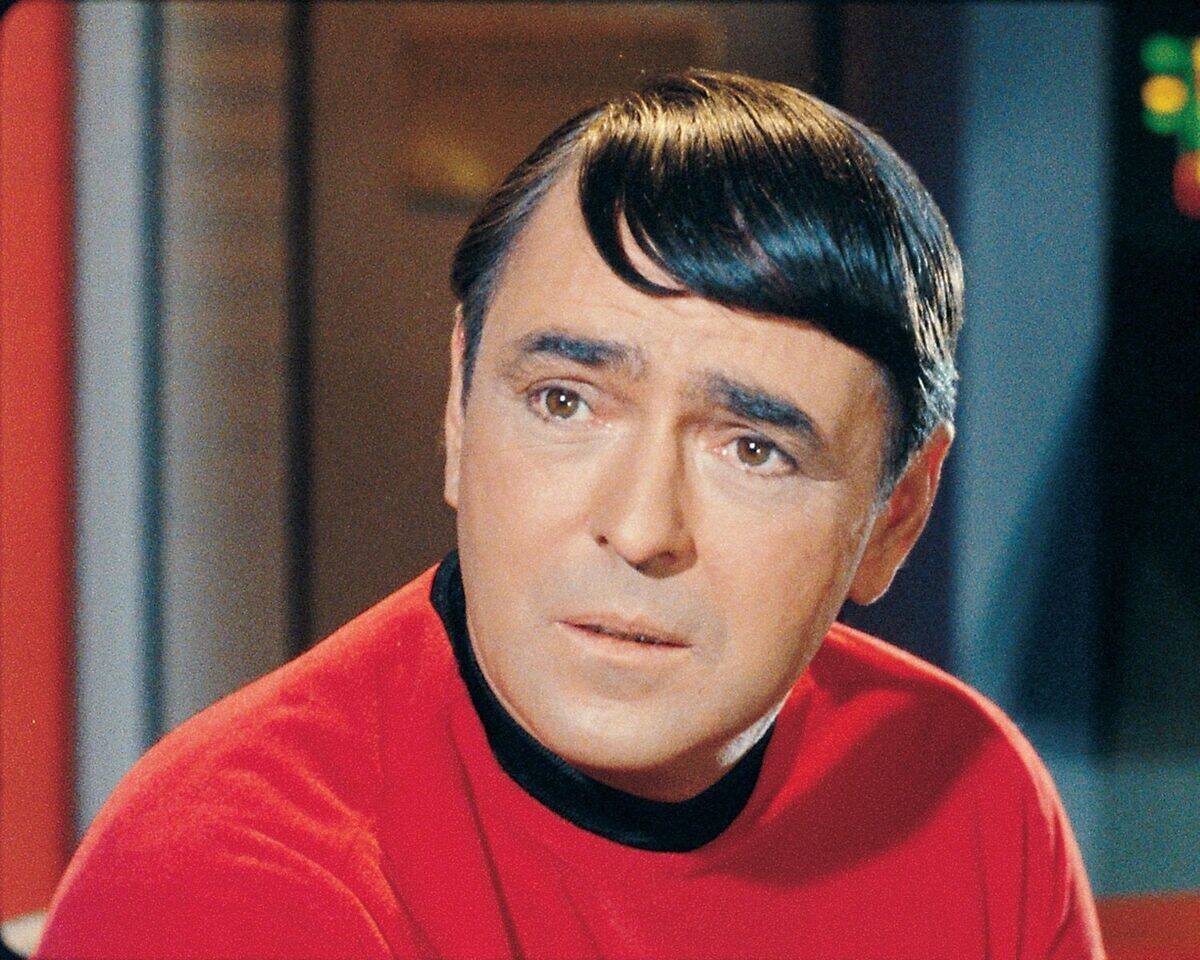
Scotty Was A Soldier Off Set
James Doohan, who portrayed "Scotty" in the Star Trek series, was a former soldier. He served in the Canadian military as a member of the Royal Canadian Artillery during World War II.
Doohan valiantly fought in several major battles, including the D-Day invasion.
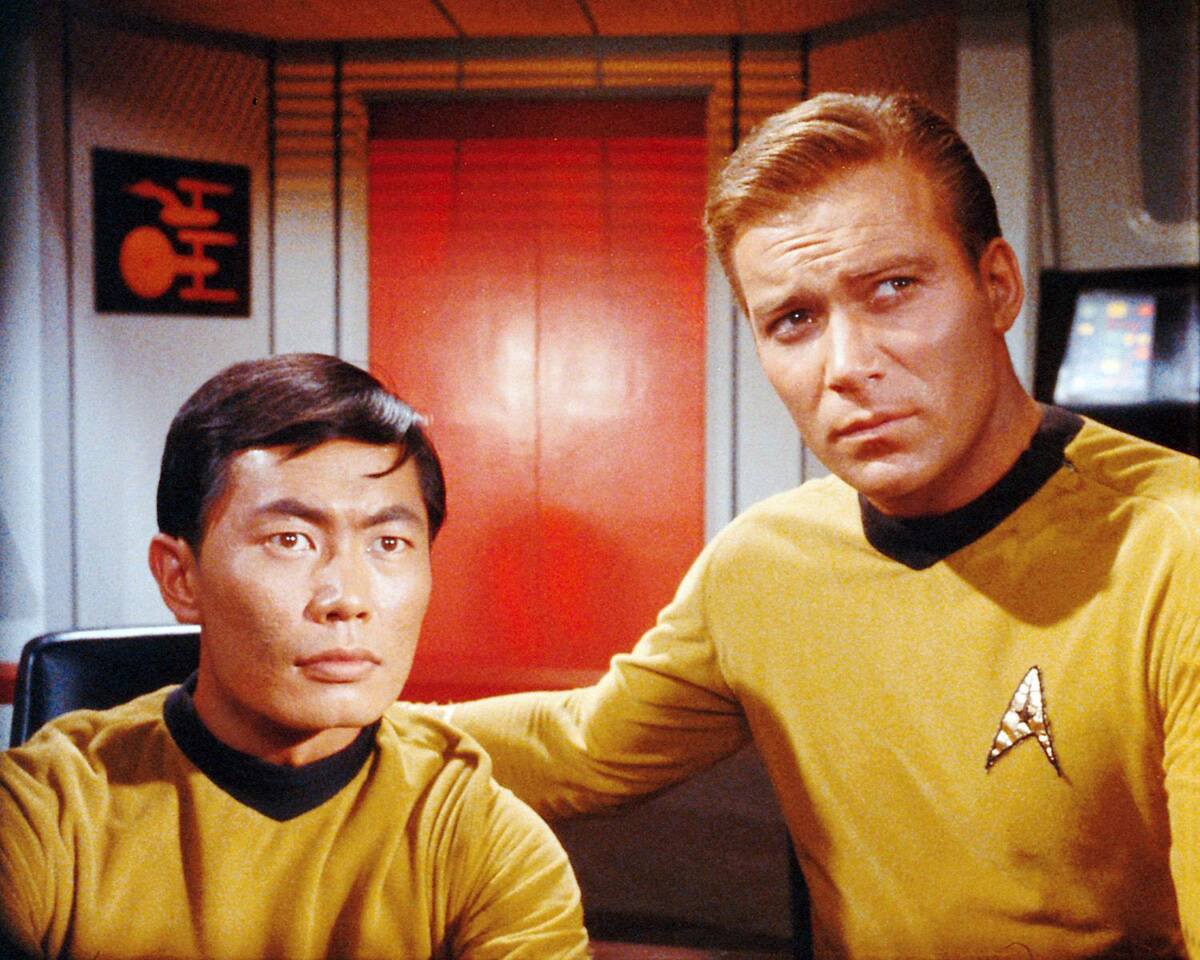
Takei And Shatner Clashed Off Screen
Star Trek co-star George Takei had a widely publicized feud with William Shatner. Takei famously remarked that Shatner exhibited an attitude of superiority, acting as if he was larger than the show itself.
This dynamic created tension between Takei, Shatner, and other cast members during their time in the series. According to Takei, "We all had problems with Bill on the set."
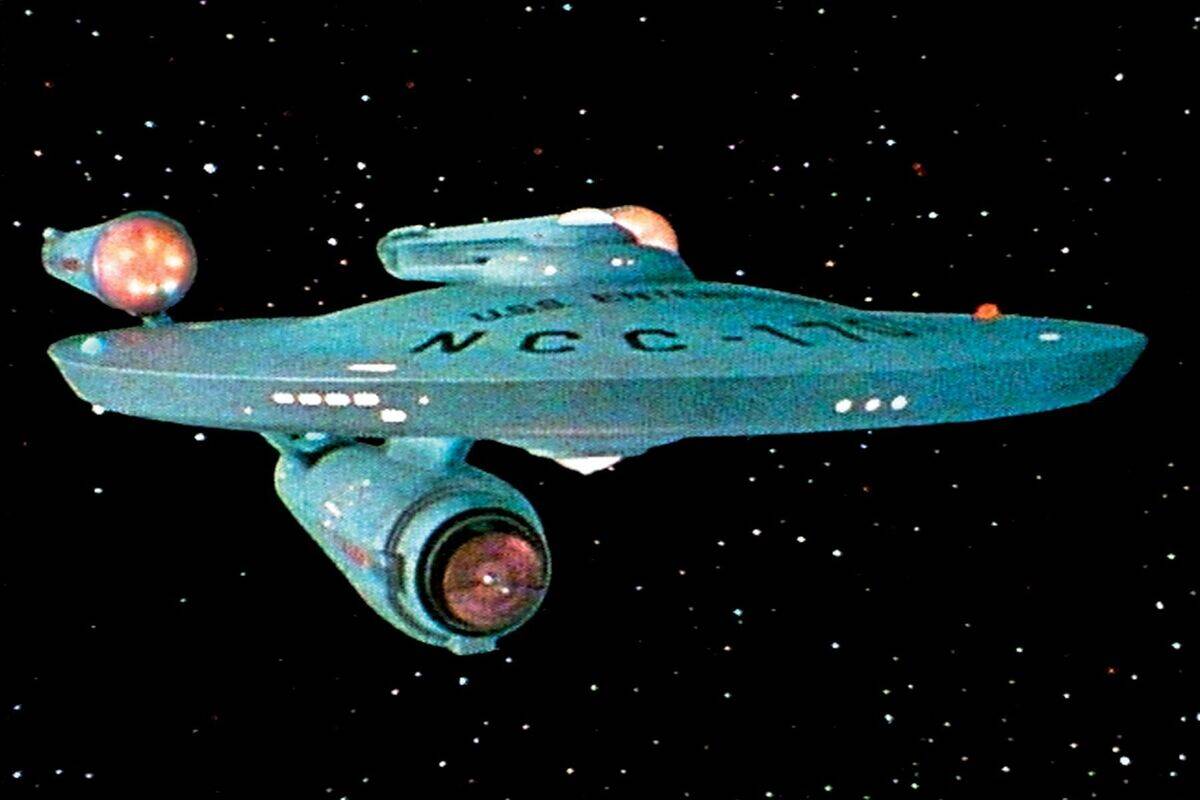
Every Stardate Announced Was Completely Random
The signature Stardate, spoken at the start of each Star Trek episode, held a unique charm. Fans quickly noticed that the numbers had no discernible sequence or pattern.
They soon realized what seemingly were arbitrary figures actually were made up, yet they embraced them as a beloved part of the show's immersive futuristic setting.
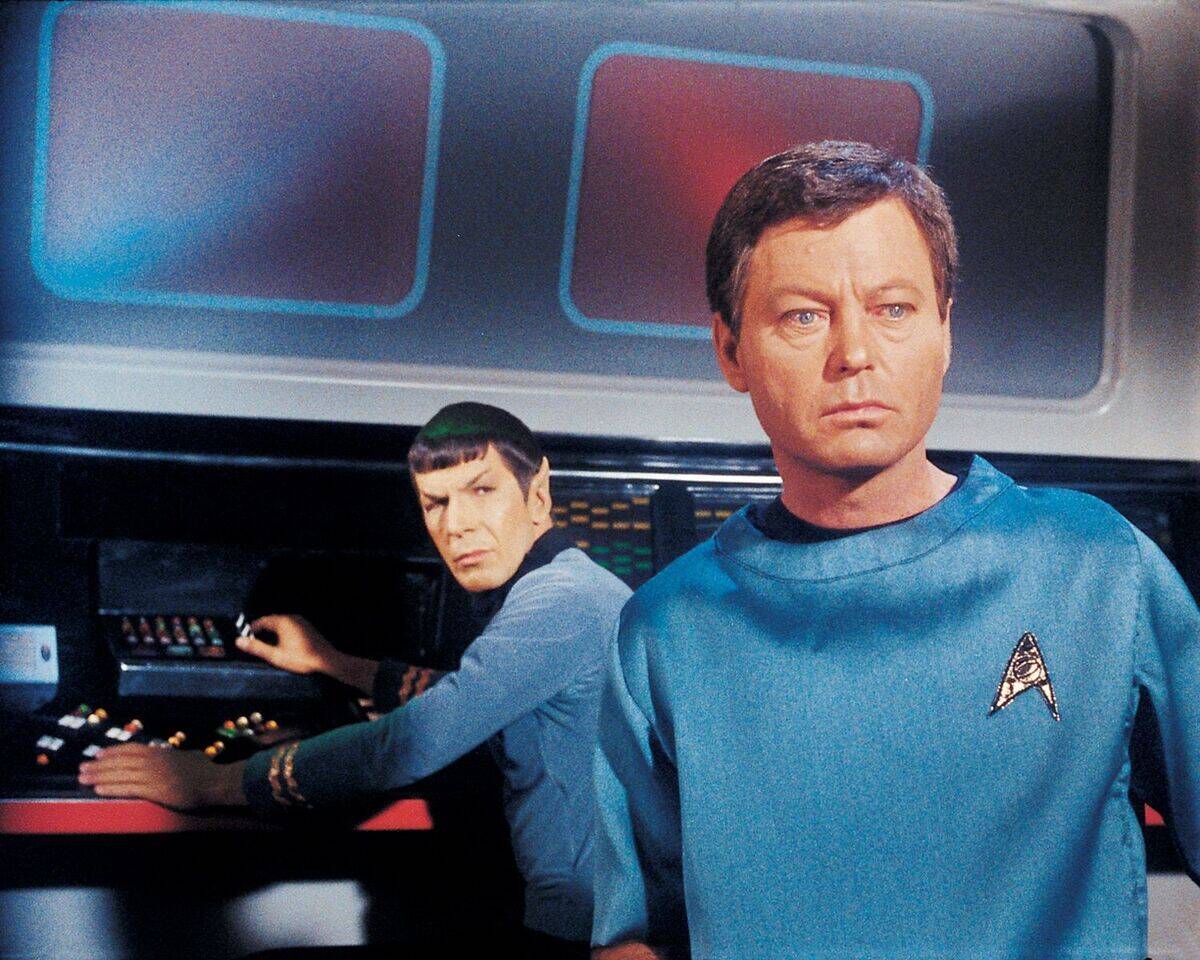
DeForest Kelley "Bones" Auditioned For Spock Initially
DeForest Kelley, known for his portrayal of the doctor in Star Trek , initially auditioned for the role of Spock but was rejected. However, he was later cast as Dr. Leonard "Bones" McCoy, the ship's compassionate and often grumpy physician.
His memorable performance made him an integral part of the beloved sci-fi series.
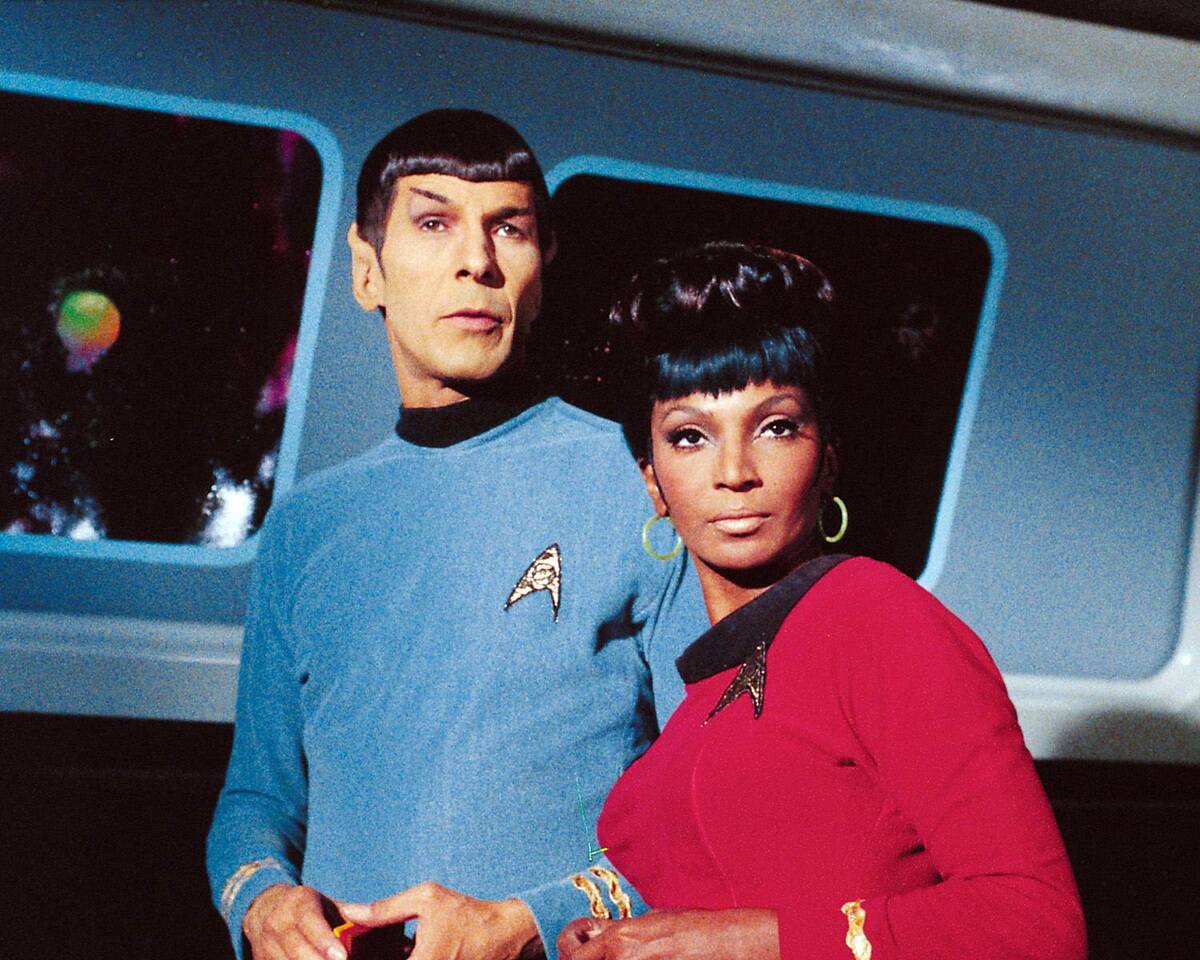
Spock Was Supposed To Kiss Uhura, Not Captain Kirk
The kiss between Captain Kirk and Uhura in Star Trek was first intended to be a kiss between Uhura and Spock. As fans probably remember from watching the episode, that kiss did not happen.
William Shatner, who played Kirk, complained until the scene was rewritten for his character.
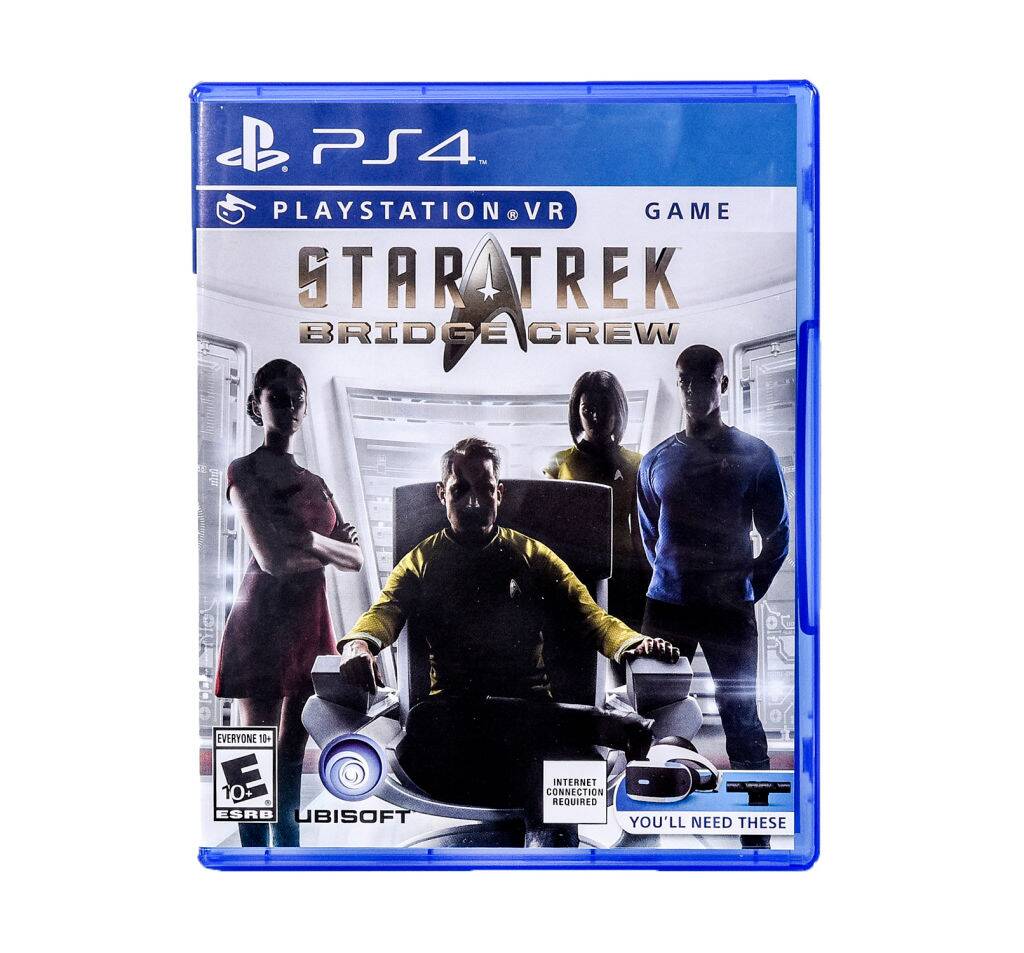
Star Trek Inspired Over 125 Video Games
The original series of Star Trek has served as the inspiration for over 125 video games since 1971. These games have spanned across various gaming platforms, including Atari, Commodore 64, Sega Genesis, PlayStation, and Xbox.
They have allowed fans to immerse themselves in the iconic universe of Star Trek in interactive and exciting ways.
More for You
7 Things the Middle Class Won’t Be Able To Afford in the Next 5 Years
Ukraine launched what may be the biggest drone attack on Russia since the war started
Female Rock Icons: Profiles of 25 Influential Singers
The biggest dog breed in the world—and see how other big breeds compare
Tom Brady admits officials made wrong call in 2017 AFC Championship Game
A Harvard-trained psychologist shares 7 books for a happy and fulfilling life
Noem banned by seventh Native American tribe
15 Kitchen Countertop Ideas That Will Totally Transform Your Kitchen
Putin Ally Vows Two NATO Capital Cities 'Will Also Be Ours'
LPGA Tour Release Statement After 10 Players Withdraw From Mizuho Americas Open
Meet the smartest dog breed in the world. Plus, see if your dog's breed is one of the top 60.
How to thrive under stress, according to a former Navy SEAL and FBI Agent
What Is Bipolar Disorder?
How To Ground an Ungrounded Outlet
WNBA Legend Sue Bird Addresses 'Unfair' Treatment Of Caitlin Clark
The World’s 10 Most Dangerous Caves to Explore
Young Sheldon’s Jim Parsons finale cameo changes the meaning of the entire series
Alvin Bragg Announces New Indictment
Ripped Off Again: 10 Companies That Have A Habit of Ripping Consumers Off
Jason Kelce says former Eagles teammate was 'absolutely terrible' at first
Screen Rant
Star trek: the original series cast & character guide.

Your changes have been saved
Email Is sent
Please verify your email address.
You’ve reached your account maximum for followed topics.
10 Best Star Trek: The Original Series Episodes To Hook New Fans
Two more young sheldon stars returning in georgie & mandy sequel series, before from season 3’s return, watch hbo’s 10-year-old mystery show with 91% on rotten tomatoes.
- Star Trek: The Original Series debuted in 1966 and immediately developed a devoted following, eventually becoming a cultural sensation.
- The show featured iconic characters such as Captain James T. Kirk and Mr. Spock, who have endured for nearly 60 years.
- While the show has some aspects that haven't aged well, like outdated special effects and misogynistic undertones, the original cast remains intoxicating and capable of bringing passion and intrigue to even the thinnest of plots.
Star Trek: The Original Series - originally known simply as Star Trek - features some of the most iconic characters in all of science fiction with the crew of the original USS Enterprise. After its initial pilot episode was rejected by network NBC, Star Trek was massively overhauled with a largely new cast and a more adventurous tone. Star Trek debuted in 1966, and while it was never a ratings champion, the show immediately attracted a devoted following. Star Trek would go on to become a cultural sensation in syndication in the 1970s and was eventually revived as a hit film franchise as well as a series of successful television spinoffs that continues to this day.
There are aspects of Star Trek: The Original Series that have not aged especially well; the special effects are quaint at best, and the misogynistic undertones of many episodes are hard to ignore when viewed in the 21st century. That said, the original Star Trek cast remains intoxicating , a fantastic group of actors who could imbue even the thinnest of plots with passion and intrigue. There's a reason these characters have endured for nearly 60 years.
Star Trek: The Original Series may feel dated in some ways, but here are 10 episodes that should hook even the most skeptical new fans.
10 William Shatner As Captain James T. Kirk
Captain of the uss enterprise.
After Jeffrey Hunter declined to reprise his role as Christopher Pike from Star Trek' s initial failed pilot, "The Cage," he was replaced by William Shatner's Captain James T. Kirk . Where Hunter's Pike had been an introverted and weary man, Shatner's Kirk was a swashbuckling charmer , as likely to get into a fistfight with a Klingon as he was to seduce an Orion slave girl. Kirk was largely defined by his decades-long friendship with his Vulcan First Officer Spock (Leonard Nimoy), with Kirk's dynamic bravado bouncing off Spock's measured logic resulting in one of the most fascinating relationships in all of pop culture. For many, James T. Kirk remains the gold standard for Starfleet Captains.
Paul Wesley plays the younger Lieutenant James T. Kirk in Star Trek: Strange New Words.
9 Leonard Nimoy As Mr. Spock
Science officer and first officer of the uss enterprise.
Arguably the most important character in all of Star Trek , Spock was the only character to be held over from the show's original pilot ,"The Cage," though the character was reworked to be far less outwardly emotional. A product of a human mother and Vulcan father, Mr. Spock was constantly torn between his two cultures; Spock chose to live his life as a Vulcan, though he most often surrounded himself with humans. Spock's unbreakable bond with Captain Kirk and his chaotic, tempestuous friendship with Dr. Leonard "Bones" McCoy (DeForest Kelley) formed the central trio of Star Trek: The Original Series . No Star Trek character has had a greater cultural impact.
Ethan Peck plays the younger Lieutenant Spock in Star Trek: Strange New Worlds.
8 DeForest Kelley As Dr. Leonard "Bones" McCoy
Chief medical officer of the uss enterprise.
The USS Enterprise's resident curmudgeon, Dr. Leonard "Bones" McCoy was not only the ship's brilliant physician, he was among Captain Kirk's closest and most trusted confidants. McCoy routinely went on away missions or sat in on important meetings that a ship's primary doctor wouldn't necessarily take part in generally, but "Bones" was part of Kirk's inner circle, and the Captain valued his opinion. McCoy often clashed with his friend and consistent irritant Spock , as the passionate country doctor and the cold, emotionless Vulcan could not have viewed the universe any more differently. Still, they deeply respected each other, even if they'd be loath to admit it.
7 James Doohan As Montgomery "Scotty" Scott
Chief engineer of the uss enterprise.
Known to all as Scotty, Commander Montgomery Scott (James Doohan) wore many hats on the USS Enterprise, overseeing the transporters and serving as Second Officer. However, Scotty was primarily known as the ship's Chief Engineer, able to seemingly pull off technological miracles whenever Captain Kirk needed them . A proud Scotsman, Scotty enjoyed playing the bagpipes and drinking his scotch - perhaps a little too much. Scotty was skeptical of new, untested technology, preferring to work on machines he knew well. Prone to outbursts of righteous anger, Scotty still remained one of Captain Kirk's most trusted officers, able to get the Enterprise out of virtually any jam.
Martin Quinn plays the younger Lt. Montogomery Scott in Star Trek: Strange New World s.
6 George Takei As Hikaru Sulu
Uss enterprise's helmsman.
Lieutenant Hikaru Sulu (George Takei) was the USS Enterprise's primary helmsman under Captain Kirk's command. Generally a reserved, genial officer, Sulu quietly contained multitudes . When a virus drove much of the ship's crew mad in the Star Trek: The Original Series episode "The Naked Time," Sulu was seen bouncing around the ship shirtless with a foil in hand. He displayed considerable bravery more than once, which eventually paid off for his career. By the time of Star Trek VI: The Undiscovered Country , Sulu had been promoted to Captain of the USS Excelsior, beginning what would go on to become a Starfleet career just as revered as Captain Kirk's.
5 Nichelle Nichols As Nyota Uhura
Uss enterprise's communications officer.
Lieutenant Nyota Uhura (Nichelle Nichols) was the Communications Officer on the bridge of the USS Enterprise. One of the few female characters and virtually the only Black character in a position of authority on Star Trek: The Original Series , Uhura was a revolutionary presence at the time the show was produced. Uhura was often relegated to being a background character, but she always shined when given the opportunity, whether it be flirting with Spock on the bridge or entertaining the crew with a song. Modern Star Trek has been much kinder to Uhura than TOS , but Nichols' immortal version is still deserving of praise.
Celia Rose Gooding plays the younger Ensign Uhura on Star Trek: Strange New Worlds.
4 Walter Koenig As Pavel Chekov
Uss enterprise's navigator.
Introduced in Star Trek: The Original Series season 2 when George Takei was unavailable while shooting a movie, Ensign Pavel Chekov (Walter Koenig) was a wide-eyed young Russian officer. Mr. Chekov was introduced not only due to Takei's absence, but also to acknowledge the Russians' at the time advanced progress in the 1960s space race. Chekov brought an innocent, youthful energy to the show, with a truly unforgettable Russian accent. Chekov was rarely the at the center of the action on TOS , but he was a character who was easy to like, and would eventually get to do some heavier lifting in the TOS film franchise.
3 Majel Barrett As Nurse Christine Chapel
Key member of uss enterprise's medical team.
Christine Chapel (Majel Barrett-Roddenberry) was Dr. McCoy's top nurse aboard the USS Enterprise. Chapel had an unrequited love for Spock , often seen pining for the Vulcan who could never give her the emotional connection she so desired. Chapel was a victim of Star Trek: The Original Series ' subpar writing for women characters in general, though things took a turn for the better by the time of the movie franchise, where it was revealed Chapel became a doctor and a full Starfleet officer. Chapel would get a much-needed reworking for the Paramount+ series Star Trek: Strange New Worlds .
Jess Bush plays the younger Nurse Christine Chapel on Star Trek: Strange New Worlds.
2 Mark Lenard As Sarek
Vulcan ambassador and spock's father.
Introduced in the Star Trek: The Original Series season 2 episode "Journey To Babel," Sarek (Mark Lenard) was the Vulcan ambassador to Earth, as well as Spock's estranged father . Sarek disapproved of his son's decision to enter Starfleet Academy, preferring him to live his life among Vulcans. The relationship between Sarek and Spock was deeply complicated ; while Sarek may have disagreed often with his son, he and Kirk risked everything dear to them to revive Spock in Star Trek III: The Search For Spock . Spock's fraught relationship with Sarek is one of the most enduring aspects of Star Trek: The Original Series .
James Frain played the younger Ambassador Sarek i n Star Trek: Discovery, which revealed that Sarek adopted Michael Burnham (Sonequa Martin-Green) as a child and raised him as Spock's sister.
1 Grace Lee Whitney As Yeoman Janice Rand
Captain kirk's yeoman in star trek: the original series season 1.
Janice Rand (Grace Lee Whitney) appeared in 8 episodes of Star Trek: The Original Series as Captain Kirk's Yeoman. Set up as a potential love interest for Kirk, Rand's role was severely reduced during production , often relegating Janice to bringing her Captain coffee and pining for the oddly resentful Kirk. The reason Whitney was fired from Star Trek was later revealed by the actress in her autobiography to be because she was assaulted by a network executive. However, Janice Rand did return in the Star Trek: The Original Series movies, and Grace Lee Whitney also played Commander Janice Rand in an episode of Star Trek: Voyager.
Star Trek: The Original Series is available to stream on Paramount+.
- Star Trek: The Original Series (1966)
- William Shatner

620 Star Trek: Original Series Trivia Questions, Answers, and Fun Facts
Answer: Turnabout Intruder This is one of the awful ones, sorry. Although the premise, mind-body exchange, is interesting, the episode is hopelessly chauvinistic, and the last line reflects it. A sad way for the Original Series' final aired episode to end on June 3, 1969.
From Quiz: "Star Trek" (Original Series): Famous Last Lines
Answer: Salt The Salt Monster was analogized in this episode to the Buffalo, the Passenger Pigeon, and the Chameleon. Although her frightening "true form" was never revealed until the very end, she took on many false appearances, chiefly Old Nancy Crater, but also, in order: Young Nancy Crater, Wrigley's Planet girl, crewman Green, Uhura's Swahili fantasy man, and finally Dr. McCoy himself! "The creature leading you a merry chase, Mister Sulu?"
From Quiz: "Star Trek", Original Series, Monster of the Week
Answer: Jane Wyatt Nothing had really been mentioned about Mr. Spock's parents to this point in the series. It came as quite a shock to find he has a human mother. If you had shown me a police lineup with ten women and asked me to pick the one I thought was Spock's mother, I am sure Jane Wyatt would've been the last one I would have chosen. Her most well-known TV role was as Margaret Anderson, the mother on "Father Knows Best". (Does that make Betty, Bud and Kathy Spock's step-siblings?)
From Quiz: "Star Trek TOS" - The Women in Spock's Life
Answer: NCC-1701 The letter "A" is later added to the registry number so that it could be distinguished from later models.
From Quiz: Star Trek The Original Series
Answer: launches a nuclear bomb The Romulans had attacked Federation outposts along the Neutral Zone. The Enterprise investigates and a game of cat and mouse develops with both sides getting hits on the other. Kirk tries playing dead to lure the Romulans closer. The trap works and the Romulans are left with the desperation move.
From Quiz: "Star Trek:: The Original Series" Quiz #2
Answer: Metamorphosis Chronologically, the events of this episode take place after "Star Trek: First Contact".
From Quiz: "Star Trek: The Original Series" Quiz #1
Answer: USS Enterprise USS Excelsior is first seen in "Star Trek: The Search for Spock" and becomes Sulu's ship in "Star Trek: The Undiscovered Country". The USS Saratoga is seen in the movie "Star Trek: The Voyage Home" and the USS Farragut is mentioned a few times during the series.
From Quiz: Basic "Star Trek" Trivia
Answer: Pavel Andreievich Pavel Andreievich Chekov is a young, slightly rebellious ensign on the Enterprise.
From Quiz: All About Chekov
Answer: his heart is where his liver should be The quote is actually "Lucky his heart is where his liver should be or he'd be dead now", from the episode "A Private Little War" in season two. Spock is shot in the chest with one of the rifles sold to the population of the planet by... by... well if you don't know that, you haven't watched nearly enough 'Star Trek'.
From Quiz: More "Star Trek: TOS" Mix 'n Match Questions
Answer: The Romulans We first come across the Romulans in the first series episode "The Balance of Terror" in which the Enterprise comes up against the first Romulan ship to have crossed over the Neutral Zone in a hundred years. Their resemblance to Spock causes the science officer a few problems onboard the Enterprise! The Neutral Zone is also a central element in the episode "The Enterprise Incident" in series 3, where Kirk and Spock deliberately enter it in order to steal the cloaking device that makes the Romulans so difficult to defeat.
From Quiz: "Star Trek" TOS - Mix & Match
Answer: Tiberius In the episode "Where No Man Has Gone Before", Captain Kirk's name was referred to as James R. Kirk but later was changed to James Tiberius Kirk.
From Quiz: Basic "Star Trek"
Answer: Fame in the peace movement This is a well-written story by Harlan Ellison.
From Quiz: Adventures of Kirk and Spock
Answer: 3 September 8, 1966 to June 3, 1969.
From Quiz: "Star Trek: TOS" Super Quiz
Answer: Lenore Karidian In "Conscience Of The King" (Ep. 13), Lenore Karidian (portrayed wonderfully by the beautiful Barbara Anderson) is the daughter of Anton Karidian, the leader of a traveling theater troupe. Lenore tries to kill (in one case, successfully) survivors of a massacre on Tarsus IV. Her motive... to protect her father from being exposed as Kodos "The Executioner" who initiated said massacre. Yeoman Third Class Tina Lawton is the pretty young blond that "Charlie X" rudely blows off after Janice Rand introduces the two. Areel Shaw is Kirk's old flame and also the prosecuting attorney in "Court-Martial." Dr. Janet Wallace is another of Kirk's old flames, and appears in "The Deadly Years."
From Quiz: The Lovely Ladies Of "Star Trek: TOS"
Answer: Canada Quadrotriticale was a four-lobed hybrid grain, derived from wheat and rye. It was also the only grain that could be grown on Sherman's Planet, which both the Federation and the Klingons were trying to claim. The origins of the grain came from triticale, which was discovered in Canada in the 20th Century. FAST FACT: Triticale does exist. The first successful fertile crossing of wheat and rye occured in the 1930s. In 1953, the University of Manitoba began an active triticale breeding program, which continues to this day.
From Quiz: History According to Chekov
Answer: Pavel Ensign Pavel Chekov joined the crew of the Enterprise at the beginning of Season 2 of "TOS". Rumors he was put there because the Russians complained were actually initiated by a PR stunt done by Gene Roddenberry himself. Played by Walter Koenig, Chekov was put on the bridge of the Enterprise because NBC wanted to attract a younger audience to the show by putting a youthful, slightly rebellious "Davey Jones" type character on the show. But, because he had just cut his hair before getting the job, Koenig had to wear a wig for his first few episodes!
From Quiz: The First Names of "Star Trek"
Answer: Operating the Transporter At the beginning of the episode, as Scotty is preparing to beam up Capt. Kirk, there is a close-up of Scotty's hands working the transporter controls. You can see his right hand at the sliders; he tries to hide it with his thumb, but you plainly see one finger on the sliders, and two behind the thumb. There are other occasions in other episodes in which you see a similar (or even the same) shot. Later, as Scotty reaches out to grab the "evil" animal so that Spock can anethsetize it, you can make out the gap where his finger should be.
From Quiz: Scotty's Missing Finger
Answer: 'Space Seed' The crew of the USS Enterprise encountered the Botany Bay, a DY-100 class vessel carrying close to 80 genetically enhanced men and women in suspended animation. They fled Earth in the 1990s to escape the Eugenics Wars that devastated humanity.
From Quiz: 'Star Trek' Word Association
Answer: Omicron Ceti III This planet was inhabited by colonists for about three years. It was believed that they had all died due to constant exposure to Berthold radiation, but mysterious spores prevented their deaths.
From Quiz: "TOS" Planets
Answer: NCC 1701 NX-1 is the original Enterprise under the command of Jonathan Archer.
From Quiz: 'Star Trek' - Original Series
Answer: Deforest Kelley
From Quiz: 'Star Trek TOS' No.1
Answer: Purple Majel Barret also played Number One, before she played Nurse Chapel.
From Quiz: Tough 'Star Trek TOS' Quiz
Answer: Rojan
From Quiz: The Original 'Star Trek'
Answer: Tiberius The 'T' in James T. Kirk's name stood for Tiberius, a name which was inspired by the Roman emperor Tiberius Julius Caesar Augustus. Creator of Star Trek, Gene Roddenberry chose the name as a symbol of the character's intellectual side, as well as his potential to be a great ruler. Kirk's full name was first mentioned in the Season 2 episode, "The Trouble with Tribbles", and was later confirmed in the Season 2 episode, "Bread and Circuses". The character of James T. Kirk, played by William Shatner, became an iconic figure in pop culture, admired for his bold leadership, wit, and courage. The character has appeared in multiple Star Trek television series and films over the past 50 years, cementing his place as one of the most beloved characters in science fiction history.
From Quiz: Some Tough 'Star Trek' Trivia
Answer: The City on the Edge of Forever Kirk had been forced by the time stream to sacrifice a woman he had fallen in love with to save the Enterprise from nonexistence. His choice was clear, but not easy. He wanted nothing more to do with the time Guardian.
Answer: Matter/antimatter reactor A matter/antimatter reaction allows warp speed, which is faster than light.
Answer: James R. Kirk The Enterprise had traveled through a barrier at the edge of the galaxy. Gary Mitchell and Dr. Elizabeth Dehner are knocked unconscious. When they wake up, they begin to develop powerful mental abilities. When their powers reach frightening heights, it leads to a final confrontation. (This was the only time that the "R" was seen as Kirk's middle initial.)
Answer: James T. Kirk James R. Kirk is what appears on his tombstone in the episode "Where No Man Has Gone Before" - the rest I made up.
Answer: The salt vampire was impersonating him. Green and another security officer were dispatched to search for the missing Nancy Crater. The salt vampire, who had been impersonating Mrs. Crater, killed both security men and impersonated Green so it could go up to the Enterprise. Kirk and Spock later find Green's body on the planet's surface, but by then the salt vampire has abandoned Green's appearance. Crewman Green can be seen in "The Man Trap."
From Quiz: He's dead, Jim!
Answer: 2245 2237 is Uhura's birth year, 2236 is Sulu's birth year, and 2233 is Kirk's birth year.
Answer: a peaceful silicon-based lifeform that feeds on rocks The episode is "Devil in the Dark" from series one. The Horta is a silicon based lifeform that lives on mining planet Janus VI and terrifies the miners by attacking them and... melting them into a heap of smoking goo. Kirk and his lot beam down, have a nosey and with the help of Spock's mind-meld strategy, work out that the Horta is attacking people because they are destroying its eggs during their mining. The episode ends with the crew of the Enterprise again managing to find a win-win situation for all parties. The Horta digs the tunnels, the miners mine, and everyone respects the other's space.
Answer: they eliminate the crew's sense of fear by injecting them with tranquillisers The alien feeds off people's fear, usually women's (because women are more afraid of men, of course...). When the alien tries to terrify the Enterprise crew by threatening to kill them, our team come up with the idea of injecting everyone with a tranquilliser to kill their fear. Kirk comments: "Well, Mr. Spock for the next five or six hours we're going to have the happiest crew in space... of course, we won't get much work done." Unfortunately, it also means he will have no-one to beam back down to the brothel with. Life is hard sometimes.
Answer: Vulcan and Human Spock's mother was a Human and his father was a Vulcan. Although Spock was half Human, he rarely ever showed his Human side.
Answer: Kirk goes alone to a different time Kirk ends up alone while Spock and McCoy end up in an ice age environment.
Answer: S. S. Antares Captain Ramart contacts Kirk to warn him about Charlie, but Charlie destroys his ship with his psionic powers.
Answer: "By Any Other Name" Yeah... in "By Any Other Name" (Second Season, Ep. 50), Kirk's ship has been hijacked by the Kelvans for a 300-year journey, he and his crew's lives have been threatened, all but four of his crew have been reduced to inanimate dodecahedrons, and the same fate for the rest of the crew is imminent... but hey... Kirk always can find some time for a little "wubba-wubba, ah-ooooooo-gah, gitchy-gitchy"... in fact, it's the only way to save the ship! Kelvan hijacker Kelinda is played terrifically by Barbara Bouchet. The other three choices were from the third season. In "Wink Of An Eye", Kirk undoubtedly slept with Deela. In "The Paradise Syndrome", Kirk actually marries Miramanee. In "That Which Survives", the crew is confronted by the beautiful, but deadly projection, Losira.
Answer: just outside Moscow In "The Apple", the landing party marveled at the beauty of the planet Gamma Trianguli VI, comparing it to the legendary Garden of Eden. This led Chekov to claim its location was near Moscow. FAST FACT: During news coverage of Second Gulf War in 2003, I learned that the Garden of Eden was reputed to be near the city of Basrah, Iraq.
Answer: 892-IV Planet 892-IV was so similar to Earth, the only difference was the shapes of the continental land masses! The inhabitants of this planet were very human-like and their society was a modern-day version of ancient Rome.
Answer: Because he looked like David Jones Walter Koenig's character was created to appeal to young teenage girls, because of his similar appearance to David Jones from 'the Monkees.' To confirm this answer, please check out 'Inside Star Trek The Real Story' by Solow and Justman Page 343. It is rumored that Roddenberry wanted a Russian on the bridge crew due to criticism the show received from Pravda (the official Soviet Newspaper.)
Answer: Freedom
- Español NEW
Star Trek: The Original Series facts for kids
Star Trek is a science fiction television series created by Gene Roddenberry that aired from September 8, 1966 to September 2, 1969. Though the original series was just called Star Trek , it got the nickname Star Trek: The Original Series ( ST:TOS or TOS ) to make it different from the spinoffs , and from the Star Trek universe or franchise they take up. Set in the 23rd century , the first Star Trek follows the adventures of the starship USS Enterprise (NCC-1701) and its crew, led by Captain James T. Kirk ( William Shatner ), his First Officer Mr. Spock ( Leonard Nimoy ), and his Chief Medical Officer Leonard McCoy ( DeForest Kelley ). William Shatner's voice-over introduction during each episode's opening credits stated the starship's purpose:
Space: the final frontier. These are the voyages of the starship Enterprise . Its five-year mission: to explore strange new worlds, to seek out new life and new civilizations; to boldly go where no man has gone before.
Early Years
Related pages, images for kids.
When Star Trek first came on NBC in 1966, it was not successful to begin; ratings were low and advertising revenue was very little. Even at the end of the first season of Star Trek , there were already calls in the network to cancel the series due to its low Nielsen ratings . Bay Area Creature Features host John Stanley in his memoir I Was a TV Horror Host relates how Desilu head Lucille Ball at that time "single handedly" kept Star Trek from being removed from the NBC-TV lineup."
Close to the end of the second season the show was still in danger of being canceled. Its fans succeeded in giving it a third season; but NBC moved the show to the "Friday night death slot" at 10 PM. Star Trek was finally canceled at the end of the third season, making 79 episodes in total. However, this was enough for the show to be stripped in syndication, allowing it to become very popular and gather a large cult following during the 1970s. After the success of the program, five additional television series and eleven movies, including the newest movie Star Trek , which came out in May 2009. Guinness World Records lists the original Star Trek as having more spin-offs than any other television show in history .
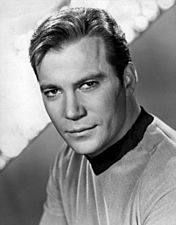
James T. Kirk
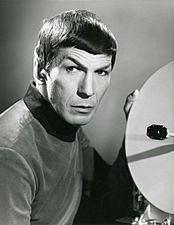
Leonard McCoy
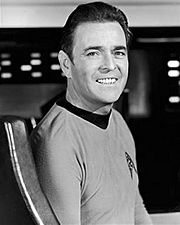
Montgomery Scott

Pavel Chekov
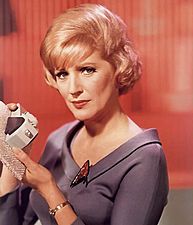
Christine Chapel
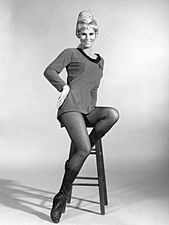
Janice Rand
While still casting the roles, Gene Roddenberry did not mandate Bones McCoy and Spock be male. According to Nichelle Nichols, "They gave me a three-page script to read from that had three characters named Bones, Kirk and somebody called Spock, and they asked me if I would read for the role of Spock. When I looked at this great text, I said to myself, 'I'll take any one of these roles,' but I found the Spock character to be very interesting, and I asked them to tell me what she [Spock] was like."
It was intended that Sulu's role be expanded in the second season, but owing to Takei's part in John Wayne's The Green Berets , he appeared in only half the season, his role being filled by Walter Koenig as the relatively young, mop-topped Russian navigator Ensign Pavel Chekov . When Takei returned, the two had to share a dressing room. The two appeared together at the Enterprise helm for the remainder of the series. There may be some truth to the unofficial story that the Soviet Union 's newspaper Pravda complained that among the culturally diverse characters there were no Russians, seen as a personal slight to that country since the Soviet Russian Yuri Gagarin had been the first man to make a spaceflight. Gene Roddenberry said in response that "The Chekov thing was a major error on our part, and I'm still embarrassed by the fact we didn't include a Russian right from the beginning." However, documentation from Desilu suggests that the intention was to introduce a character into Star Trek with more appeal to teenaged girls. Walter Koenig noted in the 2006 40th anniversary special of Star Trek: The Original Series that he doubted the rumor about Pravda , since Star Trek had never been shown on Soviet television. It has also been claimed that the former member of The Monkees , Davy Jones , was the model for Mr. Chekov.
In addition, the series frequently included characters (usually security personnel wearing red uniforms) who are killed or injured soon after their introduction. So prevalent was this plot device that it inspired the term "redshirt" to denote a stock character whose sole purpose is to die violently in order to show the danger facing the main characters.
Nathan Jung was a stuntman in this series.
- Star Trek: The Next Generation
- Star Trek: Deep Space Nine
- Star Trek: Voyager

The original starship Enterprise

William Shatner as Captain James T. Kirk in action, from the episode "Where No Man Has Gone Before", 1966

Title used for the first season

Spock , Kirk and the Enterprise , 1968.

"Spock's Brain" was the first episode of the third season.

Promotional photo of the cast of Star Trek during the third season (1968–1969). From left to right: James Doohan , Walter Koenig , DeForest Kelley , Majel Barrett , William Shatner , Nichelle Nichols , Leonard Nimoy , and George Takei .

The Captains, together in London at Destination Star Trek
- This page was last modified on 18 December 2023, at 13:01. Suggest an edit .

- More to Explore
- Series & Movies
Published Oct 11, 2021
10 Fun Facts About Star Trek V: The Final Frontier
"What does God need with a starship?"
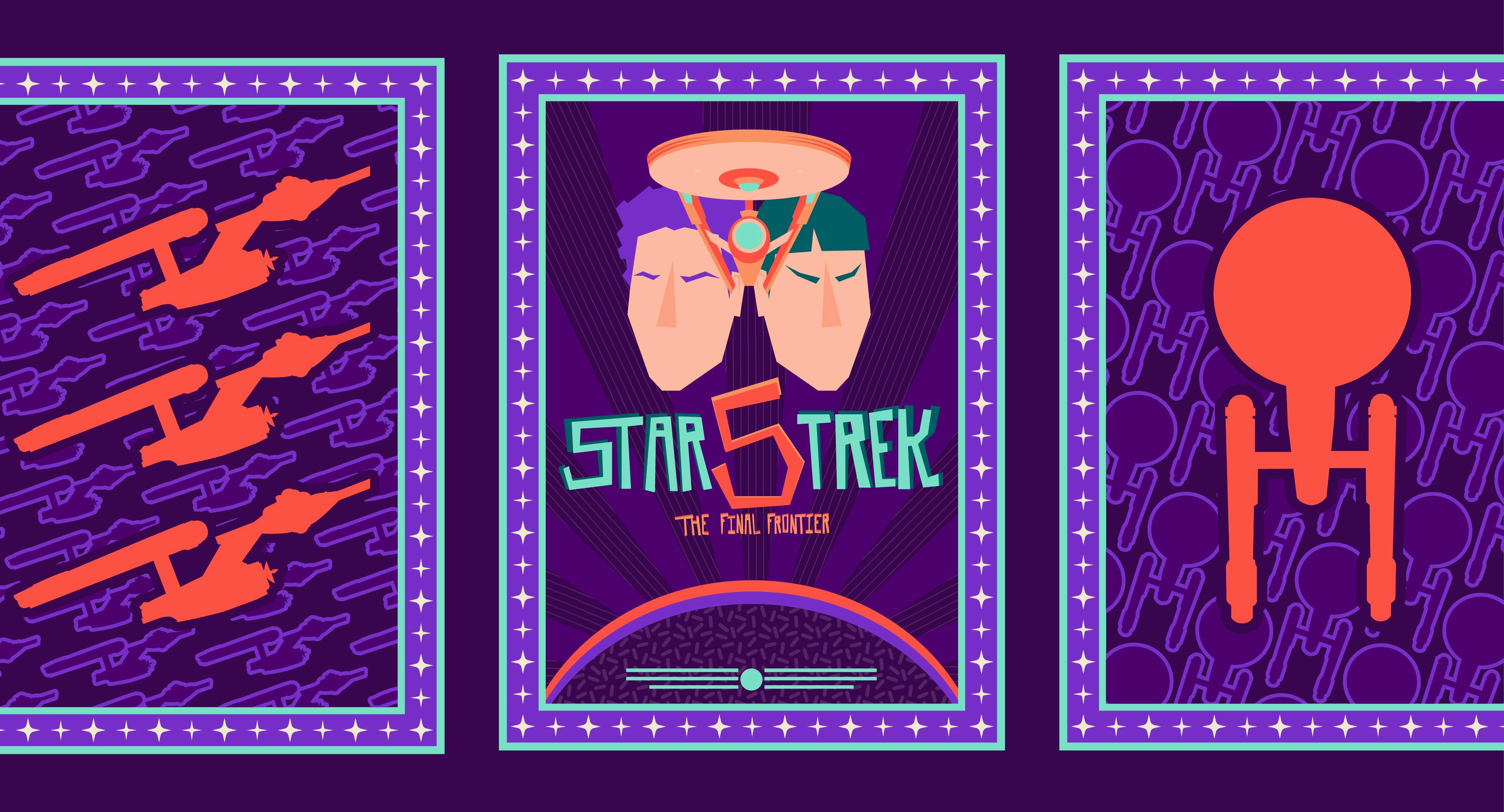
StarTrek.com
Let’s just say it: Star Trek V is not always considered one of Trek ’s finest moments by some fans. Audiences were shocked to learn that Spock had a brother they’d never heard of — there would be similar indignance at the arrival of Michael Burnham 28 years later — and underwhelmed by the visual effects as well as the overall story. But despite its flaws, the movie has a lot of highly entertaining moments as well as its own special charm. What Kirk-Spock-McCoy fan can resist those campfire scenes? And what does God need with a starship?
To celebrate the film’s 32nd anniversary, here are some fun facts you may not be aware of.
The original story was going to be about meeting God… for real
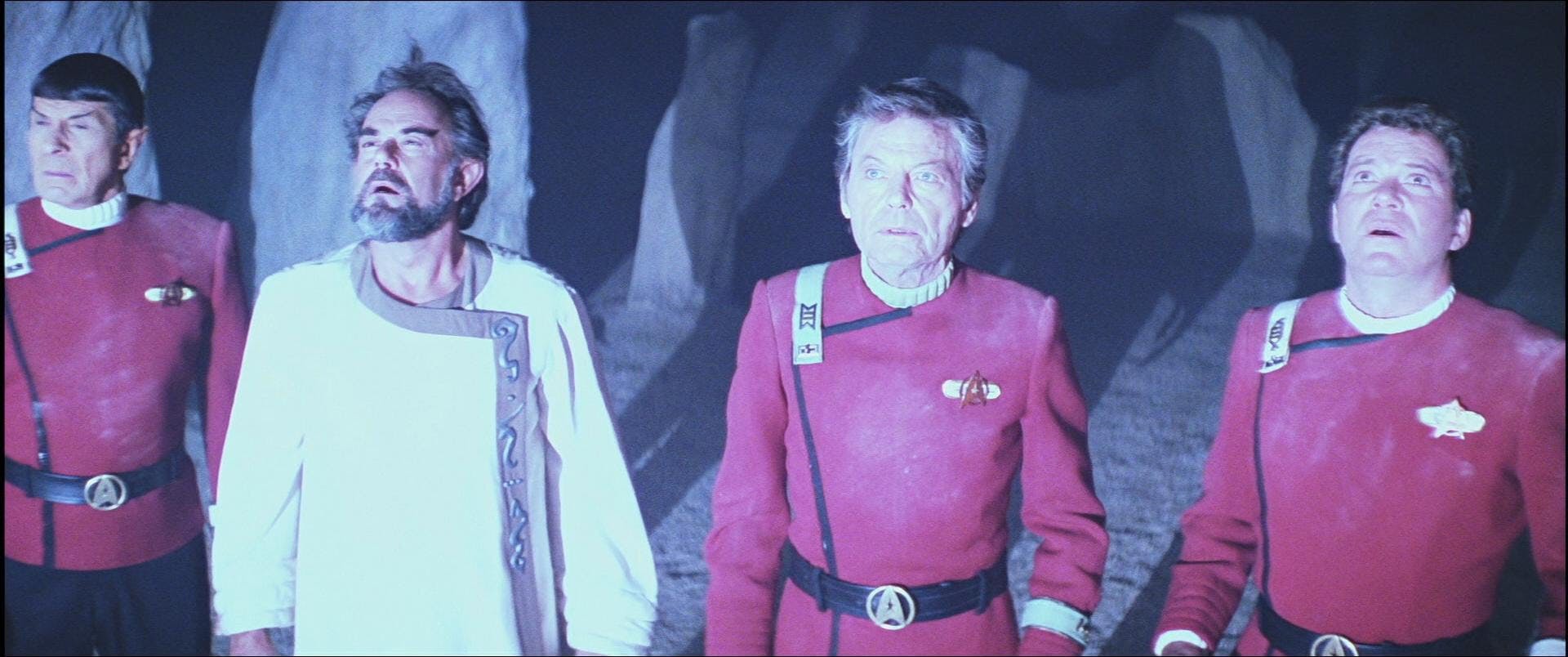
William Shatner says he got the inspiration for the movie after watching people like Jimmy Swaggart and Jim and Tammy Faye Bakker on TV. This was during the heyday of televised evangelism, when people were forking over all of their money to already-rich TV celebs claiming to have a direct connection to God. In his original plan for the movie, detailed by his daughter Lisabeth in her book Captain's Log: William Shatner's Personal Account of the Making of Star Trek V: The Final Frontier , the Enterprise crew was actually going to find God, only to have him turn out to be the Devil. There was even a scene where McCoy was dragged to Hell by furies, resulting in Kirk and Spock making like Orpheus to get him back.
Sybok wasn’t originally Spock’s brother
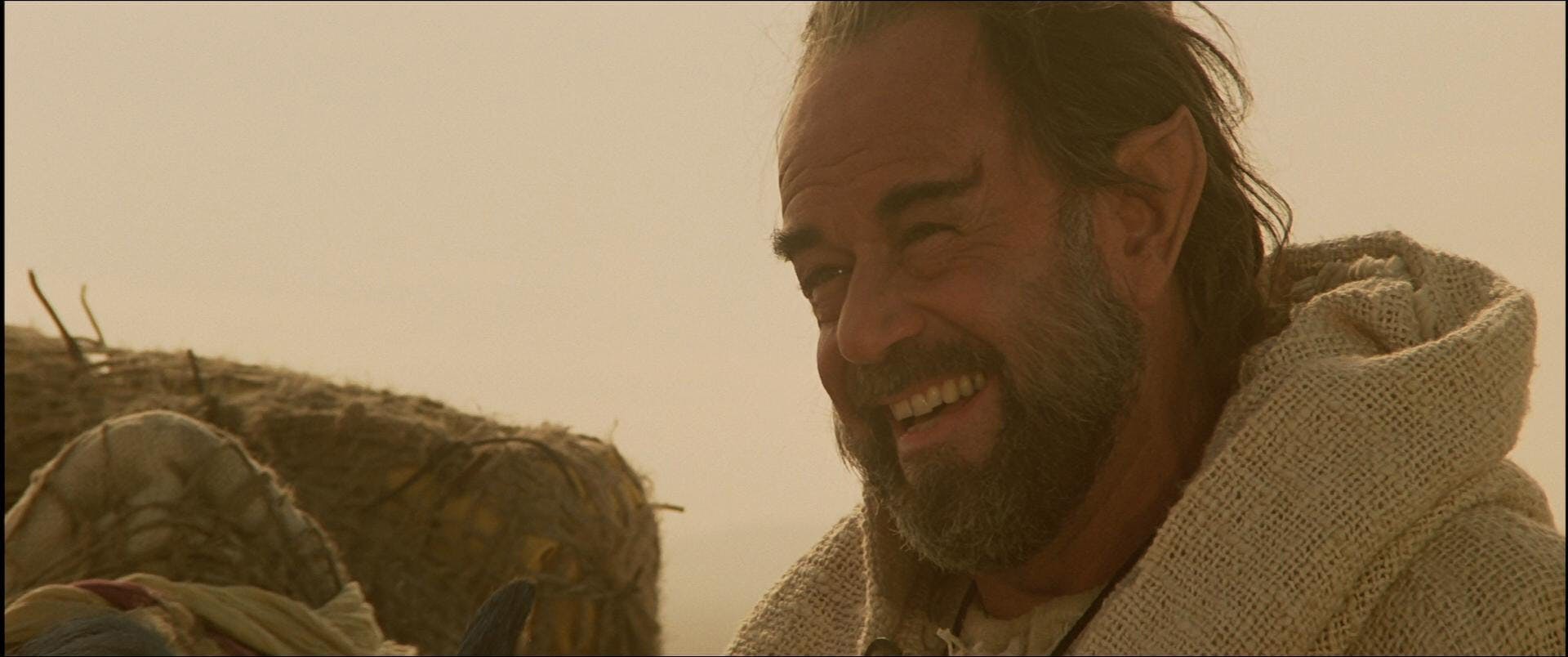
As other elements of the story shifted, so did its central antagonist. Originally named Zar, he was going to be a zealot similar to the Ayatollah Khomeini, who had become the supreme religious leader of the Islamic Republic of Iran in 1979. As the story shifted, the character changed along with it, until he was less like the Ayatollah and more like professor-turned-LSD-advocate Timothy Leary.
The story called for Spock and the Enterprise crew to temporarily betray Kirk and follow Sybok. The creative team was struggling to find a way to make that seem plausible, and then producer Harve Bennett “lit up” (says Shatner in his Movie Memories book) and shouted that he had the solution: Sybok would be Spock’s brother. Shatner hated the idea but was convinced to let Bennett map out the story, and he ended up liking it.
Of course, when Leonard Nimoy and DeForest Kelley heard that their characters were supposed to betray their captain, they each put a foot down; they knew their characters better than anyone, and they would never turn on Jim Kirk. They insisted that the story be changed, and ultimately, it was.
There were supposed to be all these Rock Men…
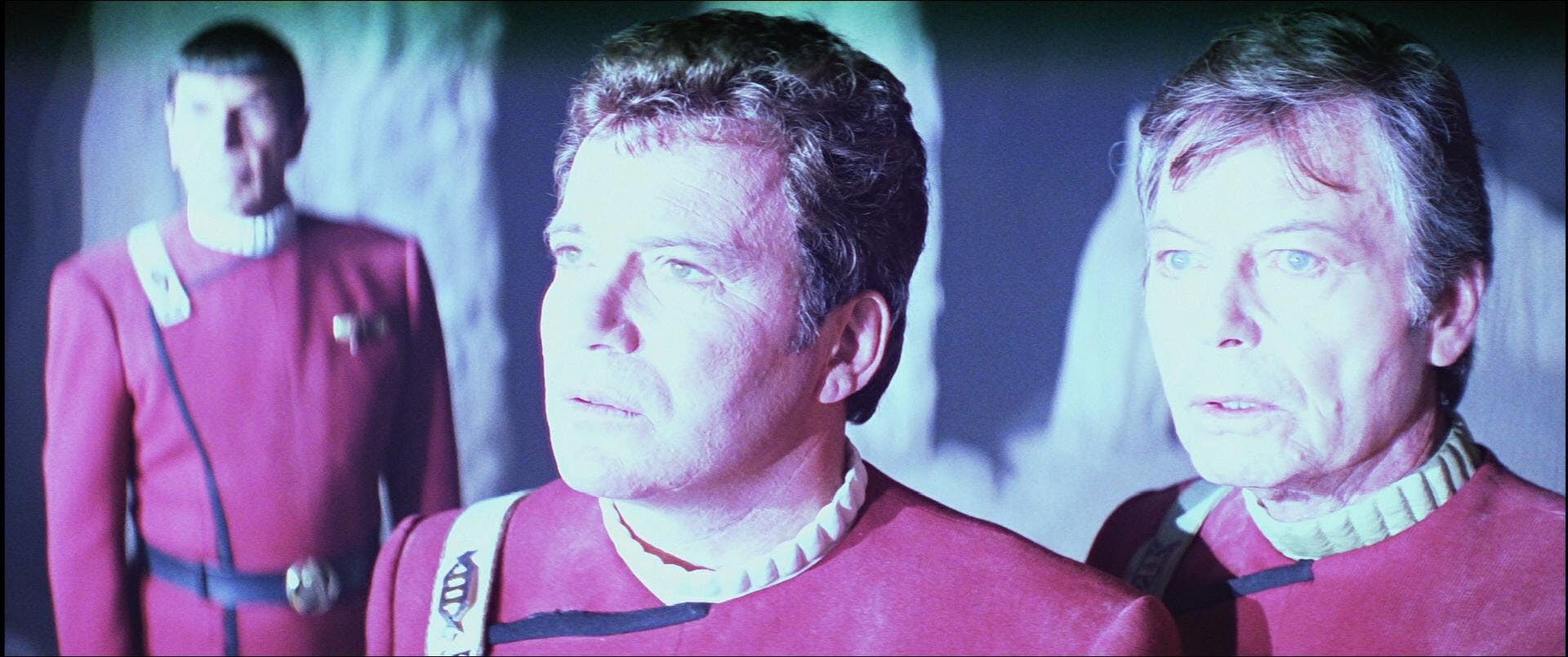
As William Shatner and writer David Loughery describe it, the movie’s original ending was huge in scope and highly cinematic, but every time the budget got whittled down, another key element disappeared; they chipped away at the ending until there was very little left of it.
The script called for the Furies to transform into Rock Men who’d explode from the dust, breathing fire and granite. It would feel like Dante’s Inferno ! The plan was to have ten Rock Men, until they learned the cost would be $350,000 each—which meant three and a half million dollars just for the ending. The studio told Shatner he could afford one Rock Man, so he came up with a plan for exactly how he’d film it to make his one Rock Man look like ten. Small problem: The costume wouldn’t be ready until the day before filming. When they finally saw the stuntman in the suit for the first time, it was nothing like Shatner had pictured; he said it just looked like a guy with pieces of slate stuck to him. There also wasn’t a way for the costume to breathe fire without harming the stuntman inside. They did a camera test (which is a well worth watching special feature on the Blu-ray), then dumped the whole idea.
There were familiar faces from both Trek ’s past and its future
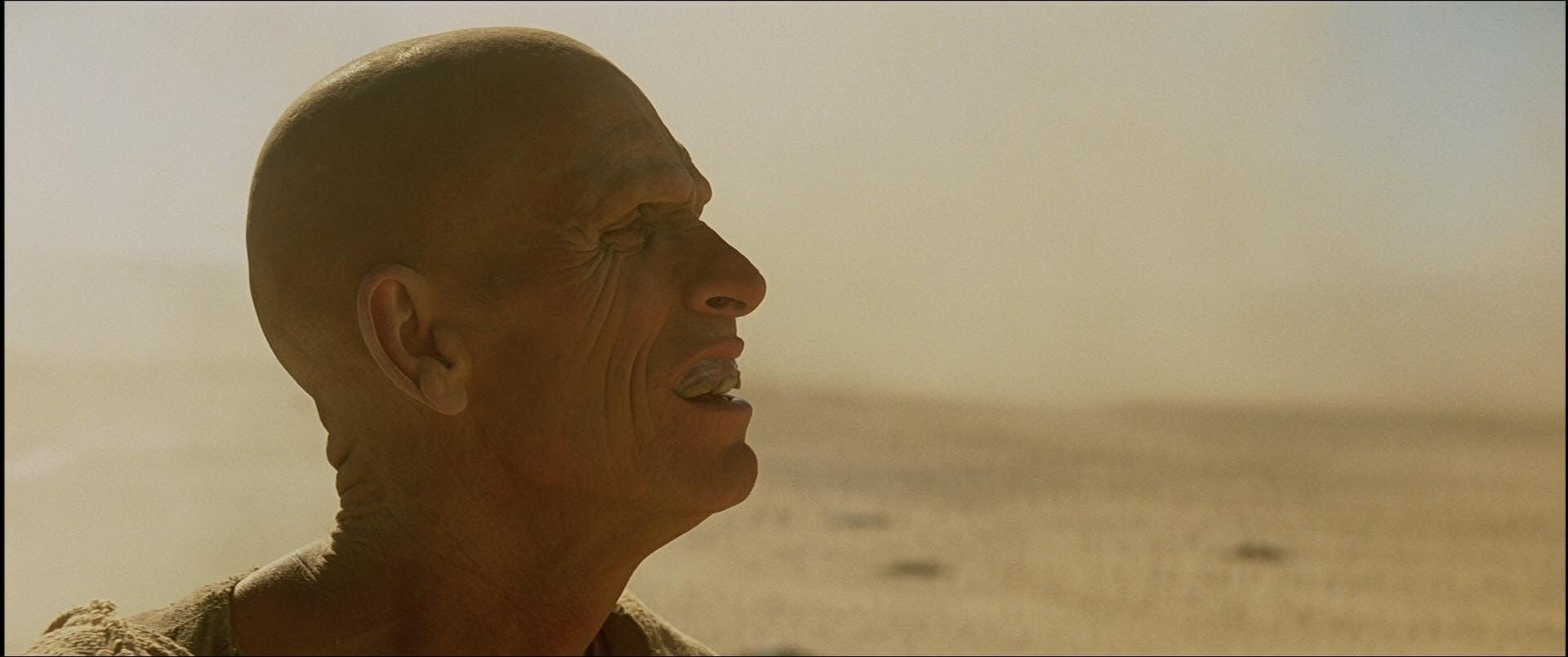
In addition to our beloved Original Series cast members, there were other familiar faces in the cast that popped up more than once in the Star Trek franchise, including two Klingon Chancellors.
David Warner, who played St. John Talbot in The Final Frontier , would play both Chancellor Gorkon in Star Trek VI: The Undiscovered Country , and Gul Madred, the Cardassian who tortured Picard in TNG’s “Chain of Command.”
Charles Cooper, Klingon General Korrd, would go on to play Chancellor K’mpec in two episodes of Star Trek: The Next Generation — in the same cloak he’d worn in the movie. Another memorable TNG guest star, George Murdock, aka “God,” would play Admiral Hanson in the TNG two-parter (and season 3 cliffhanger) “Best of Both Worlds.”
Rex Holman (J’onn, the very first person you see in the movie), has some old school Trek cred: He played Morgan Earp in the Original Series third season episode “Spectre of the Gun.”
And there are more! Look up Todd Bryant and Spice Williams next time you’re on a Trek trivia mission.
The movie would’ve shown an addition to Mount Rushmore
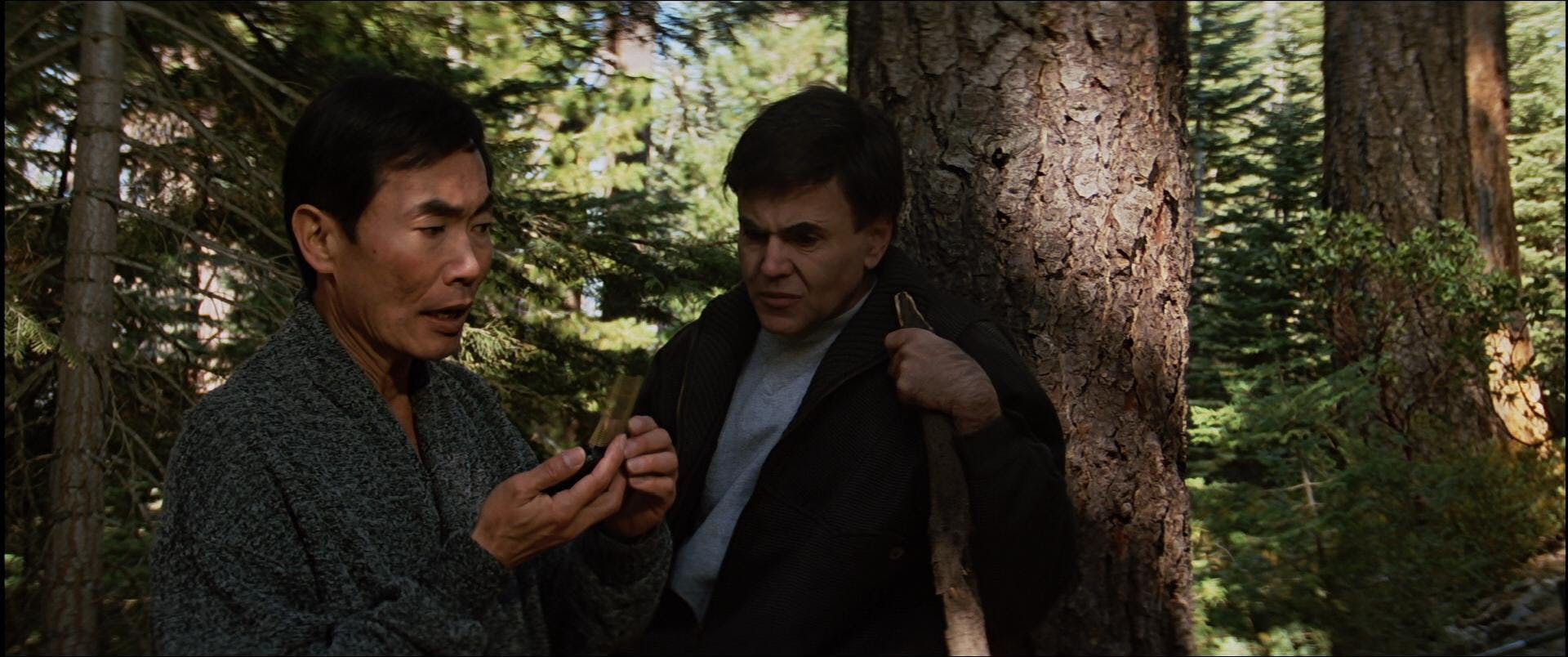
With the focus on the Kirk-Spock-McCoy trinity, Sulu and Chekov didn’t get a whole lot to do in this movie. (Walter Koenig even told the authors of The 50-Year Mission: The First 25 Years that he only worked on it for eight days.) They did have another scene together that was cut, which took place in front of Mount Rushmore.
“You’ve seen one national park, you’ve seen them all,” says Chekov, but in this case, he’s wrong. In the future — at least in the future of Star Trek V — there’s a fifth head there, and it belongs to a Black female president, named Sarah Susan Eckert in Dillard’s novelization.
That fan dance was more controversial than you think
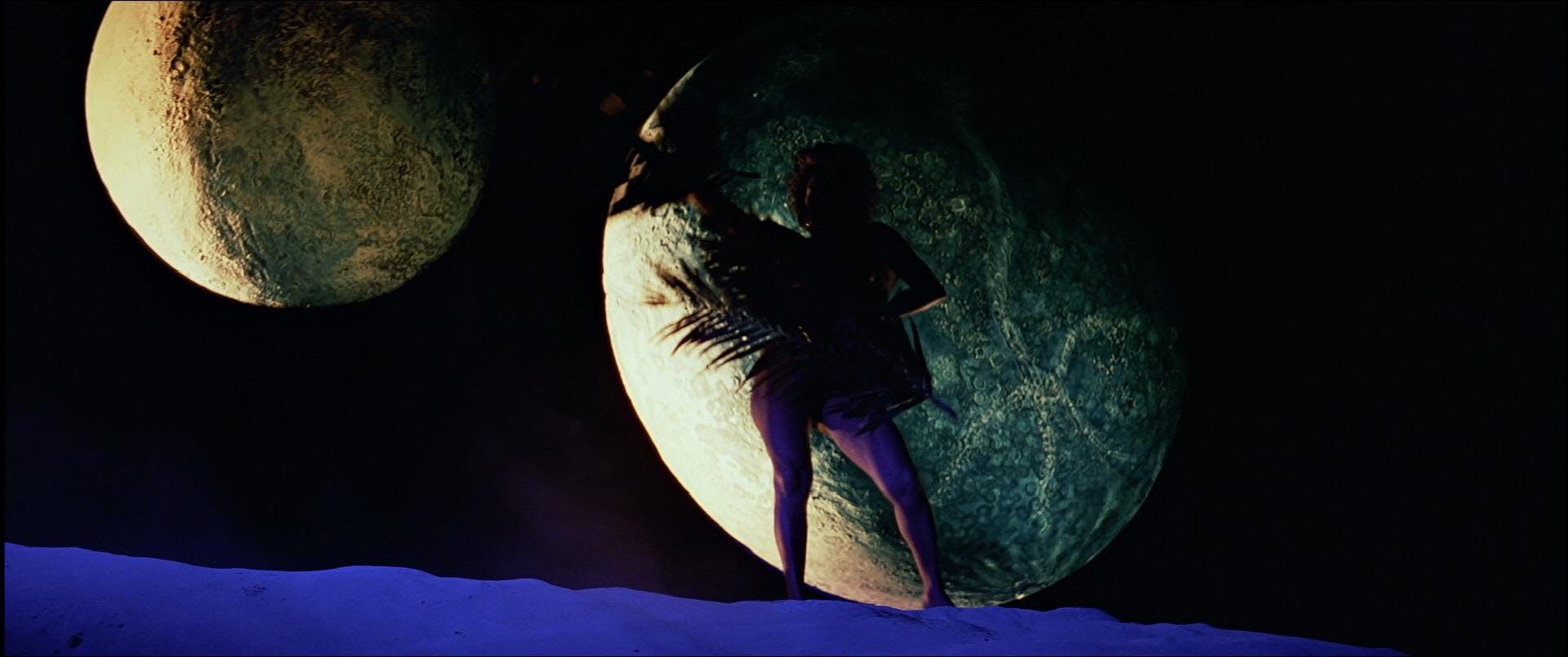
For better or for worse, there’s a strange scene in the movie where Uhura must do a sensual “fan dance” in order to distract Sybok’s soldiers. Screenwriter David Loughery suggested it as a joke and was shocked when they loved the idea. “Nichelle has great gams, so anybody would stop and take a look, and that’s all we needed,” said Shatner in the DVD extras.
Nichelle Nichols was happy to do it. She was an accomplished singer and dancer who had toured with Duke Ellington and Lionel Hampton,and was looking forward to having more of her singing in Star Trek. Shatner and Bennett told her that the final decision on what vocals would be used was Jerry Goldmsith’s, but they’d let her know what he decided, and then… they didn’t. She wrote in her book Beyond Uhura that she showed up for a looping session and Shatner, assuming she’d been filled in, said it was too bad “about the music,” and that he knew she “would have done just as good a job.” The song would be performed by a group called Hiroshima. Nichols was crushed, and ultimately disappointed by the scene in the final film.
For those wondering about Nichols fan dance costume, she revealed during a fan Q&A that “I was wearing… me. And, of course, I had a G-string on.”
The key to the film’s distinctive look: location, location, location
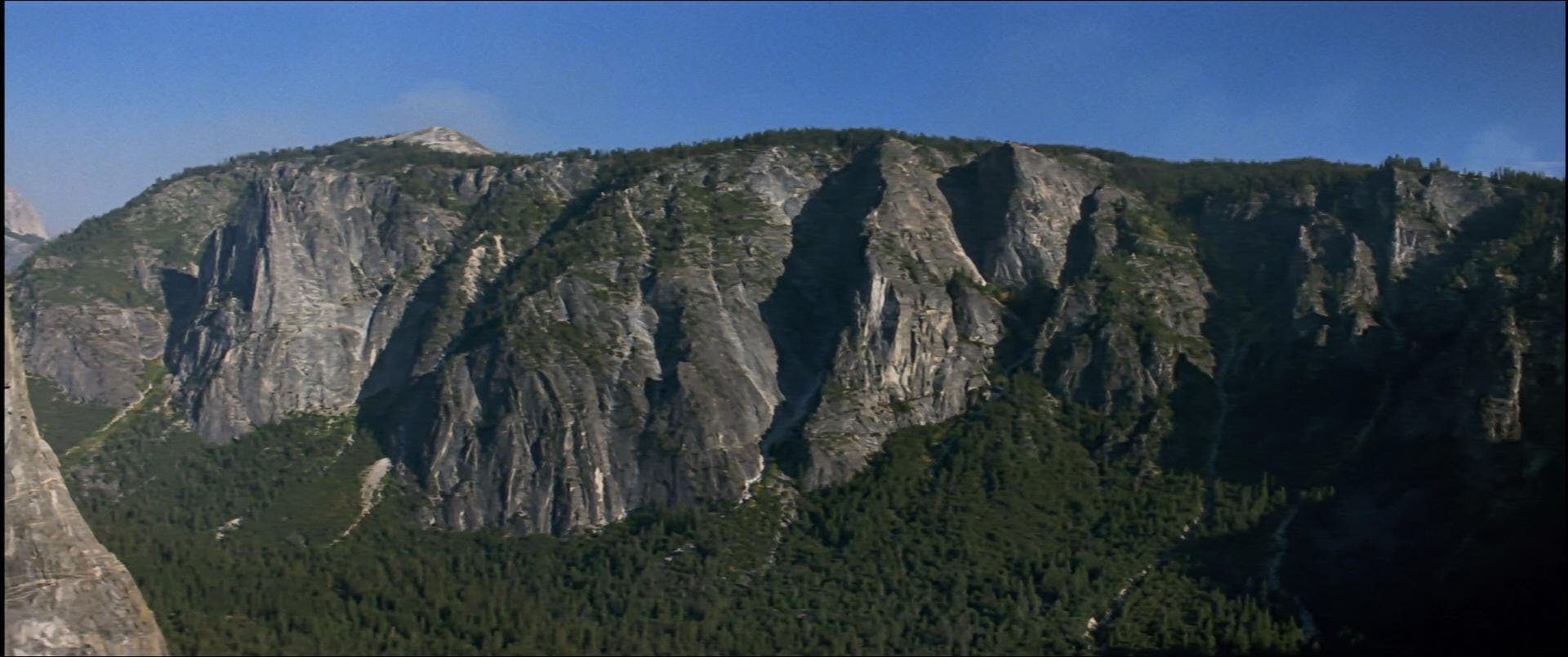
The locations were challenging, but worth the effort. The climbing scenes were done at Yosemite National Park. Shatner loved free climbing and was in his element, but the famous giant rock formation El Capitan presented a problem for the crew, who couldn’t get close enough to do closeups. A wall was built in a parking lot for those shots. But that free fall was really performed by stuntman Kenny Bates, earning him the credit for the highest descender fall in the United States at that time.
The Nimbus III scenes were filmed in Owens Dry Lake in the Mojave Desert. The location was also used in the movie Tremors, starring Kevin Bacon. Six degrees achieved!
As for Ska Ka Ree, that was filmed at the Trona Pinnacles in central California. This unique geological formation was a popular location, also seen in movies like Battlestar Galactic a and the original Planet of the Apes , as well as the video for Rihanna’s “Sledgehammer,” released to promote the movie Star Trek Beyond .
The campfire scenes were the last ones filmed
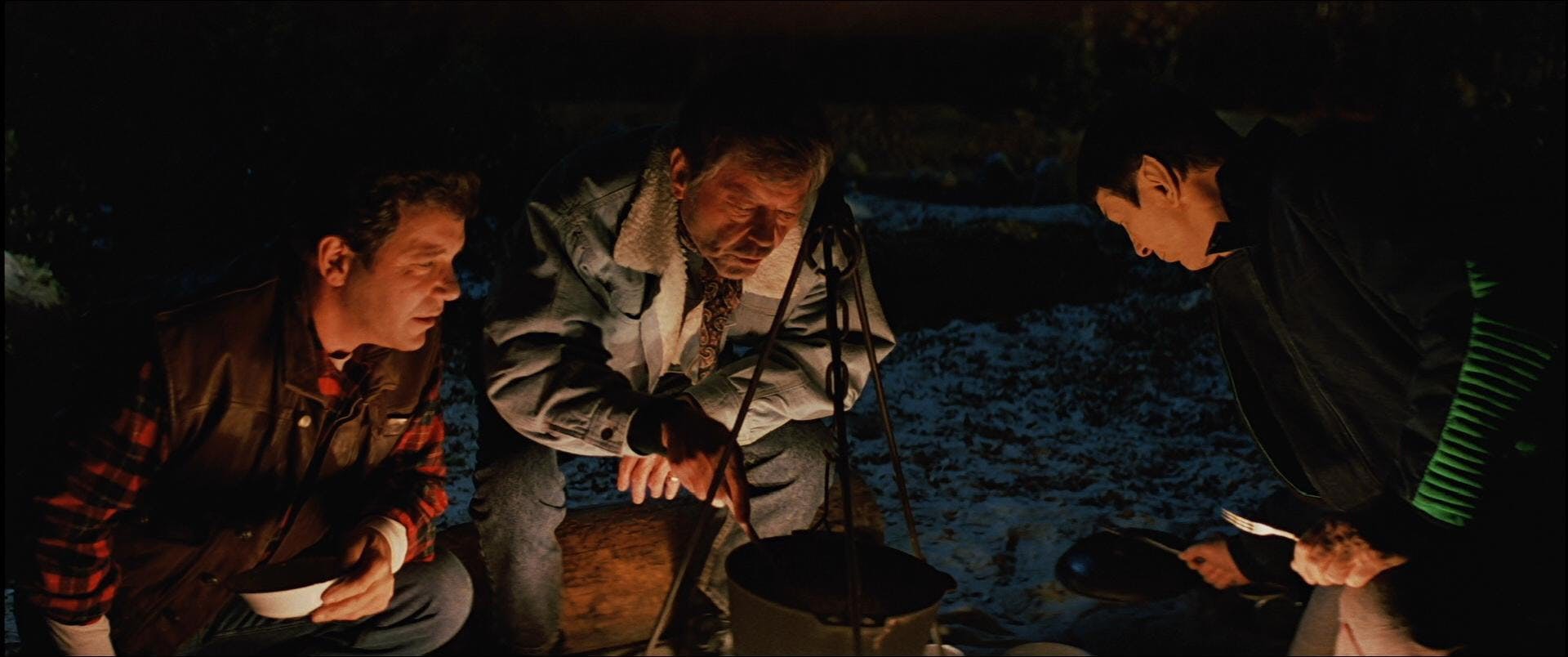
To make those scenes feel special, it was the final sequence on the schedule. With all of the dust-ridden deserts and giant cliffs already behind them, the last days of production were spent around the campfire, on a set on the Paramount lot. There wasn’t time to put tops on the trees, so Shatner had to keep the shots tighter than he would’ve liked, but he’s still happy with how everything turned out. They had a small celebration with champagne and cake after the last shot was done.
There’s a backstory to Spock’s “marsh melons” mistake

About those campfire scene marshmallows… they came from Kraft, as did Spock’s dispenser. A tie-in product was created so fans could have their very own marshmallow dispensers (via mail order; this was 1989). And yes, you can still find them on eBay.
But here’s the real question: Why does Spock mistakenly call them “marsh melons”? In J.M. Dillard’s novelization of the movie, McCoy knows that Spock is going to do extensive pre-camping research, so he pranks him by getting a computer tech to change “marshmallows” to “marsh melons” everywhere they’re referenced. That’s also why he gets such a kick out of watching Spock say it.
They made a few mistakes
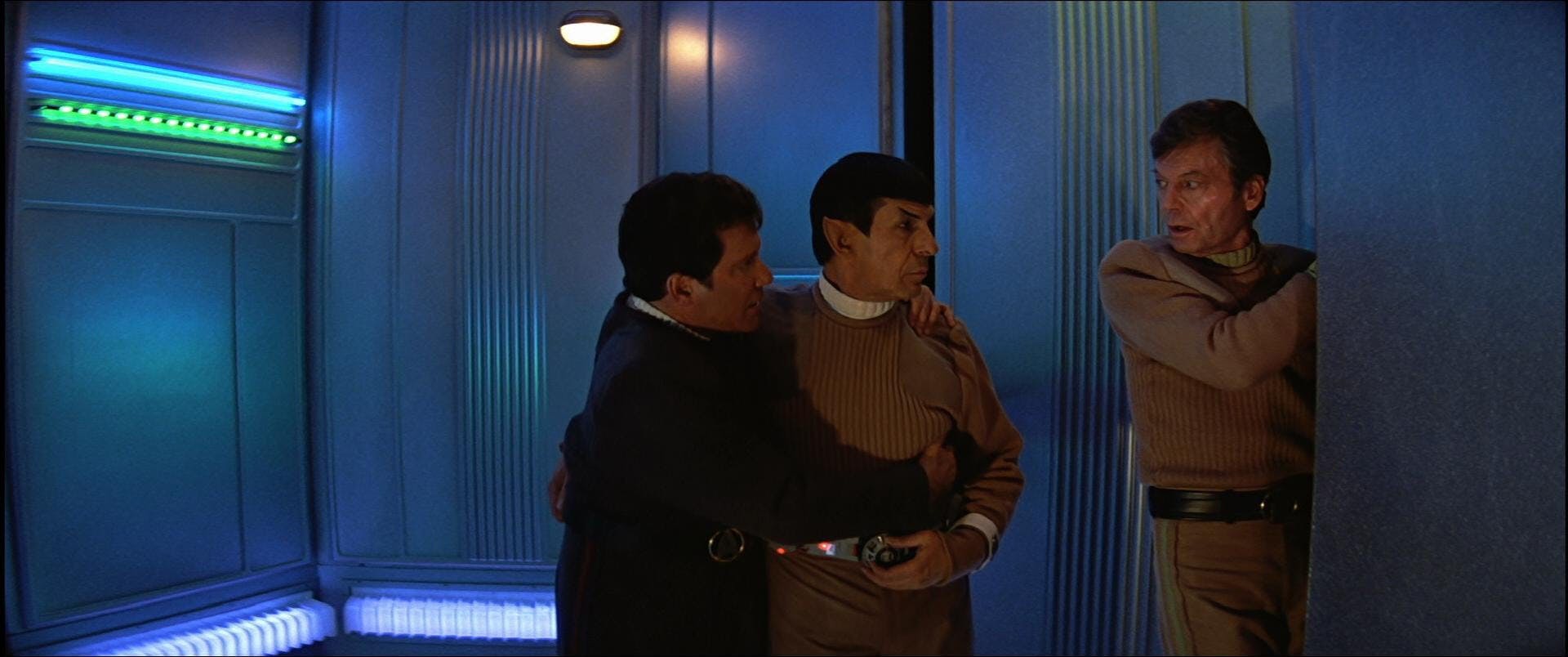
This wasn’t the first movie with an onscreen blunder, and it won’t be the last. There’s one right at the beginning, when Kirk falls off El Capitan and is rescued by Spock (in his awesome levitation boots) just before hitting the ground. When he starts his fall, he has a scruffy face you’d expect from someone on a camping vacation, but by the time he gets to the bottom, he’s clean-shaven. (Even in the future, that seems like an unlikely shaving method.)
Another one happens when Kirk, Spock, and McCoy are on the run from Sybok’s followers and (once again with help from Spock’s levitation books), they zoom up the turboshaft together. They pass deck 52 twice (oops), then go all the way to 78 when Star Trek lore tells us that the ship only has 23 decks. Not only that, the lowest number is traditionally the highest deck; the bridge atop the saucer section is deck 1. But like the shaving mistake, it doesn’t really affect the story… and wasn’t it worth it just to hear McCoy tell Kirk and Spock, ‘You two go ahead, I’ll wait for the next car”?
And finally…

The movie suffered from budget cuts and numerous setbacks, but those who worked on it still had fun, with “exuberance” being the word most used to describe its enthusiastic director. Shatner took a lot of flak for the film, but he sums up his experience beautifully in the behind-the-scenes doc:
“I was in a joyful act of creation all the time, whether it was working or not… We just had a joyful time making a film.”
(And for another fascinating look at Star Trek V , check out Trek V Wrapped Filming 30 Years Ago by Maria Jose and John Tenuto.)
Laurie Ulster (she/her) is a freelance writer and a TV producer who somehow survived her very confusing adolescence as the lone female Star Trek fan in middle school. She's a writer/editor and was the Supervising Producer on After Trek.
Get Updates By Email

19 Facts About Star Trek
Written by Jill Matheson
Modified & Updated: 17 May 2024
Reviewed by Jessica Corbett

Star Trek, a groundbreaking science fiction franchise, has captured the imaginations of audiences worldwide for over five decades. From its humble beginnings on television to its expansion into films, spin-offs, and a dedicated fanbase, Star Trek has left an indelible mark on popular culture. The franchise, created by Gene Roddenberry, is renowned for its futuristic vision, compelling characters, and thought-provoking exploration of societal issues. As we delve into 19 fascinating facts about Star Trek, we'll uncover the intricate web of creativity, innovation, and influence that has propelled this iconic series to the forefront of the sci-fi genre. Join us on a journey through the cosmos of Star Trek, where we'll encounter remarkable trivia, behind-the-scenes anecdotes, and a deep dive into the enduring legacy of this beloved universe. Boldly go where no one has gone before as we uncover the captivating secrets and enduring appeal of Star Trek.
Key Takeaways:
- Star Trek, created by Gene Roddenberry, has inspired real-world technology and a passionate fan community, showcasing the enduring impact of its visionary storytelling and diverse characters.
- With its timeless message of unity and exploration, Star Trek continues to inspire hope for a better future, transcending generations and inviting viewers of all ages to boldly explore the frontiers of imagination.
Star Trek was created by Gene Roddenberry.
Gene Roddenberry, a visionary writer and producer, conceived the groundbreaking science fiction series, Star Trek. His innovative approach to storytelling and his aspiration for a utopian future resonated with audiences worldwide. The show's exploration of social issues through the lens of space exploration captivated viewers and left an indelible mark on popular culture.
The first episode of Star Trek aired on September 8, 1966.
Titled "The Man Trap," the inaugural episode of Star Trek introduced audiences to the iconic characters of Captain James T. Kirk , Mr. Spock, and Dr. Leonard "Bones" McCoy. The show's debut marked the beginning of a cultural phenomenon that continues to thrive to this day.
The USS Enterprise is a central element of the Star Trek franchise.
The USS Enterprise, NCC-1701, served as the primary setting for the original Star Trek series. This starship , under the command of Captain Kirk, embarked on numerous interstellar adventures, solidifying its status as an enduring symbol of exploration and discovery.
The Klingon language was developed for Star Trek.
Marc Okrand, a linguist, created the Klingon language, known as "tlhIngan Hol," for the Star Trek films . This constructed language has gained a dedicated following, with enthusiasts worldwide learning to speak and write in Klingon.
Leonard Nimoy's iconic portrayal of Mr. Spock popularized the Vulcan salute.
Leonard Nimoy's portrayal of the logical and stoic Mr. Spock endeared him to fans, and his use of the Vulcan salute, accompanied by the phrase "Live long and prosper," became a beloved symbol of the Star Trek franchise.
Star Trek: The Next Generation premiered in 1987.
This sequel series introduced a new generation of characters and continued to explore the vast reaches of space, garnering a dedicated fan base and expanding the Star Trek universe.
The Star Trek film franchise has produced numerous blockbuster movies.
Since the release of "Star Trek: The Motion Picture" in 1979, the film franchise has captivated audiences with its epic storytelling, dazzling visual effects, and enduring themes of unity and exploration.
The Star Trek fandom is known for its passionate and dedicated community.
Trekkies, as Star Trek enthusiasts are affectionately called, have formed a vibrant and inclusive community, celebrating the franchise through conventions, fan fiction, and charitable activities.
Star Trek has inspired real-world technological advancements.
The series' futuristic technology, including communicators, tricorders, and replicators, has influenced the development of modern devices such as smartphones, medical scanners , and 3D printers, showcasing the impact of science fiction on real-world innovation.
Star Trek: Deep Space Nine broke new ground with its serialized storytelling.
This spin-off series diverged from the episodic format of its predecessors, embracing long-form storytelling and complex character arcs, setting a new standard for narrative depth within the Star Trek universe.
Star Trek: Voyager featured the first female lead character in a Star Trek series.
Captain Kathryn Janeway, portrayed by Kate Mulgrew, became a trailblazing figure in the franchise, embodying strength, intelligence, and compassion as she led her crew through uncharted territories in the Delta Quadrant.
The Borg, a cybernetic alien species, made their memorable debut in Star Trek: The Next Generation.
This formidable adversary, known for their catchphrase "Resistance is futile," left an indelible mark on the Star Trek mythos, embodying the relentless pursuit of technological perfection at the cost of individuality.
Star Trek: Enterprise delved into the early history of space exploration.
Set before the formation of the United Federation of Planets, this series chronicled humanity's first ventures into deep space, laying the groundwork for the future alliances and conflicts depicted in the original Star Trek series.
Star Trek: Discovery introduced a diverse and compelling cast of characters.
With its emphasis on inclusivity and representation, Star Trek: Discovery showcased a diverse ensemble, reflecting the franchise's commitment to portraying a multitude of perspectives and experiences.
The Star Trek reboot films brought a fresh perspective to the franchise.
Directed by J.J. Abrams, the reboot films revitalized the Star Trek universe for a new generation, blending action-packed sequences with the enduring camaraderie of the iconic characters.
Star Trek: Picard marked the return of the legendary Jean-Luc Picard.
Sir Patrick Stewart reprised his role as Jean-Luc Picard in this series, offering fans a poignant exploration of the beloved character's later years and his continued dedication to the principles of Starfleet.
Star Trek continues to inspire hope for a better future.
Through its enduring themes of unity, exploration, and the triumph of the human spirit, Star Trek remains a source of optimism and inspiration, reminding audiences of the boundless potential for progress and understanding in the cosmos.
The Star Trek legacy extends across multiple mediums.
From television and film to literature, video games, and beyond, the Star Trek franchise continues to expand its narrative tapestry, inviting audiences to embark on voyages of imagination and discovery across various storytelling platforms.
Star Trek's impact transcends generations.
With its timeless message of embracing diversity, fostering empathy, and striving for a harmonious future, Star Trek has left an indelible legacy that resonates across generations, inviting viewers of all ages to boldly explore the frontiers of imagination and possibility.
In conclusion, the "19 Facts About Star Trek" showcase the enduring legacy and cultural impact of this iconic franchise, which continues to inspire and captivate audiences with its boundless spirit of exploration and its unwavering commitment to envisioning a future where humanity's potential knows no bounds.
In conclusion, Star Trek has left an indelible mark on popular culture, captivating audiences with its visionary storytelling, compelling characters, and thought-provoking themes. The franchise's enduring legacy is a testament to its ability to inspire imagination and foster a sense of unity among fans worldwide. As we continue to explore the final frontier alongside the iconic crew of the USS Enterprise, the impact of Star Trek on the realms of science fiction and beyond remains unparalleled.
What is the significance of the USS Enterprise in Star Trek? The USS Enterprise serves as a central element in the Star Trek franchise, symbolizing exploration, discovery, and the boundless potential of humanity's future in space. As the flagship vessel of Starfleet, it embodies the spirit of adventure and represents the enduring optimism of the series.
How has Star Trek influenced science fiction and popular culture? Star Trek has profoundly influenced the science fiction genre and popular culture as a whole, introducing groundbreaking concepts such as warp drive, universal translators, and diverse representation in media. Its impact extends to inspiring real-world technological advancements and fostering a global community of devoted fans.
Star Trek's enduring legacy continues to captivate fans worldwide. Explore more fascinating facts about iconic Star Trek movies, such as the thrilling adventures in Star Trek: Insurrection, the Borg's menacing presence in Star Trek: First Contact, and the emotional passing of the torch in Star Trek: Generations. Each film offers unique insights into the beloved characters, expanding the Star Trek universe and delivering unforgettable moments that have become ingrained in pop culture.
Was this page helpful?
Our commitment to delivering trustworthy and engaging content is at the heart of what we do. Each fact on our site is contributed by real users like you, bringing a wealth of diverse insights and information. To ensure the highest standards of accuracy and reliability, our dedicated editors meticulously review each submission. This process guarantees that the facts we share are not only fascinating but also credible. Trust in our commitment to quality and authenticity as you explore and learn with us.
Share this Fact:
More From Forbes
‘star trek: discovery’ co-showrunner teases the final episodes and her message for fans.
- Share to Facebook
- Share to Twitter
- Share to Linkedin
Co-showrunner Michelle Paradise with her "Star Trek: Discovery" cast and crew.
For five seasons, Star Trek: Discovery has taken audiences on the ride of a lifetime. With its series finale now in sight, I sat down with executive producer and co-showrunner Michelle Paradise at SeriesFest in Denver, Colorado to discuss the beloved show’s journey and what fans should expect from this ever-expanding television universe on Paramount Plus, before we say a proper farewell to the U.S.S. Discovery.
So for starters, what has Paradise enjoyed most about the evolution of Star Trek: Discovery , since it first premiered in September 2017?
“That’s a really great question,” Paradise said. “I have loved being a part of it. I joined halfway through season two, and it was starting to know what it was and it’s really found its way. I’ve really enjoyed the character arcs and getting to take them all to these different places. It’s also hard for me to separate out the evolution of the show from my evolution on the show and stepping into co-running it with [co-showrunner] Alex [Kurtzman] and starting to take over more of that in later seasons. It’s been the highlight of my career.”
Mary Wiseman as Tilly and Blu del Barrio as Adira in "Star Trek: Discovery" episode 7, season 5 - ... [+] streaming on Paramount+.
Paradise is no stranger to television production. She was previously an executive producer on such television projects as Exes & Ohs and The Originals , but I wondered what it might be about her Star Trek: Discovery cast and crew that perhaps feels special.
“It’s like a big family. First of all, our cast is incredible. They’re all insanely talented actors but they’re lovely human beings. They approach one another and they approach the project from just a place of love and respect for one another and for the material, which is always a wonderful place to start. You can’t say enough of [actor] Sonequa [Martin-Green], our number one and the tone that she sets on the show and on the set. We have a lot of folks on the show and the crew who come back, year-after-year. They all really love the world of Trek and they love one another. We try and go bigger and better and bolder every season, and there’s never a feeling of Oh, we can’t do that . It’s always a feeling of How do we do that? ”
Biden Trump Debates What To Know As Trump Pushes For 2 More Faceoffs
When does bridgerton season 3 part 2 come out on netflix see the release schedule, a storm of 3,000 ukrainian bomblets blew up four russian jets at their base in crimea.
Sonequa Martin-Green as Burnham in "Star Trek: Discovery" streaming on Paramount+.
Since the original Star Trek series first premiered on television in 1966, the Star Trek story and fictional sci-fi universe has evolved into several iterations, including Star Trek: The Next Generation , Deep Space Nine , Voyager , Enterprise , Strange New Worlds and Picard - not to mention the numerous Star Trek movies over many decades, including the three recent blockbuster films, starring Chris Pine, Zoe Saldana and Zachary Quinto, with another sequel in the works.
Throughout all of these years, Star Trek fans have remained quite loyal and vocal, both when they love a story and even when they don’t. So, how does Paradise and her Star Trek: Discovery creative team try to appease Trek fans, but also not allow the chatter to stop them from taking on some creative risks?
Wilson Cruz as Culber and Anthony Rapp as Stamets in "Star Trek: Discovery" episode 6, season 5 - ... [+] streaming on Paramount+.
Paradise said, “I think the best way to answer that is we always try to honor what Trek is - where it came from, what is the DNA of any Trek series, which of course goes back to the original series, and then also honoring what is this version of Trek and knowing that it’s our job to make the best version of Discovery . Someone who loves Discovery may not love Strange New Worlds or someone who loves Strange New Worlds may not love Discovery. By design, these are all very different shows. To a certain degree, it has to be okay that not everyone is going to love this iteration. We always feel like if we can do justice to the franchise as a whole - what it means, do justice to the characters and do our best version of Discovery , then we will have succeeded.”
Ever since the WGA and SAG-AFTRA strikes ended late last year, there have been signs of movement and optimism within the entertainment industry, but also a sense of some standstill with television and film productions. So, what is Paradise seeing around the current state of Hollywood?
“I think it depends on who you talk to,” Paradise said. “It feels a bit like a mixed bag to me. There are a lot of people who are still very much struggling - writers, crew members, directors - because things have not picked up in the way that they would normally at this particular time of year. By in large, there’s not really a pilot season, as we used to know it. That’s very difficult for people. Of course, there’s still a lot of wonderful opportunities, but it seems like the compression that happened - it’s the combo platter of the [Covid-19] pandemic and the strikes, just after that. It does feel condensed - there are fewer things but I feel like, to some degree, that had to happen because in the big balloon of streaming, that in retrospect, it doesn’t feel like it was necessarily sustainable. Hopefully it will ease up, sooner than later, and kind of calm down because there’s still a lot of people who are struggling to get back into work right now and I feel for them - it’s hard.”
On more of a positive note, when asked what Paradise is enjoying most about the television landscape today, she says that she feels there is a lot that can be done, applauding the way that every week, Star Trek: Discover y is a “cinematic storytelling into television,” though she admits that the visual design of Discovery is not sustainable for every network and studio.
While our real world faces divisive times with war, political unrest and other conflicts, I wondered if Paradise and her team keep in mind the real-life issues occurring, when crafting its stories for the screen on Star Trek: Discovery .
Mary Wiseman as Tilly, June Laporte as Ravah and Wilson Cruz as Dr. Culber in "Star Trek: Discovery" ... [+] episode 6, season 5 - streaming on Paramount+.
“That comes from just the DNA of the show itself. The original series did not shy away from what was happening societal at that time. It did not shy away from tackling those things in the way that it could. That’s one of the cool things about sci-fi - aliens can stand-in for another culture, different relationships can stand-in for whatever is happening in society at the time. That’s kind of baked into any Trek show, is that reflection of what’s happening in the world at that time via sci-fi and the different ways we could do it.”
Paradise added: “In Discovery , we were very much aware of that and very thoughtful about what are the types of stories we want to tell, how does that reflect certain things that are going on. Trek means so much to so many people and where people are actively looking to Trek to reflect themselves in some way or actively looking to Trek as an answer to what’s happening in society and for hope that, as divisive as things are right now, as challenging around the world and in our country, that there is hope and we can overcome it with our better selves.”
Blu del Barrio as Adira, Tig Notaro as Jett Reno and Mary Wiseman as Tilly in "Star Trek: Discovery" ... [+] episode 7, season 5 - streaming on Paramount+.
When asked about what fans can expect ahead in the remaining episodes of Star Trek: Discovery , which drop every Thursday during this final season, Paradise teases that fans “might see more of our bad guys this season.” She added: “We did not going into the season [knowing] that this would be our last season. We’re so fortunate - CBS Studios and Paramount Plus gave us the opportunity, after the fact, to go shoot some additional material, and I feel like the thing I just want to keep reiterating for fans of the show is it has a proper ending. Our Discovery is not going to end on a cliffhanger of Are they all going to die? and then we never find out. It was worth the investment and I do think when people finish the season/series, they will feel like this season - again, we didn’t know going in - but it does feel like if you didn’t know that, you would think we knew going in because of what we’re doing thematically and where our characters go. So, I think people will feel very satisfied.”
As the conversation with Paradise concluded, she was left with one last question: For Star Trek: Discovery fans, people who have followed these five seasons - as they soon finish these final episodes, what message do you as a co-showrunner want to say these people, after investing their time in the series over the past seven years and falling in love with these characters?
Mary Wiseman, Sonequa Martin-Green and Michelle Paradise.
“I just would want to say thank you. There is no Discovery without the fans and they are always so loving and supportive and passionate, even when they don’t like what we’re doing, they’re passionate. As writers and creators and actors and the directors, we love that! We love that passion and their passion means so much to us.”
Paradise added: “It was a gift. Hopefully, we’ll all get to do it again someday.”

- Editorial Standards
- Reprints & Permissions
Join The Conversation
One Community. Many Voices. Create a free account to share your thoughts.
Forbes Community Guidelines
Our community is about connecting people through open and thoughtful conversations. We want our readers to share their views and exchange ideas and facts in a safe space.
In order to do so, please follow the posting rules in our site's Terms of Service. We've summarized some of those key rules below. Simply put, keep it civil.
Your post will be rejected if we notice that it seems to contain:
- False or intentionally out-of-context or misleading information
- Insults, profanity, incoherent, obscene or inflammatory language or threats of any kind
- Attacks on the identity of other commenters or the article's author
- Content that otherwise violates our site's terms.
User accounts will be blocked if we notice or believe that users are engaged in:
- Continuous attempts to re-post comments that have been previously moderated/rejected
- Racist, sexist, homophobic or other discriminatory comments
- Attempts or tactics that put the site security at risk
- Actions that otherwise violate our site's terms.
So, how can you be a power user?
- Stay on topic and share your insights
- Feel free to be clear and thoughtful to get your point across
- ‘Like’ or ‘Dislike’ to show your point of view.
- Protect your community.
- Use the report tool to alert us when someone breaks the rules.
Thanks for reading our community guidelines. Please read the full list of posting rules found in our site's Terms of Service.
- My Quiz Activity
- Newsletters
- Sports Betting
- MY FAVORITES
- Add Sports/Teams
- Arizona Cardinals
- Atlanta Falcons
- Baltimore Ravens
- Buffalo Bills
- Carolina Panthers
- Chicago Bears
- Cincinnati Bengals
- Cleveland Browns
- Dallas Cowboys
- Denver Broncos
- Detroit Lions
- Green Bay Packers
- Houston Texans
- Indianapolis Colts
- Jacksonville Jaguars
- Kansas City Chiefs
- Las Vegas Raiders
- Los Angeles Chargers
- Los Angeles Rams
- Miami Dolphins
- Minnesota Vikings
- New England Patriots
- New Orleans Saints
- New York Jets
- New York Giants
- Philadelphia Eagles
- Pittsburgh Steelers
- San Francisco 49ers
- Seattle Seahawks
- Tampa Bay Buccaneers
- Tennessee Titans
- Washington Commanders
- Arizona Diamondbacks
- Atlanta Braves
- Baltimore Orioles
- Boston Red Sox
- Chicago White Sox
- Chicago Cubs
- Cincinnati Reds
- Cleveland Guardians
- Colorado Rockies
- Detroit Tigers
- Houston Astros
- Kansas City Royals
- Los Angeles Angels
- Los Angeles Dodgers
- Miami Marlins
- Milwaukee Brewers
- Minnesota Twins
- New York Yankees
- New York Mets
- Oakland Athletics
- Philadelphia Phillies
- Pittsburgh Pirates
- San Diego Padres
- San Francisco Giants
- Seattle Mariners
- St. Louis Cardinals
- Tampa Bay Rays
- Texas Rangers
- Toronto Blue Jays
- Washington Nationals
- Atlanta Hawks
- Boston Celtics
- Brooklyn Nets
- Charlotte Hornets
- Chicago Bulls
- Cleveland Cavaliers
- Dallas Mavericks
- Denver Nuggets
- Detroit Pistons
- Golden State Warriors
- Houston Rockets
- Indiana Pacers
- Los Angeles Clippers
- Los Angeles Lakers
- Memphis Grizzlies
- Milwaukee Bucks
- Minnesota Timberwolves
- New Orleans Pelicans
- New York Knicks
- Oklahoma City Thunder
- Orlando Magic
- Philadelphia 76ers
- Phoenix Suns
- Portland Trail Blazers
- Sacramento Kings
- San Antonio Spurs
- Toronto Raptors
- Washington Wizards
- Anaheim Ducks
- Arizona Coyotes
- Boston Bruins
- Buffalo Sabres
- Calgary Flames
- Carolina Hurricanes
- Chicago Blackhawks
- Colorado Avalanche
- Columbus Blue Jackets
- Dallas Stars
- Detroit Red Wings
- Edmonton Oilers
- Florida Panthers
- Los Angeles Kings
- Minnesota Wild
- Montreal Canadiens
- Nashville Predators
- New Jersey Devils
- New York Islanders
- New York Rangers
- Ottawa Senators
- Philadelphia Flyers
- Pittsburgh Penguins
- San Jose Sharks
- Seattle Kraken
- St. Louis Blues
- Tampa Bay Lightning
- Toronto Maple Leafs
- Vancouver Canucks
- Vegas Golden Knights
- Washington Capitals
- Winnipeg Jets
- Entertainment Home
- Lifestyle Home
- More Sports
- YB on Facebook
- YB on Twitter
- YB on Flipboard
- Privacy Policy
- Terms of Service
- College Basketball
- College Football
- Entertainment
- Formula One
- Horse Racing
- Motor Sports
- Premier League
- Sports Business
- Track and Field
- More Sports ▸
Entertainment News
STAR TREK 500 from IDW Sets Up Massive Trek Crossover Event for 2025
For almost as long as there has been Star Trek on TV, there have been Star Trek comics. And these days, IDW Entertainment has been carrying the flag of Starfleet proudly. Now, the landmark 500th issue of Star Trek is arriving. This oversized anthology comic will feature seven stories from different eras of Star Trek . It will even be a prelude to a big Trek universe crossover event planned for 2025. It’ll include creatives like Patton Oswalt, Chris Cantwell, Mags Visaggio, and more. Here’s the official solicitation for the 500th IDW Star Trek issue , going on sale September 4, 2024:
Celebrate IDW’s 500th issue of Star Trek comics (and an early Star Trek Day!) with this landmark oversized anthology issue! This collection of seven short stories spans through fan-favorite eras of the beloved franchise from Lower Decks to Strange New Worlds , legacy characters from The Next Generation and the original series, written and illustrated by Star Trek comics veterans and new voices alike. Plus, don’t miss out on the prelude to 2025’s big Star Trek and Defiant comic crossover event written by Jackson Lanzing, Collin Kelly, and Christopher Cantwell!
Star Trek #500 has four different variant covers. They showcase the crews from 58 years of Trek , since the days of Kirk , to Strange New Worlds . Cover A is by Joëlle Jones, with Cover B by Jake Bartok. JK Woodward provides Cover C, with a Cover Variant by Chris Fenoglio. You can preview them all down below, along with quotes from the various Star Trek #500 creators.
Here’s what Heather Antos, IDW group editor, had to say about the upcoming special issue of Star Trek:
The sending to print of any single comic is a feat in and of itself. To hit a landmark like 500 issues with any franchise is a true accomplishment to be celebrated. This Star Trek Day IDW is excited to present not only a look back at some of our favorite characters and series from over the years, but also a look forward on what is to come in the future for our Eisner-nominated Star Trek and Defiant series. If you’re only getting one Star Trek book this year, this is not one to miss out on!
In addition, Jackson Lanzing, Chris Cantwell, and Collin Kelly, who are co-writing the prelude for the big Star Trek event coming in 2025, shared the following sentiments.
Jackson Lanzing : “In Star Trek #400, we began a journey that changed the face of Star Trek comics and carved out a whole new line for readers of every generation. I don’t think any of us could have imagined what would follow. From all the incredible interlocked series to the first Star Trek summer event to the first Eisner nominations in Starfleet’s history. Now, one hundred issues later… it’s time to push things even further.”
Christopher Cantwell: “Just like our prelude story in the Star Trek Free Comic Book Day issue last year, #500 promises one hell of a tease of things to come next summer in 2025. Both books are building to a crossover event that will truly redefine the Star Trek universe from within its very DNA. There are a boatload of reasons why you’ll want to pick up #500, but the little ticking time bomb Jackson, Collin, and I have planted in its pages will get you anxious for what’s to come.”
Collin Kelly: “We’ve been planting the seeds of this event since the very beginning, a culmination and conflagration that will ignite the cosmos in a crisis of galactic proportions. Not only crossing our titles, but linking to both Nemesis and Star Trek: Picard . Our aim is nothing less than creating the single greatest challenge that Sisko, Worf, and their respective crews have ever faced; a mission that starts when the universe ends.”
Professional nerds (and professional jokers) Patton Oswalt and Jordan Blum are also beaming aboard. With tongues firmly planted in their cheeks, they had this to say about their contributions to Star Trek #500. Oswalt joked “I can’t wait to begin writing this story. Sitting down to watch at least 3 of the original episodes and 2 of the movies. I’m so excited to experience this world for the first time!”
Meanwhile, Blum added “It’s an honor to be a part of this historic Star Trek moment. I’ve been a diehard fan ever since Luke Skywalker first flew the Enterprise into the trenches of Arrakis. Our story will obsessively investigate the psychology and physiology of Tribbles in a way no one has ever deemed worth it. It’s like Mr. Spock always says ‘There is no spoon.’ Truly.”
Star Trek #500 beams down to your local comic shop on September 4, 2024.
This article first appeared on Nerdist and was syndicated with permission.
More must-reads:
- The 20 best films about pilots
- The 20 best sci-fi movie sequels
- Iconic film and TV homes (and where they are located)
Trending in Entertainment
Customize your newsletter.

Get the latest news and rumors, customized to your favorite sports and teams. Emailed daily. Always free!


IMAGES
VIDEO
COMMENTS
Star Trek 2009 is dedicated to Gene Roddenberry and his wife Majel Barrett. [14] According to Spock's mother, Amanda, humans cannot pronounce Spock's full name. It is written as "S'chn-T Gai Spock, son of S'chn-T gai Sarek (of Skon and Solkar) of Vulcan. [4] Shatner's first wife left him after Star Trek: The Original Series was ...
Die-hard Star Trek fans pride themselves on their deep knowledge of whatever series or movie is their favorite-- sometimes even all of them. Thanks to exhaustive sites like Memory Alpha, fans can dig deep for information on guest stars, alien species, and individual episodes of every series, but back in 1966 when The Original Series premiered, not only was there no internet, but the fandom ...
Here are eight ways the show broke new ground. The Center Seat: 55 Years of Star Trek premieres Friday, November 5 at 10/9c on The HISTORY® Channel. 1. A veteran of World War II, Gene Roddenberry ...
Star Trek was created by American writer and producer Gene Roddenberry and chronicles the exploits of the crew of the starship USS Enterprise, whose five-year mission is to explore space and, as stated in the title sequence, "to seek out new life and new civilizations, to boldly go where no man has gone before." The series takes place in the 23rd century, after a benign and advanced alien ...
10. Star Trek 's Vulcan salute is actually a Hebrew blessing. Frazer Harrison, Getty Images. Leonard Nimoy did not create the Vulcan salute that means "Live Long and Prosper" out of thin air for ...
Created by Gene Roddenberry, Star Trek is one of the most popular science-fiction franchises of all time with its 13 films, eight live-action TV shows, and three animated series. It all started ...
9. That famous interracial kiss was originally between Spock and Uhura. Star Trek is well-known for featuring the first interracial kiss on television, between Captain Kirk and Lt. Uhura. But in ...
First of all, Star Trek broke convention because most shows require at least four seasons to be syndicated. By 1986, almost 20 years after it was cancelled, the original run of Star Trek episodes ...
Star Trek is an American science fiction television series created by Gene Roddenberry that follows the adventures of the starship USS Enterprise (NCC-1701) and its crew. It acquired the retronym of Star Trek: The Original Series ( TOS) to distinguish the show within the media franchise that it began. Quick Facts Star Trek: The Original Series ...
September 8, 2016 8:00 AM EDT. W ithout a doubt, one of the most popular and influential television shows from the 1960s is the original Star Trek series, created by Gene Roddenberry. It had ...
The original Star Trek TV series celebrates its 55th anniversary in 2021. Here are some fun facts about the series, which starred William Shatner, Leonard Nimoy, Nichelle Nichols and DeForest Kelley.
Star Trek is an American science fiction media franchise created by Gene Roddenberry, which began with the eponymous 1960s television series and became a worldwide pop-culture phenomenon.Since its creation, the franchise has expanded into various films, television series, video games, novels, and comic books, and it has become one of the most recognizable and highest-grossing media franchises ...
In the original pilot, "The Cage," the first officer was a woman - an unnamed Number One played by Majel Barrett, who later married Star Trek creator Gene Roddenberry. Apparently, test audiences did not like the character and viewers complained that the character was too "pushy" and "annoying."
Charlie Jane Anders. 50 years ago, one of science fiction's greatest series was in development. The original Star Trek series was born out of desperation as much as inspiration, and a recent book ...
When the original Star Trek did end, in 1969, its fans still refused to let it die. At a time before you could record your favourite series or stream episodes when you want, they campaigned for ...
The original series of Star Trek has served as the inspiration for over 125 video games since 1971. These games have spanned across various gaming platforms, including Atari, Commodore 64, Sega ...
Star Trek: The Original Series - originally known simply as Star Trek - features some of the most iconic characters in all of science fiction with the crew of the original USS Enterprise. After its initial pilot episode was rejected by network NBC, Star Trek was massively overhauled with a largely new cast and a more adventurous tone.Star Trek debuted in 1966, and while it was never a ratings ...
Go back in time with these fun facts from the original Star Trek TV series. This video focuses mostly on the history and memories of William Shatner as Capta...
Answer: 3. September 8, 1966 to June 3, 1969. From Quiz: "Star Trek: TOS" Super Quiz. 14 This lovely 19-year blond attempted to kill Kirk and others in order to protect her father from being exposed as a planet's former leader who initiated a massacre that killed thousands. Answer: Lenore Karidian.
8 Lieutenant Commander Leonard 'Bones' McCoy. DeForest Kelley, who portrays Lieutenant Commander Leonard "Bones" McCoy, the Enterprise 's chief medical officer and one of Kirk's confidants, almost didn't appear in the original Star Trek series. When producer Gene Roddenberry offered him the part of Mr. Spock, Kelley declined.
Star Trek is a science fiction television series created by Gene Roddenberry that aired from September 8, 1966 to September 2, 1969. Though the original series was just called Star Trek, it got the nickname Star Trek: The Original Series (ST:TOS or TOS) to make it different from the spinoffs, and from the Star Trek universe or franchise they take up. Set in the 23rd century, the first Star ...
Tribble. Tribbles are a fictional alien species in the Star Trek universe. They were conceived by screenwriter David Gerrold and first appeared in 1967, in the fifteenth episode of the second season of Star Trek: The Original Series, titled "The Trouble with Tribbles". They are depicted as a small, furry, gentle, cute and slow-moving, but ...
Shatner released several albums of speak-singing, directed several "Star Trek" documentaries, and authored several novels. The spry 92-year-old is also an equestrian enthusiast. Read Full Story
In addition to our beloved Original Series cast members, there were other familiar faces in the cast that popped up more than once in the Star Trek franchise, including two Klingon Chancellors.. David Warner, who played St. John Talbot in The Final Frontier, would play both Chancellor Gorkon in Star Trek VI: The Undiscovered Country, and Gul Madred, the Cardassian who tortured Picard in TNG ...
The first episode of Star Trek aired on September 8, 1966. Titled "The Man Trap," the inaugural episode of Star Trek introduced audiences to the iconic characters of Captain James T. Kirk, Mr. Spock, and Dr. Leonard "Bones" McCoy. The show's debut marked the beginning of a cultural phenomenon that continues to thrive to this day.
Since the original Star Trek series first premiered on television in 1966, the Star Trek story and fictional sci-fi universe has evolved into several iterations, including Star Trek: The Next ...
Star Trek #500 has four different variant covers.They showcase the crews from 58 years of Trek, since the days of Kirk, to Strange New Worlds.Cover A is by Joëlle Jones, with Cover B by Jake Bartok
Roger Corman, a colorful producer and director whose low-budget movies - including the original "Little Shop of Horrors" - has died. He was 98.